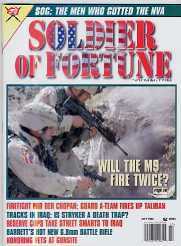
SoldierOfFortuneArticleTRACKSsparksardilloJULY2004.pdf (PDF file)
VIDEO: "We Must Be Invincible" the Iraq debacle in trucks
MAGAZINE ARTICLE: "Tracks" for Iraq

SoldierOfFortuneArticleTRACKSsparksardilloJULY2004.pdf (PDF file)
1st Tactical Studies Group (Airborne) Director Mike Sparks and S2 Intelligence Chief Roy Ardillo take apart the Iraq Humvee/Strykerrrr truck vehicle protection debacle and offer feasible, low-cost M113 Gavin tracked vehicle solutions!
 youtube.com/watch?v=KB-2q1d1oPk
youtube.com/watch?v=KB-2q1d1oPk
Heavy, M1114 HMMWV gun-truck with gunshields unable to go cross-country even in the firm dry areas of Afghanistan have paths that are easily anticipated by enemy landminers. The "Humvee" truck below is in wrong camouflage color in Afghanistan about as good as-a-wheeled-vehicle-its-going-to-get (which is not very good):
A CANNOT GO OFF INTO ITS SNOWY LEFT OR RIGHT WITHOUT GETTING STUCK
B Easy to predict its path to lay bomb and small-arms/RPG ambushes
C WINDSHIELD, 4 WINDOWS, 4 DOORS, open gunner's top at shoulder level highly vulnerable to enemy overmatching fires and grenades/bombs being thrown inside
D Rolls on 4 air-filled rubber tires easily punctured, shredded and set on fire
E Entire flat-bottom body vulnerable to RPG and shaped-charge "EFP" penetration with molten metal spall
EXCLUSIVE! WHEELED TRUCKS REGARDLESS HOW YOU LABEL THEM "LAV" OR "STRYKER" OR "HUMVEE" ARE NOT MOBILE IN ALL TERRAINS
No-Go Terrain For Wheeled trucks: Video Clip of Real, Urbanized World We live in, not Fantasy one of Army mouse-clickers

The narcissist egomaniacs who want to be in wheels because they think they can get by with less maintenance and somehow speed past enemy bombs while looking "sexier" than the people who use tracks that they despise are dying and being maimed in record numbers in Afghanistan and Iraq. Chief culprits are the USMC LAV and Army lightfighter Stryker/Humvee narcissists.
Paul Hornback's Wheels vs. Tracks Article in the March-April 1998 issue of U.S. Army Armor magazine (before it became politicized) Warned Us Against the Wheeled SASO "Nation-Building" Racket EuroFad
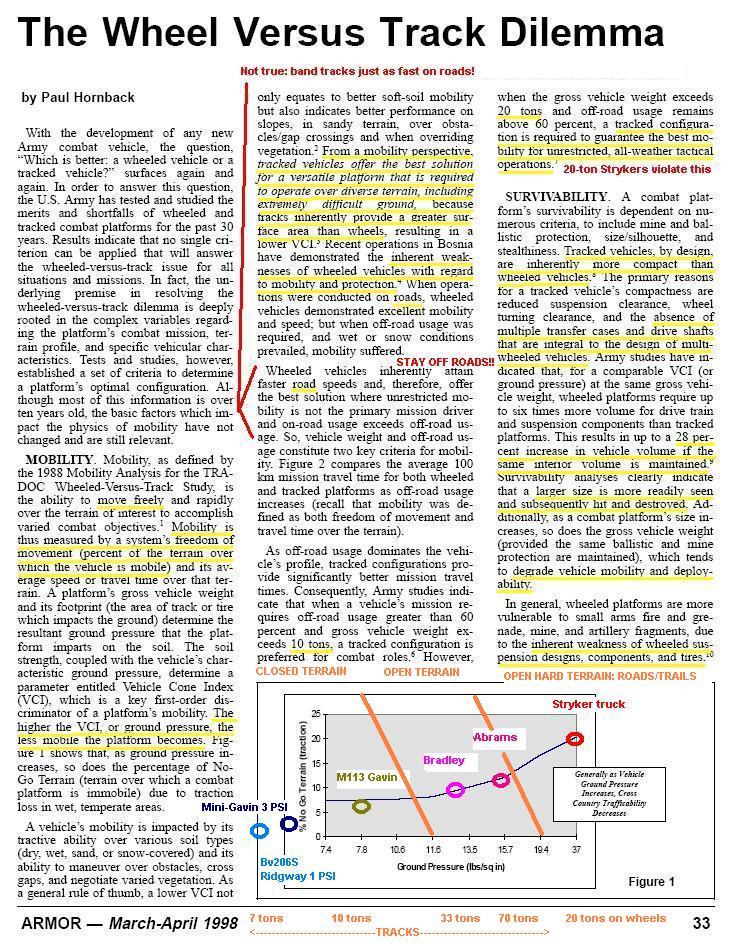
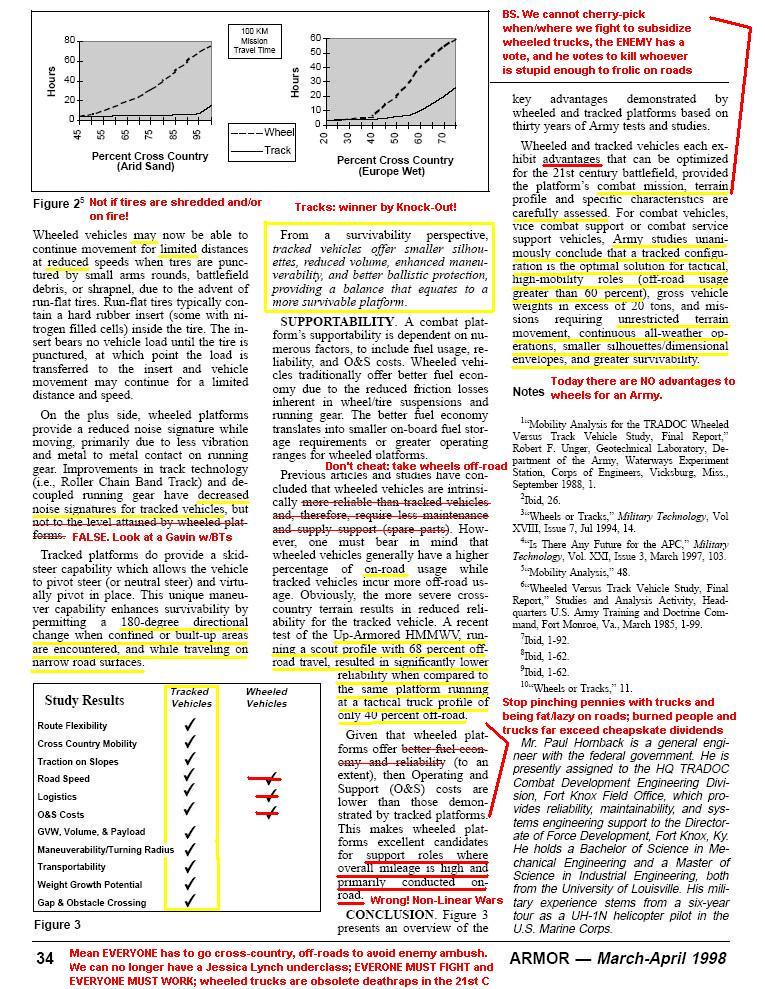
1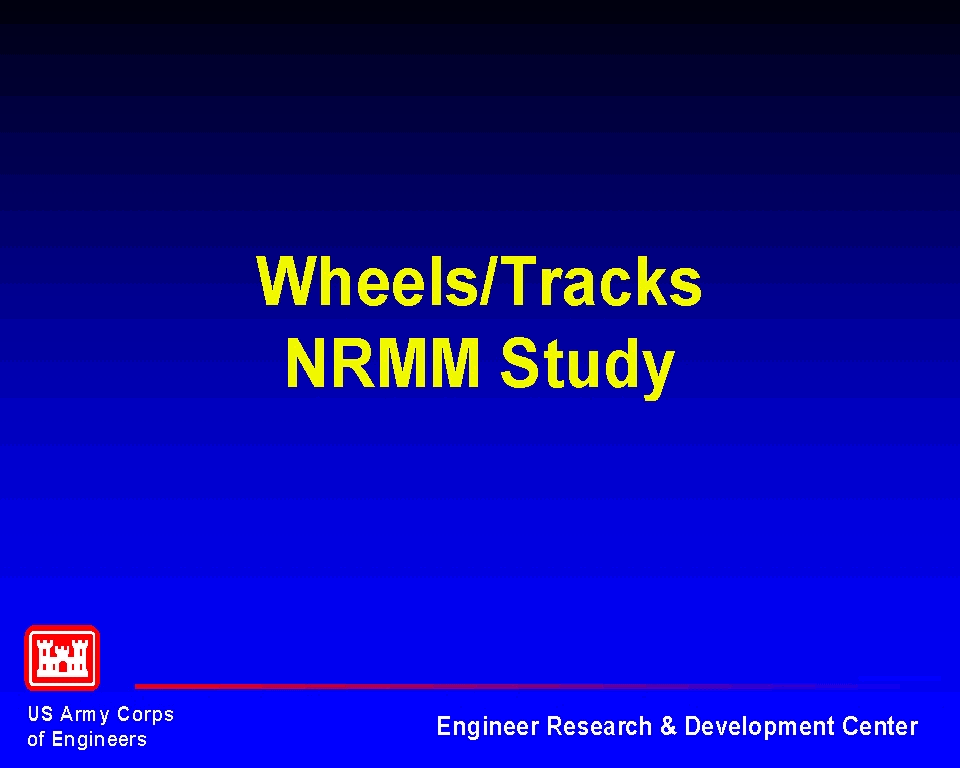
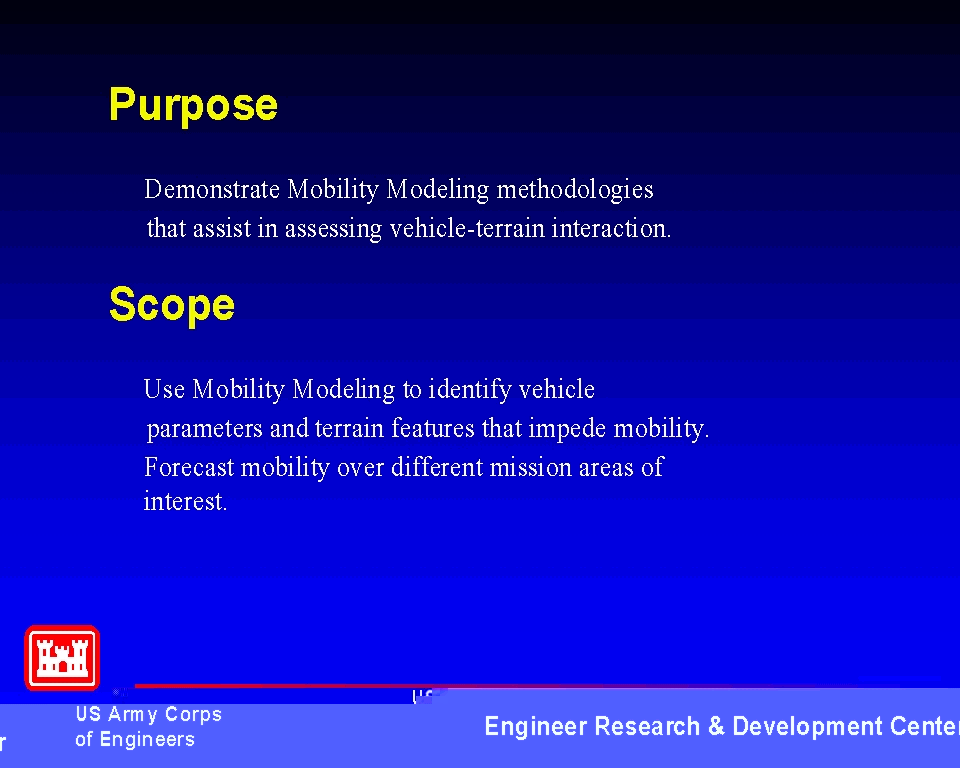

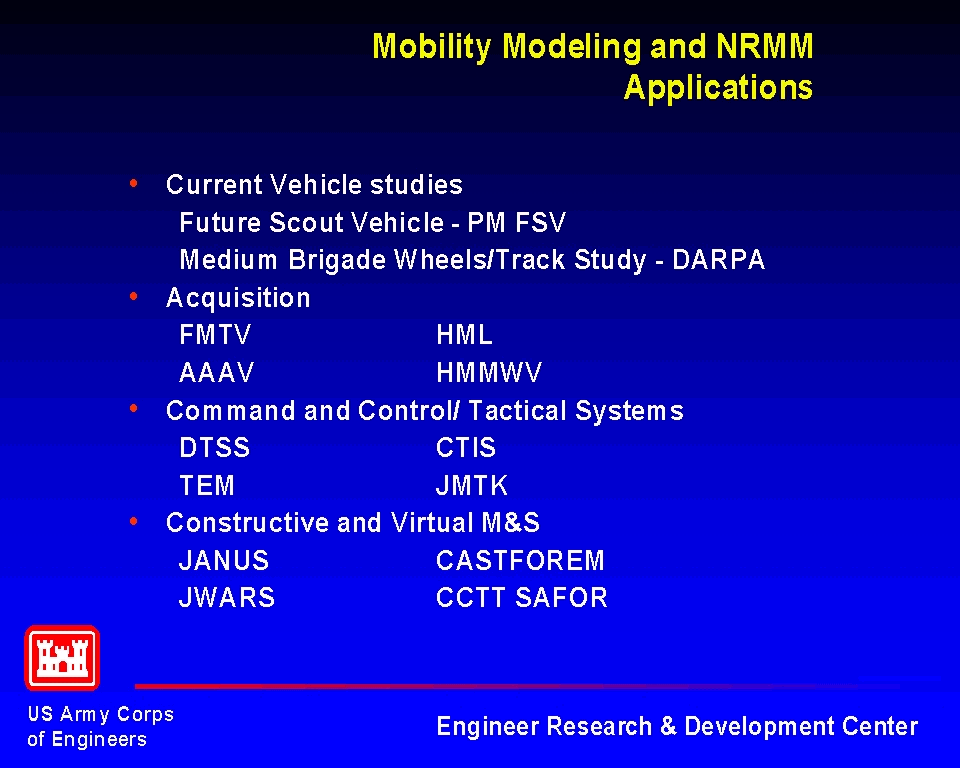

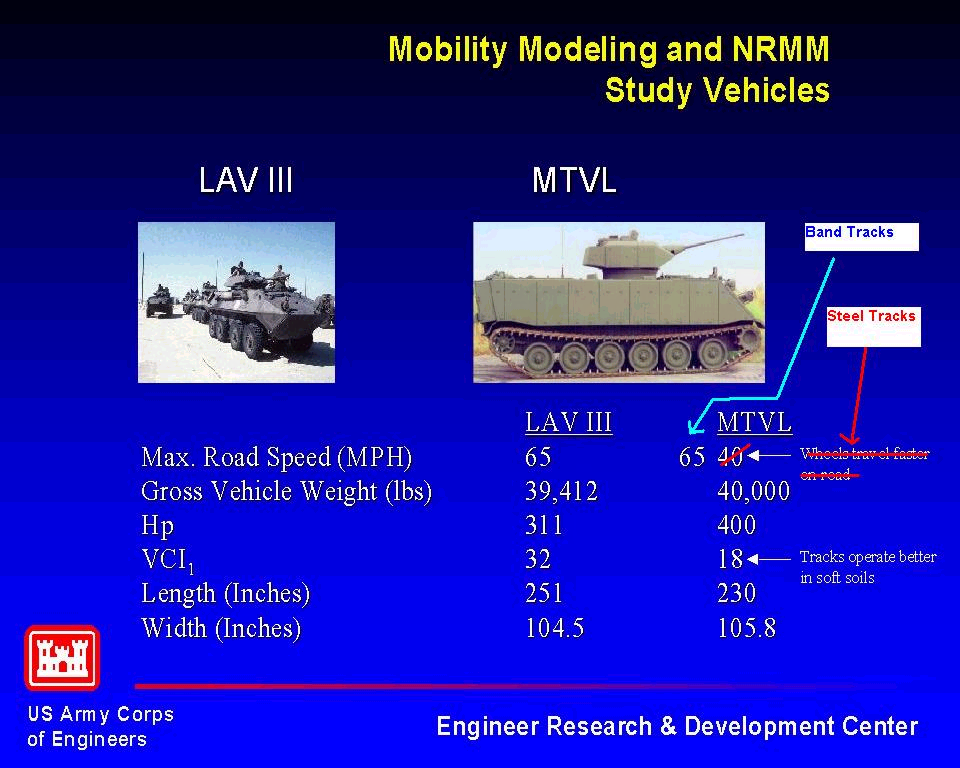
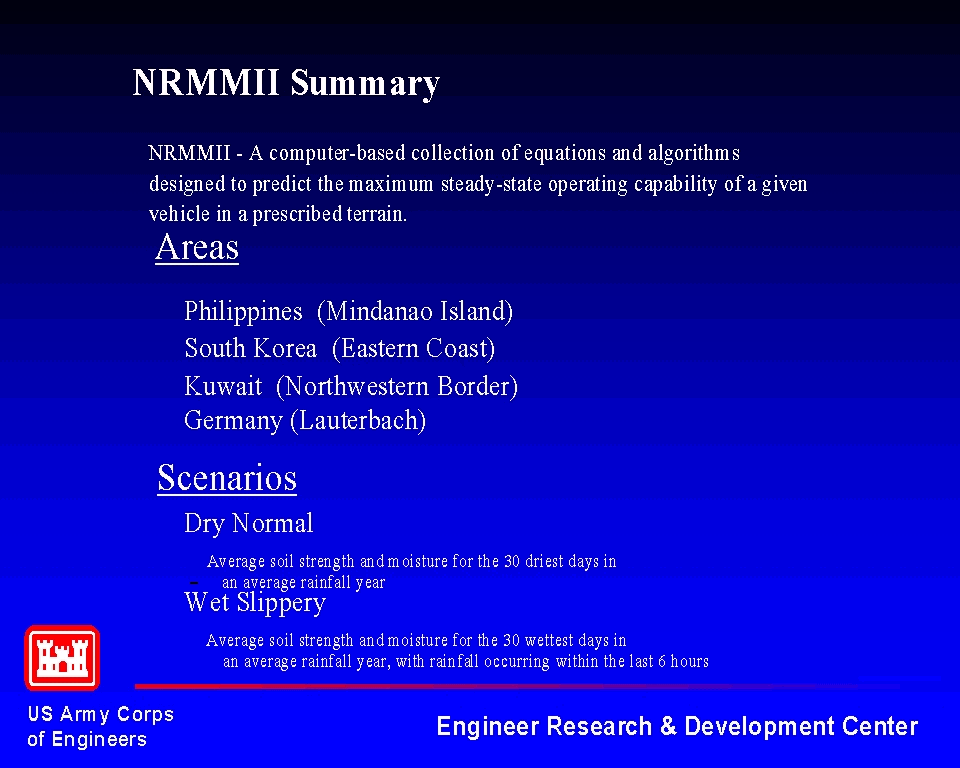

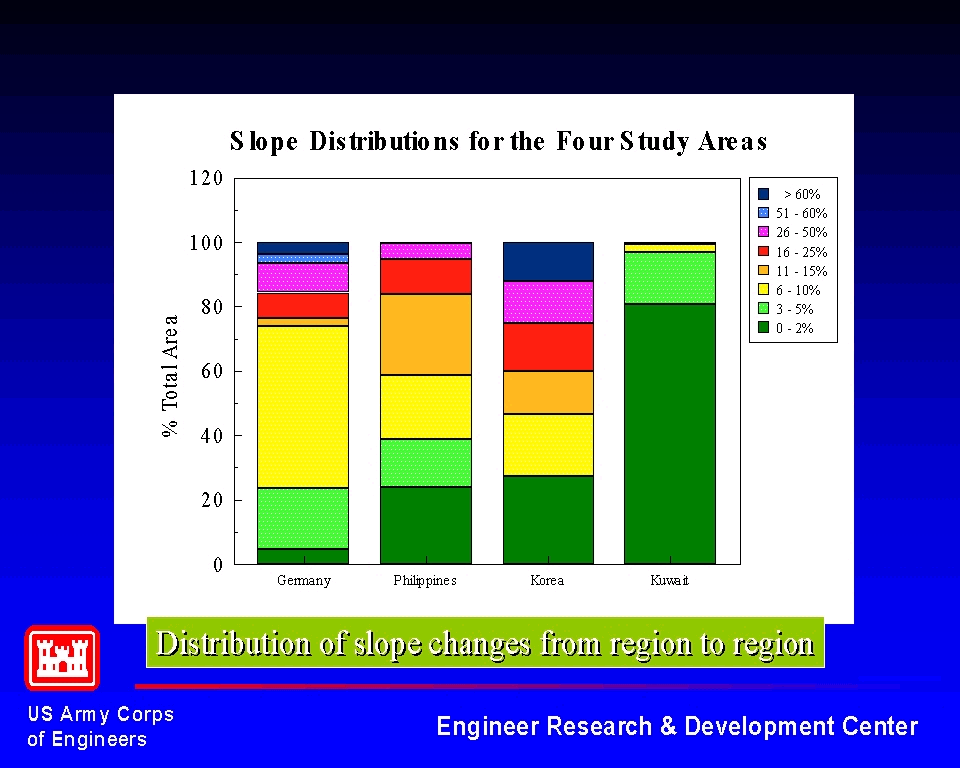
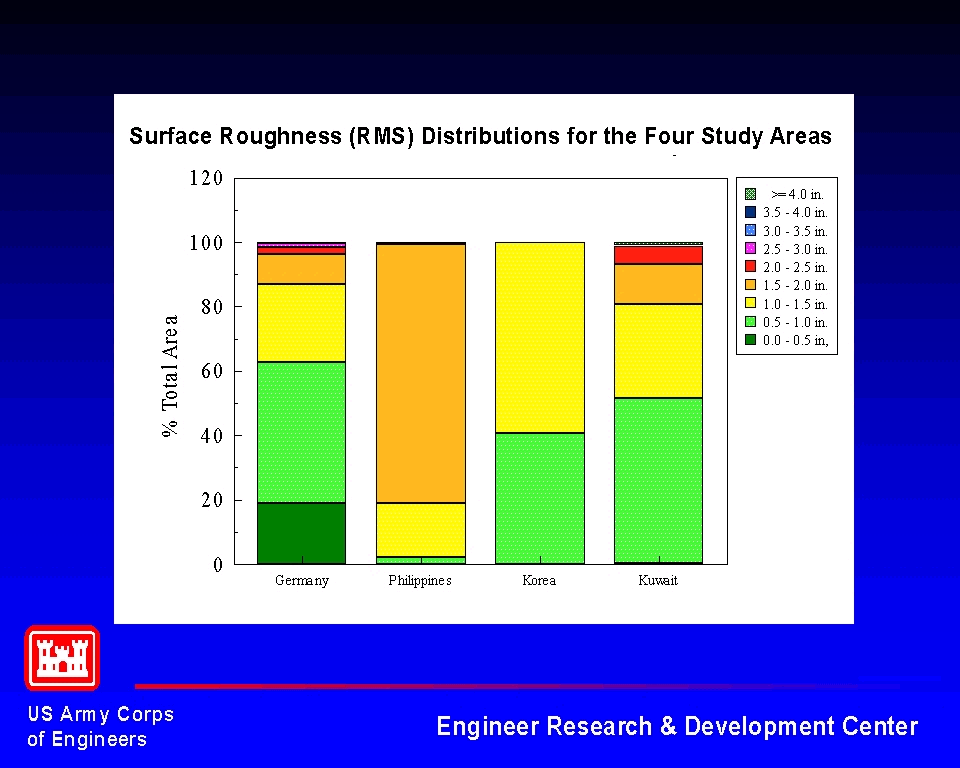
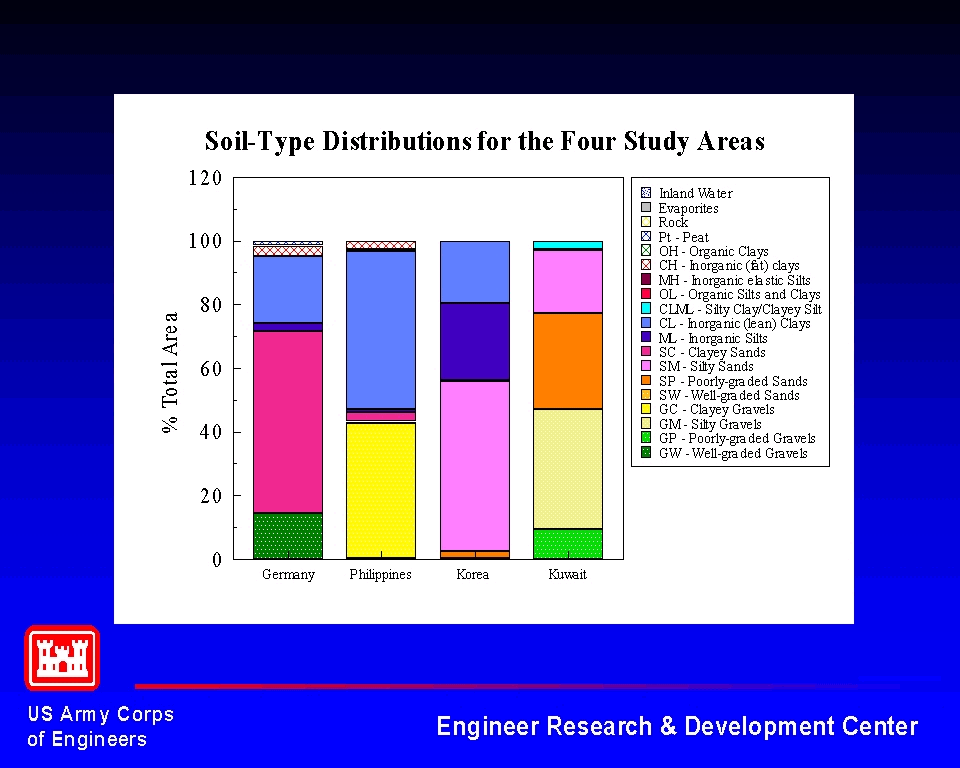
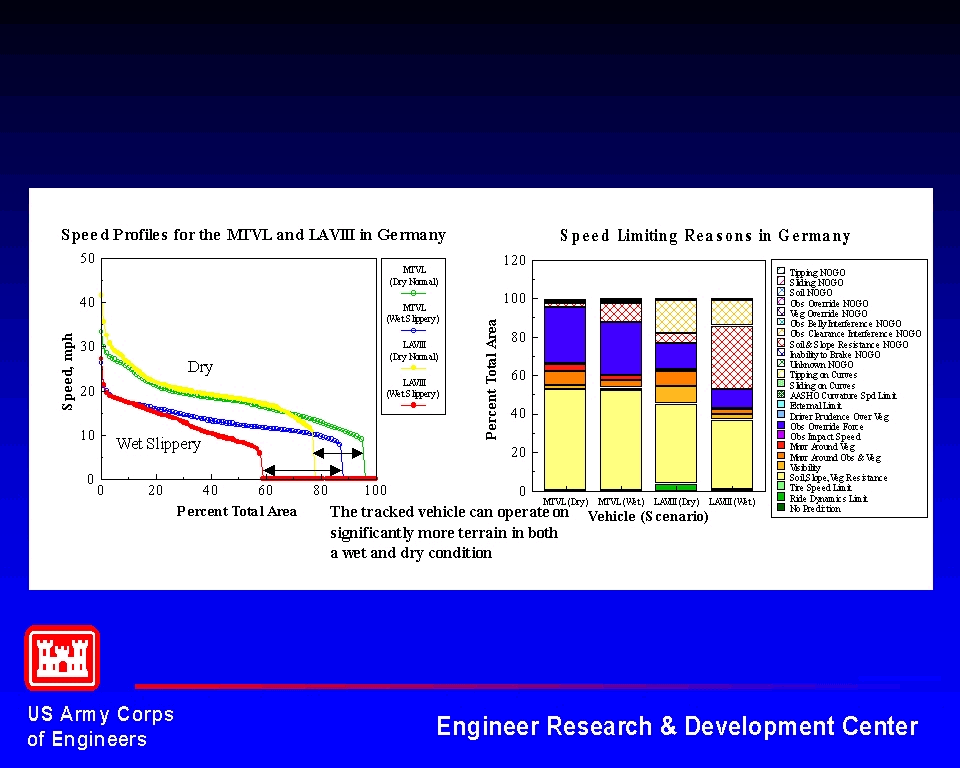
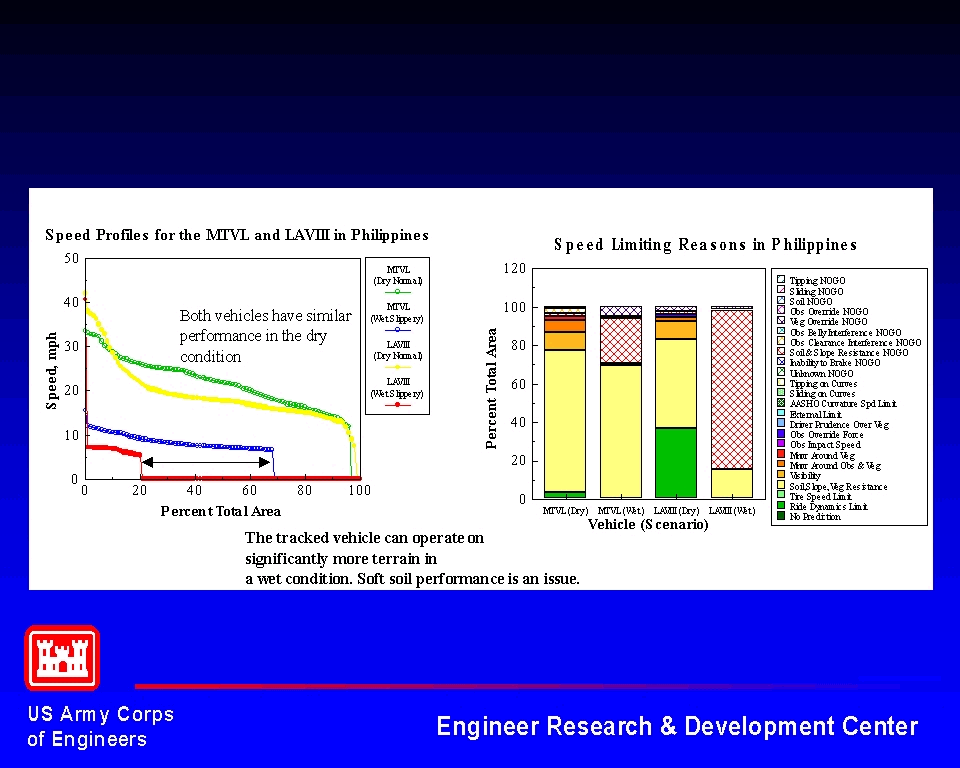




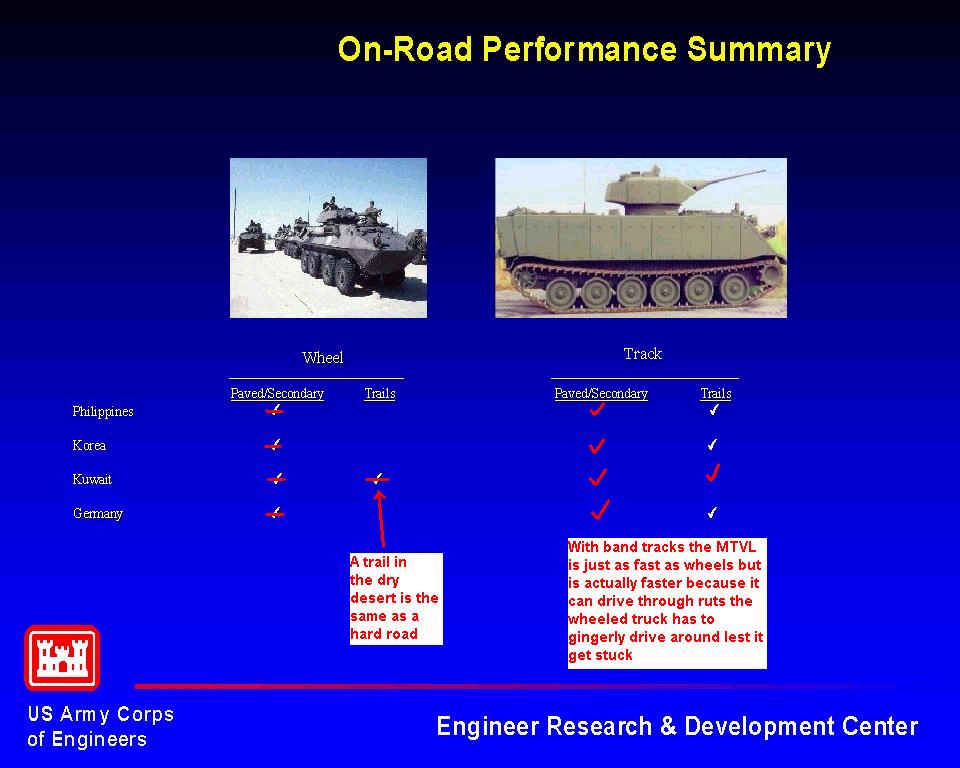

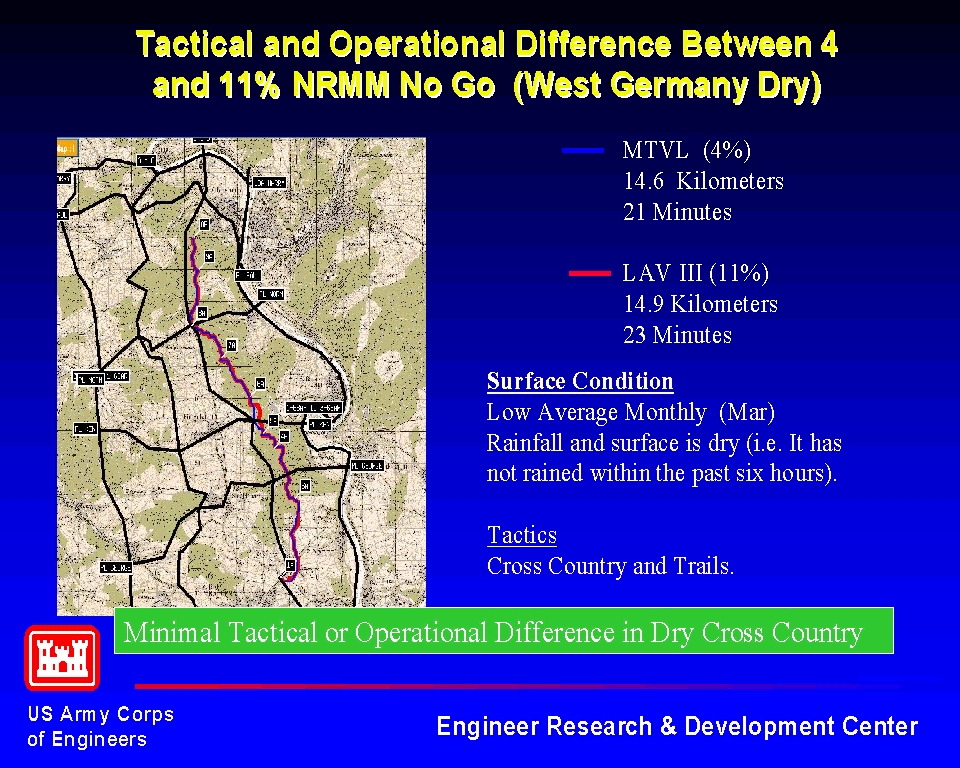
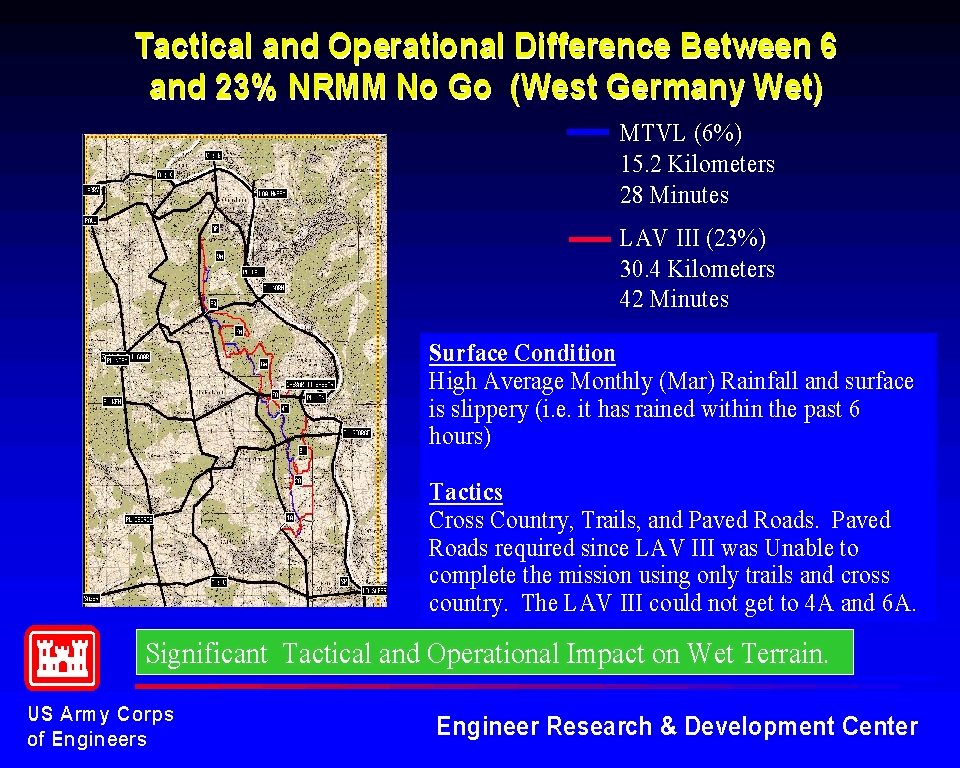
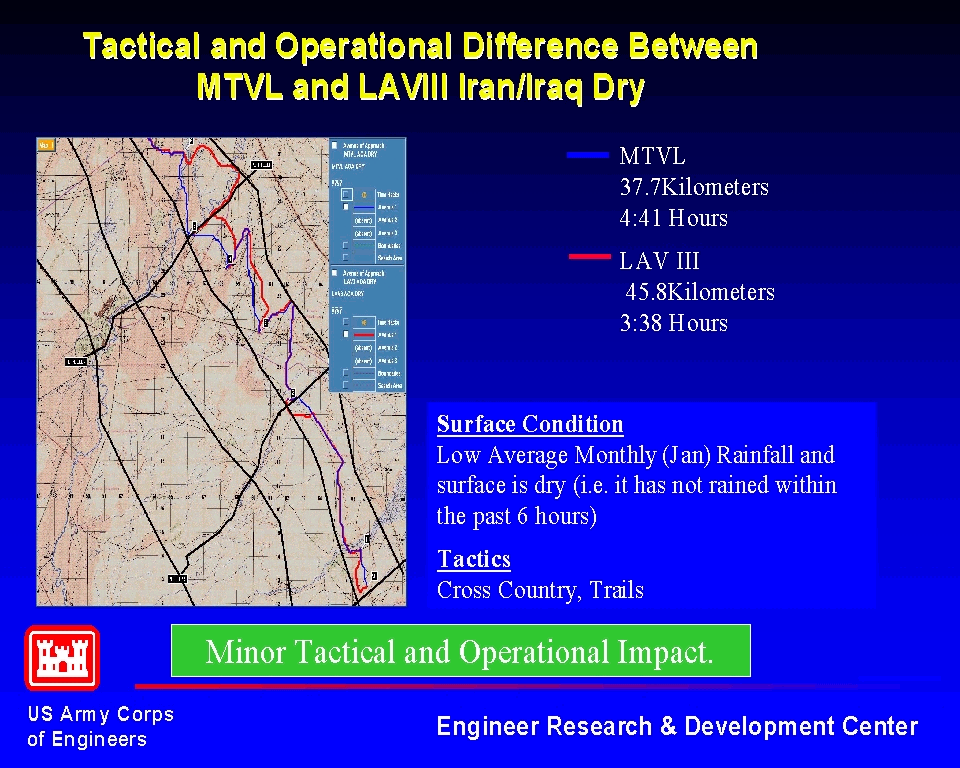
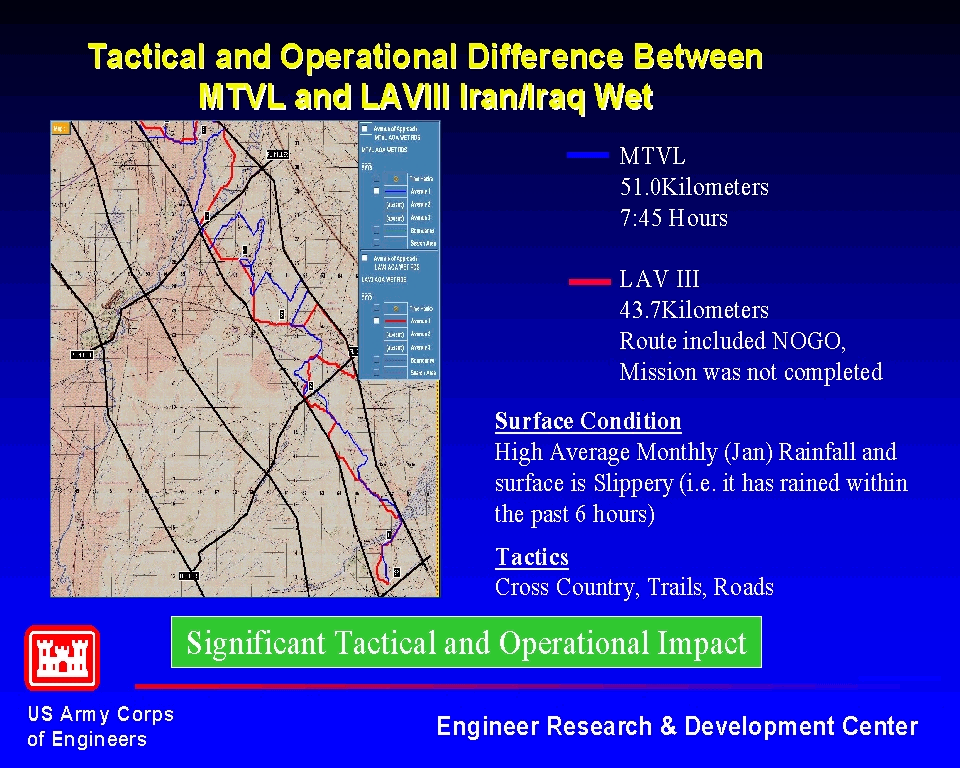
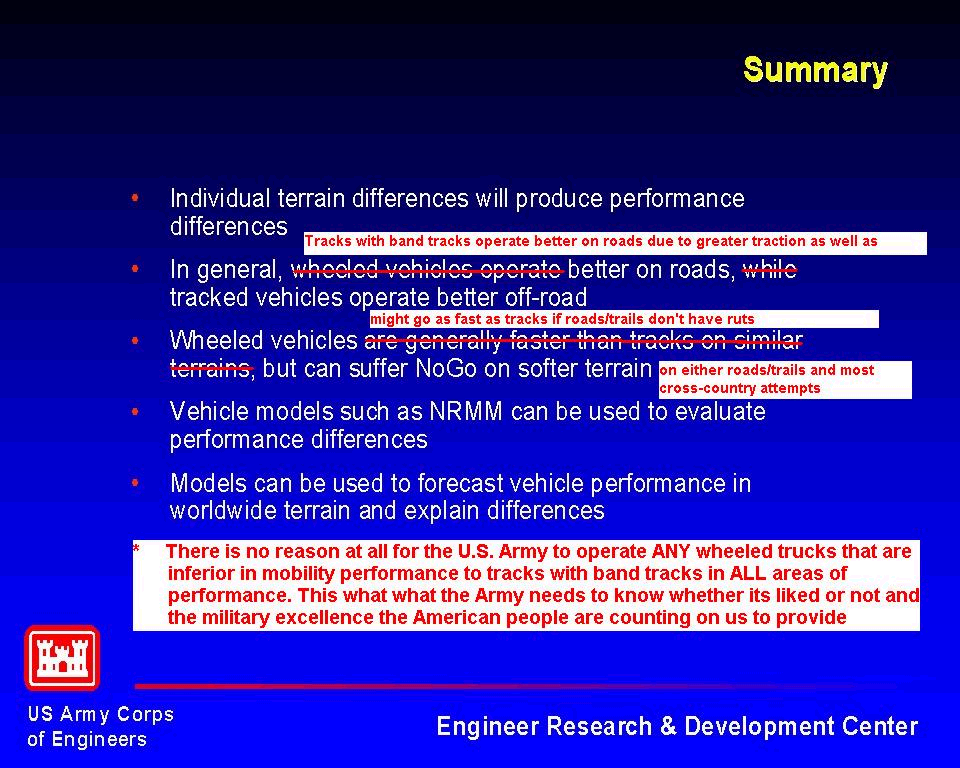
Steel Tracked M113 Gavin went 75+ mph in 1979! There's NO justification for wheeled trucks on the non-linear battlefield!
According to Hunnicutt Bradley: A History of American Fighting and Support Vehicles on page 109, the "Hot Rod" averaged 75.76 mph over a 500 foot gravel test track at Fort Knox in 1979. Power was 2 x 440 cubic inch Chrysler gas engines driving two modified 727 transmissions.
Imagine what M113 Gavins would do today on band tracks with hybrid-electric drive!
www.combatreform.org/bandtracks.htm
combatreform.com/hybridelectricdrive.htm
...thanks be to retired LTC Dave Tooker for finding these pictures!!

Iraq War 1: LAV-1 in wrong color camouflage, hopelessly stuck in the mud
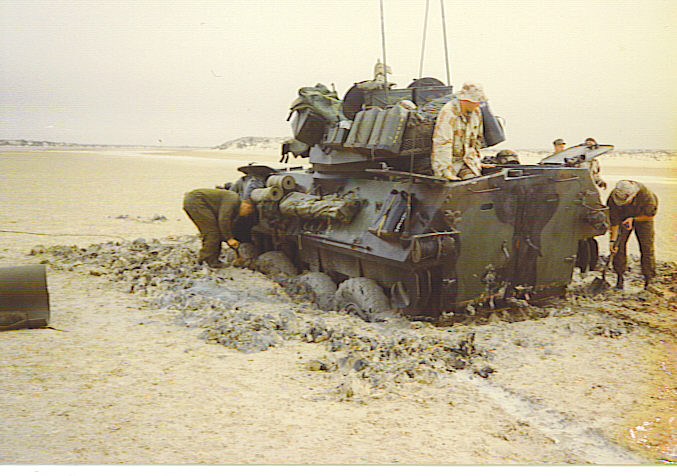
Camp Pendleton
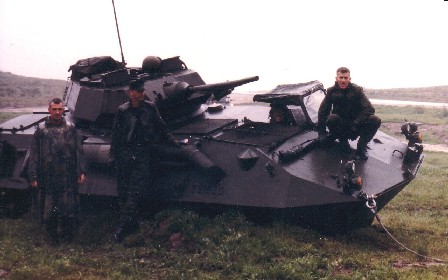
Iraq
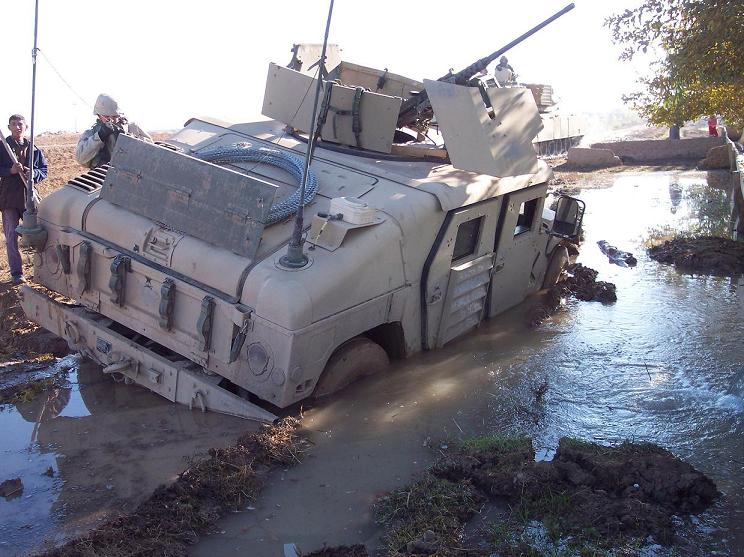
When you poorly design a vehicle like the M114 and Stryker, you negate any positives, in this case both having their hulls overhang in front of their tracks and wheels causes them to snag on uneven ground ahead.
M114 track stuck in Vietnam
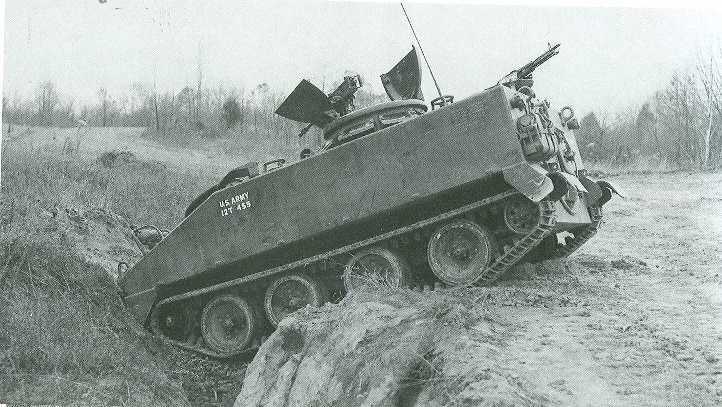
Stryker truck stuck...and struggling to negotiate small ruts
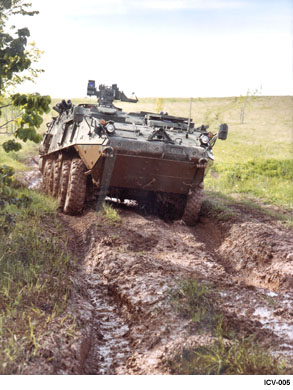
Brigadier Julian Thompson in his book on the Falklands War, "No Picnic" on page 11 writes:
"I was decided at an early stage in planning to take the minimum number of wheeled vehicles. The going anywhere in the Falklands away from the settlements was so bad that even a lightly loaded Landrover would be lucky to cover four miles an hour. Vehicles loaded with ammunition and stores would be lucky to move at all. The Brigade did have seventy-six of its BV202 oversnow vehicles in England, the remainder being stockpiled in Norway. Although designed to operate over snow there was a good chance that these vehicles with a ground pressure of only 1 1/2 lbs per square inch, about that of a man on skis, would be able to motor across the peat bog. Events were to prove they could."
How many tracked vehicles do U.S. Army light infantry units have?
ZERO.
Is that what America needs for forces that are supposed to fly rapidly by aircraft (3D maneuver) to ANYPLACE IN THE WORLD and fight and win? (not deploy and have asses kicked). The wheeled truck is dead on the non-linear battlefield dominated by high explosives because it cannot be armored enough to survive bomb attacks nor is cross-country mobile enough to avoid ambush in the first place. Its high time America's Army and marines retire the wheeled truck with the horse cavalry and start correctly adapting to wars as they really are not how we wish them to be. We must beging by replacing the absurd Humvee trucks in light infantry battalion "Delta" weapons companies with M113 Gavin armored tracks so A, B and C rifle companies can maneuver in the face of enemy threats on the NLB.
WHY ARE WE TRAVELING IN VULNERABLE TRUCKS DOWN ROADS INTO PREDICTABLE AMBUSHES?
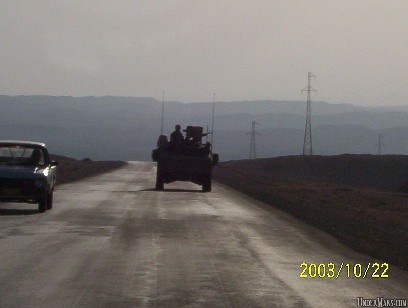
Can a Stryker/Humvee wheeled truck go through this kind of mud? Hardly. Only Light tracks like the M113 Gavin can!
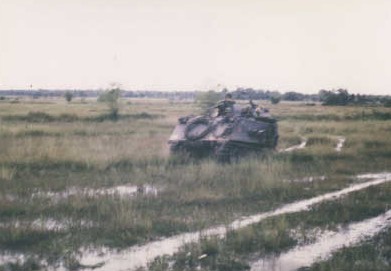
Falklands War decision: what would U.S. light infantry do?
Brigadier Julian Thompson in his book, "No Picnic" on page 11 writes:
"I was decided at an early stage in planning to take the minimum number of wheeled vehicles. The going anywhere in the Falklands away from the settlements was so bad that even a lightly loaded Landrover would be lucky to cover four miles an hour. Vehicles loaded with ammunition and stores would be lucky to move at all. The Brigade did have seventy-six of its BV202 oversnow vehicles in England, the remainder being stockpiled in Norway. Although designed to operate over snow there was a good chance that these vehicles with a ground pressure of only 1 1/2 lbs per square inch, about that of a man on skis, would be able to motor across the peat bog. Events were to prove they could."
How many tracked vehicles do U.S. Army light infantry units have?
ZERO.
Unfortunately, the Army's light units with Delta Anti-Tank (AT) Companies use unarmored, High-Mobility, Multi-purpose Wheeled Vehicles (HMMWV or "Humvees"); mere 4x4 trucks without the cross-country mobility, armor protection or space in the back to carry A, B, C Company infantry Soldiers as required to conduct real world missions such as rapidly fanning out from Drop Zones (DZs) or Landing Zones (LZs) into enemy territory to engage fleeting asymmetrical enemies as depicted in the scenario above. The Humvee, as a wheeled sport utility not combat vehicle, simply cannot go cross-country at will through vegetation, soft soils, or up and down slopes. It is often road or trail bound, and thus easily ambushed and destroyed at Combat Training Centers (CTCs) like the Joint Readiness Training Center (JRTC) and sadly in combat in Afghanistan and Iraq. Wheeled vehicle are 28% less capable of armor protection than more weight/space efficient tracks. When you slap all kinds of armor on it, Humvee mobility degrades further and mechanically it starts breaking down. This is vividly described by Brigadier General Dan Bolger in The Battle for Hunger Hill and more ominously by real casualty reports in recent combat actions in Iraq, not to mention the 1993 Somalia raid described in the book and film; "Blackhawk Down!" The HMMWV is a truck, and not a combat vehicle, with air-filled rubber tires easily punctured and set on fire in a firefight resulting in a mobility kill, and potentially a total kill if the men inside do not get out of the vehicle. Delta Companies, as the main organic anti-tank and mobile security force for foot-mobile light infantry, must not be easily attrited or else the entire main body will be placed in a position of having to fight for its life. The Airborne must land and take the fight aggressively to the enemy without having a "glass jaw;" it must be able to fire and maneuver at will anywhere on the terrain and shrug off enemy fires encountered to attain important objectives - not be damaged and immobilized.
Tracks can easily traverse the vast terrain off to the left and right of paved roads like shown above...if we were not lazy, impatient Americans who want to ride around in comfy wheeled trucks instead of tactically-sound tracked tanks...and live in tents, former dictator palaces and eventually Forward Operating Bases (FOBs) with all the comforts and absurd parade-ground garrison home life using flimsy wooden buildings.
The Army wheeled narcissist lie exposed: Video Proof that steel tracks can go 60+ mph on paved roads
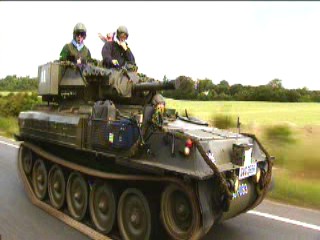
This should end the "Stryker and Humvee 60 mph on roads" non-sense forever. Take the governors off our tracks and they can go as fast as you want them. There is NO reason to have or use rubber-tired trucks on thr non-linear battlefields of today...they need to go the way of the horse cavalry.
Edited Clip
www.combatreform.org/steeltrackscango60mphonpavedroads.wmv
Full Clip with an excellent short History of Tanks
www.pioneertv.com/video/tanks900.wmv
Recent Productions
http://72.14.207.104/search?q=cache:FFlc_wMMrHAJ:www.pioneertv.com/recent.asp+tycoon+toys+national+geographic&hl=en&ie=UTF-8
Tycoon Toys
(2 x 60' for National Geographic Channel/Freemantle International Distribution) are what the super-rich choose to spend their hard-won zillions on. We meet the few individuals who have a particular penchant for owning, driving and firing huge pieces of ex-military hardware, from field guns to tanks to fighter jets. Tycoon Toys goes on a journey to watch them at play. 2004 - Distributed by: Freemantle International Distribution
The Lazy American Way of War: Slacker LAV, Stryker, Humvee trucks, canvass tents and moving into dictator palaces...
EXCLUSIVE VIDEO!
www.combatreform.org/americanoccupationofiraq.wmv
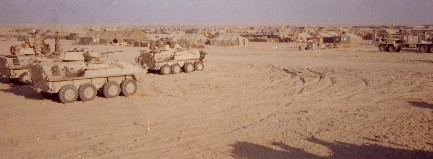
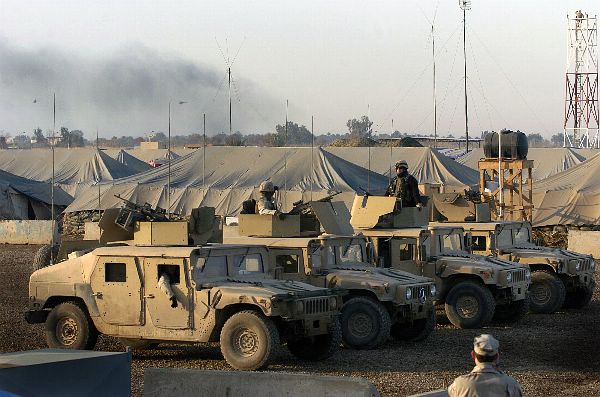
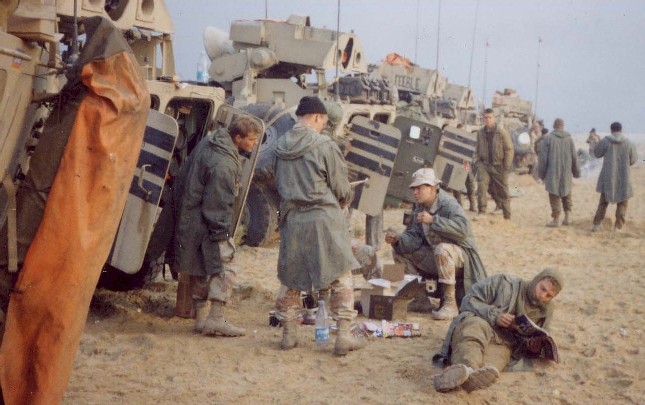
When not unjustly occupying former dictator palaces that inflames civilians to start rebellions against us, Americans will lazily pitch tents to go along with their lazy wheeled trucks. That these canvass coverings neither camouflage from the ground, air or space nor protect troops is not appreciated by the brass who when they get $$$ from Congress have contractors like Halliburton build flimsy wooden base camps that when we are forced to leave countries that do not belong to us, represents money thrown down the drain. The solution is to ISO containerize the entire U.S. military into "BattleBoxes" that can be camouflage, fortified and we can take with us when we leave.
DoD's culture of deceit has troops voting with their feet
We were told Iraq was being invaded to locate and destroy WMD. It was a lie.
We were told NFL star turned-Army Ranger Tillman died charging the enemy. It was a lie.
We were told female Soldier Jessica Lynch fired her M16 rifle until she ran out of bullets and was captured. It was a lie.
When SPC Wilson asked for vehicle armor, he was told "you go with the Army you have". It was a lie. The Army went to war in trucks and left by choice its better protected armored tracks, resulting in thousands of American dead and maimed.
We were told by DoD that "all vehicles in Iraq would be soon armored". It is a lie. The Army brass are now buying 24, 000 trucks for Iraq that are not only UNarmored they are powered by dangerous, explosive GASOLINE. They will be painted in bright GOLD to certainly infuriate Iraqi rebels to attack them.
We were told the rebellion in Iraq is only coming from a few Islamist outsiders and Sunni "dead enders" and that it is defeated ("in its last throes" according to chickenhawk Cheney) and "security was improving". It is a lie punctuated by a daily diet of bombs going off and mutilated bodies that continues to the present.

Recruiting for America's ground forces has now dried up in response to the steady stream of casualties from Iraq--over 2, 000+ dead and 20, 000+ wounded. The word is out from returning veterans that the entire U.S. military establishment is a failure and unable to confront problems honestly and solve them. If you bring up a problem like Humvee trucks are not safe to ride in Iraq where the enemy is all around and can set off a high explosive bomb at any time (Non-Linear Battlefield), you are told that "compared to the number of Humvee trucks over in Iraq: casualties in them are not a problem" Ask the families of the dead/wounded Soldiers if its a "problem". Another example is the Stryker truck apologists who say their 20-ton truck is better protected than 4-ton Humvee trucks and lighter than 70-ton heavy tanks while conveniently omitting that 11-ton M113 Gavin tracks are better protected at less weight because they are 28% more space/weight efficient and roll on steel tracks with rubber pads that don't burn like their rubber tires do and can go cross-country to avoid road ambushes in the first place.
This form of selective cherry-picking of facts to portray a false idea is rampant at every level of DoD and our military where to get ahead you tell the boss what he wants to hear. Its easier to use relativity and find something--anything---positive even if its absurd and dishonest than to bring up problems. Messengers bringing bad news get their careers ended. This is what reformers mean when they describe "zero defects" syndrome. Its really a subtle form of lying--deceit---intended to manipulate the listener. Its very easy to do this at a mouse-click thanks to the availability of computers, just find your silver lining rhetoric, copy and paste. Our military accustomed to this kind of factual relativism is so used to lying to the troops, it pathologically cannot stop lying when it speaks to Congress and the American public who by law are required to tell the truth to. At press conferences, military spokesmen will cherry-pick minor tidbits like "the orphanage that was built" while ignoring the major problem facts like that bombs are going off all over Iraq and that its not safe to walk the streets today. The military is so used to cleverly picking and choosing data and telling the public what it wants to hear, its questionable if they themselves know or ever knew what the truth was or is. Anyone in the press who calls DoD on their lies and distortions has his access removed. Thus, our military is accountable to no one, except the youth of America who are now voting with their feet.
The inescapable conclusion is that the U.S. military refuses to do what it takes to win if pitted against creative enemies.
To out-smart such enemies the military has to be both honest and humble to admit to problems and understand them generically, and then drop the snobbery inherent in a rank dominated bureaucracy to arrive at direct answers.
Needed U.S. Army Ethos similar to Israeli Defense Force
www.combatreform.org/usarmyethos.htm
Failed CONcept of OPerations (CONOPS) in Iraq
In Iraq, it was obvious soon after we fired the Iraqi army who did as we asked and did not fight us, and moved into former Saddam palaces and started kicking down doors looking for the dictator and his loyalists that we were infuriating the civilian populace as roadside and car bombs started to go off all over. We did the exact same thing in South Vietnam beginning in 1954. Consulting counter-insurgency (COIN) experts who were successful in Northern Ireland DoD/military should have realized that presence patrols with gunslingers only give the enemy targets to push buttons and detonate bombs to create casualties for every news cycle. COIN experts told the military from the beginning to reduce American presence by staying out of cities via rural bases, actually defend the few supply roads needed with 24/7/365 infantry guards in tracked armored fighting vehicles and constant overhead surveillance by fixed-wing manned observation/sttack aircraft not to brutalize civilians, and to cordon off population centers and pedestrianize the bomb problem--do not let cars and trucks inside and to screen all walking people through checkpoints. Security fence experts would have educated DoD to build a fence along the Syrian-Iraqi border with a constantly plowed clear dirt area patrolled by men in tracked armored fighting vehicles and overhead by manned observation light planes.
PROOF that the 1st TSG (A) CONcept of OPerations for Iraq is correct:
www.signonsandiego.com/uniontrib/20051105/news_1n5road.html
Once deadly Baghdad road is much safer
Turnaround is credited to simple military tactics
By Jackie Spinner
THE WASHINGTON POST
November 5, 2005
BAGHDAD, Iraq - It used to be the most dangerous highway in Iraq, five miles of bomb-blasted road between Baghdad International Airport and the capital cityscape. It was a white-knuckle ride, coming or going. To reach Baghdad or leave it, you had to survive the airport road first.
For 21/2 years, the road was a symbol of the U.S. failure to secure Iraq. Military convoys roared past in a frantic attempt to escape the dangers of suicide bombers, grenades and rockets. But insurgents' relentless attacks claimed a steady toll.
In April, 13 people died along the route, including an American aid worker, Marla Ruzicka, who was killed on a sliver of pocked pavement that intersects threadbare fields and modest concrete homes.
Then, two months ago, the killings stopped. In October, one person was wounded on the road and no one was killed, according to the U.S. Army, which also calculated the April deaths. The turnaround was owed to simple military tactics, Army officials said.
Lt. Col. Michael Harris, commander of the 3rd Infantry Division's 6th Battalion, 8th Cavalry Regiment, or 6/8, recalled a day this summer when a superior officer told him: "Mike, I've got the most strategically important mission in Iraq for you."
"Oh great, I get to go get Zarqawi," Harris recalled thinking. He was referring to terrorist Abu Musab al-Zarqawi, the leader of al-Qaeda in Iraq. The officer said the mission was to secure the airport road, which had become a major embarrassment for the military.
Harris started by slowing down the convoys, forcing Soldiers to look out at the passing landscape. Then he sent troops into the surrounding neighborhoods. Barriers went up, preventing vehicles from reaching the airport road unless they passed through a checkpoint. The Iraqi army set up positions and stayed 24 hours a day.
Between April and June, 14 car bombs went off along the airport road, called Route Irish by the military. There were 48 roadside bombs, known as improvised explosive devices, or IEDs, and 80 small-arms attacks. Sixteen people were killed.
In the past two months, there have been no car bombs and nine IEDs along the road. One Iraqi Soldier has been killed.
"Presence is definitely a key to our mission," said Pfc. Justin Wildey, 23, of Marietta, Ga. "In order to make everyone else safer, we've got to take chances. I don't have any problem with it; most of us here don't."
One night last week, the 6/8 poked down the airport road, looking.
"What's that car doing there?" Harris asked, then ordered his men to stop. Five Soldiers jumped out and immediately questioned the driver. The driver said his car had stalled. The Soldiers got behind the rear bumper and began pushing the car off the road.
Later, the Soldiers linked up with an Iraqi army battalion in the Jihad neighborhood adjacent to the road. The Iraqi Soldiers had set up a checkpoint to search vehicles entering the area.
"In order to control the route, you have to control the terrain on each side," Harris said.
The Iraqi Soldiers, with a handful of U.S. troops by their side, walked the dusty dirt roads of the neighborhood. Weapons drawn, they searched alleys and courtyards. But mostly, they just walked, greeting Iraqis gathered outside their homes before the breaking of the fast during the holy month of Ramadan. The sweet scent of spice-infused meat and vegetables filled the night air, as women in black cloaks scurried home with stacks of piping-hot flat bread.
"If there's bad things on Irish, the neighbors on either side are influencing it," said Capt. Justin Reese, 30, from La Porte, Ind. Reese was the Charlie Company point man for the 6/8, in charge of helping the Iraqis secure the neighborhood. He stood by the side of Lt. Omar Tarik Ali, 24.
Ali said the Iraqi Soldiers had been instrumental in helping control the neighborhood, keeping the potential attackers from using side streets to reach the airport road.
"We are Iraqis, and we know strangers from their faces," Ali said. "We can stop them, and we know if they lie to us. The Americans don't know."
However, DoD never asked the COIN experts for advice since they assumed they knew it all. All they thought we needed to do was inhabit all over Iraq and drive around to show who we are and speed back to base and unwind in the mini-slice of American comfort we had transplanted. At night we could kick down doors and kill or capture the bad guys, then return back to base for a cold one. Now after two years of making nearly everyone in Iraq hate us and support the rebels, we find that no one wants to join our Army and marines to die in a truck in Iraq. We are reducing our base camps and will inevitably have to leave. We have turned an entire generation of Iraqis against us and the only solution is to take our lumps and stop losing $1 billion a week and 11, 000 Soldiers a year by pulling back south of the Euphrates river and reducing our presence to under 50,000 troops all in tracked armored vehicles that can fight and intervene if the Iraqis need our help. We had at one time the good will of the majority of the Iraqi people but our snobbery and habitual deceit has led us to defeat.
A PBS Panel examines the recent Bush speech rhetoric
www.combatreform.org/analysis28.ram
The inescapable reality is that Bush is a liar; he wants you to THINK Iraq's violence is caused just by Islamist outsiders "terrorists" when the truth is our brutal OCCUPATION OF IRAQ IS THE CAUSE OF THE REBELLION by regular Iraqis who just want us to leave their country. Iraq does not belong to us. Its their country, not ours.
The reason Bush lies to us is because he and his neocons DO NOT WANT TO LEAVE IRAQ. Notice in his speech, Bush implied we cannot leave Iraq until the Iraqis can defend themselves and he conveniently offered no yardstick for when that would be achieved. Anyone who has ever been in a military unit knows you constantly train and never reach a "perfect" condition of combat readiness. So as long as just one bomb goes off in Iraq, Bush will have a ready-made excuse to keep Americans in Iraq to "help" the Iraqis without end. The video below proves that Bush has built permanent U.S. bases in Iraq:
www.combatreform.org/americanoccupationofiraq.wmv
You can lie to yourself and your own people but if you do not understand your enemy you cannot defeat him.
In guerrilla war, the rebels bait the government to over-react to their terrorist acts and become then a recruiting tool to make more rebels. We have swallowed their bait by killing over 100,000 Iraqis and imprisoning over 10,000 and building more jails.
The solution in Iraq is to reject Bush's lies that Iraq's violence is just being caused by a minority of outsider terrorists and to GET AMERICANS OUT OF IRAQ by the thousands to eliminate the occupation that is causing Iraqis to rebel. Keep just enough Americans to train & advise the new government's police and military and a quick reaction force in tracked armored fighting vehicles. Instead of 136,000 troops in Iraq infuriating the Iraq people, we should have less than 50,000 total. Costs to keep this reduced presence should be less than $100 million a month not the current $1 BILLION a week that is leading us to economic ruin. If we are going to "help" Iraqi security forces with open-ended training, lets do it without keeping the rebellion fuelled.
REFERENCES
1. Here is a video clip of Senator Santorum on PCN TV warning that LAV (Stryker) trucks are not fit for combat:
www.combatreform.org/senatorsantorumsayswheeledvehiclesarewrong.wmv
Why didn't Santorum and others FILIBUSTER on the floor of the Senate to stop passage of the spending bill buying LAV/Stryker trucks? Why didn't Congressmen and Senators introduce a bill that the Pennsylvania National Guard Interim Brigade would be equipped with York, PA produced M113 Gavin tracks instead of inferior Stryker trucks made in Canada? Who provides oversight over our military to prevent deathtraps from being given to our troops?
Its still not too late to do this; M113 Gavins are now being up-armored for Iraq
www.combatreform.org/m113combat.htm
...and this could be expanded to the PARNG Brigade's M113 Gavins so they could be a tracked brigade combat team and would supply badly needed jobs in the state. In fact, there are 4 divisions and all of the support units of the Army that need to be in M113 Gavins with extra armor and band tracks for cross-country as well as 60 mph road mobility that could use some of the thousands of M113s the Army has in storage to be upgraded into this configuration instead of dying in Humvee/Stryker trucks.
Senator Santorum says Rumsfeld now realizes LAV/Stryker wheeled trucks are deathtraps and is curtailing the program but there is no evidence of this boondoggle ending.
Despite Senators Santorum and Biden warning the Army not to buy LAV/Stryker trucks, they did and now scores of Soldiers are dead. What has just come to light is so troubling and disgusting after 20, 000 Americans have been destroyed in Iraq service as dead or wounded it is almost beyond words.
2. CNN's Jamie McIntyre, Jamie recently reported on Lou Dobbs tonight:
"And ultimately they said what experience in Iraq is showing is that the vulnerable HUMVEE is being rendered obsolete by the tactics of the enemy.
--Gen. William Nyland, the Assistant Commandant USMC
The head of the NYLAND SOT says:
"I think that the utility, if this is threat of the future, the long term utility of the HUMVEE has to be questioned; we have to take continued steps to find what will defeat this kind of threat."
3. An Army officer in Iraq writes on the failures of Humvees and Stryker trucks in Iraq:
"One more note to get rid of wheels. Since the AOA kits have been installed on the M998/M1025/M1026 HMMWV (Ogara Hess), which are just heavy steel slats of plating bolted onto the M1025's,really (no undercarriage protection!), the front suspension has NOT been able to handle the weight and it goes beyond the vehicles limitations on the front end. You see sagging lillies running all over the place here Due to this, and just pure laziness (I'll agree) on DOD's part, the tires have to be changed three time as fast because the camber (inward/outward tilt of the tire) is thrown off due to the springs inability to handle the added armor. To fix this the brackets have to be shimmed out accordingly, but since we have no alignment machines, no one wants to use the old string and block method, and the armoring is an 'in and out as fast as you can' process here, they never bother to order and beef up the suspension at the armament shop at Setiz using the M1114 kits. This taxes the already taxed ORG maintenance guys who are forced, if they can even find the time (which we haven't being too busy keeping the existing fleet FMC and doing services), to do the swap out. Fact is we never get the chance to go that deep into the suspension and problem goes unresolved, just swap the tires and keep on trucking is the attitude.
Bottom Line: A radial HMMWV wheel and runflat will wear out in 1/3rd of its lifetime without the suspensions being upgraded, costing the US taxpayer $900.oo a pop on each tire every two months (average lifespan with alignment out of whack).
Plus the AoA kitted HMMWV's are worthless for anything other than 7.62 rounds.
DOD has put a bandaid on a gaping wound on the AoA kitting of existing M998/M1026/1025 HMMWV fleet.
You are absolutely 100% factually based in your beliefs that the HMMWV is a deathtrap for the patrolling soldier and that it could be readapted for use in many scenarios. Changing the thinking of others is the hardest thing as like me, they were brainwashed. Why, I might ask, as to what proof did anyone offer me that wheeled was the sole manner in which we had to develop our TTP?
Why are we brainwashed (you can answer this bettter than I can, Mike) With the use of the platter charge wheeled is unacceptable and poses a derelict security risk to troops and I can't understand how anyone can justify the risk assessment cards. The Platters are copper coated, they rip through M1114's like a hot knife through butter, and the primary vehicle of choice, the M1114, is too heavy for inclines (rolls extremely easy at even 35 degrees at slow speeds), is not all terrain and WILL easily get stuck in mud without having to try, is limited for speed and course on unimproved roads (a track will kick its ass in the off road and go places it could not dream of) has a weight to suspension configuaration that came as an afterthought (9800 lbs (5 tons!) dry GVW (without all the gear and BII thrown in on a standard 998 frame rated for only 7700 lbs TOTAL (5000 lbs dry GVW with only improvement being 2 liters more on the engine (6.5 as opposed to 6.2 GM) with a turbo thrown in for a liitle more power which gives it a top speed of 65 MPH if you are lucky on improved surface, that is if the Alison 4l80E trans that is computer controlled pain in the ass to troubleshoot does not lock up into second gear (which it does quite often when the TCM module malfunctions due to undercarriage heat-they placed it under the pass rear seat on the floor!) causing the vehicle to have to 'limp home' in second gear at 25-30 MPH, . It's suspension is underated, and has simply beefed up coil springs (added rung) and a little thicker brake pad and ball joint)with nothing else improved for handling (sway bar etc? NO). My last xxxxx saw one hit a median dip at at 45 mph, and in doing so the M1114 sprinboarded itself into a cartwheel.
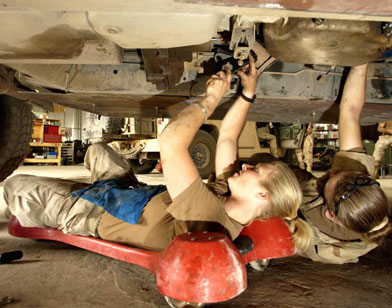
As you will see, the vehicle could not handle the transverse weight shift of the dip at sideways motion and laterally cartwheeled itself through the median, flinging the gunner out of the turret like a pea off a plastic spoon breaking all his facial bones. Luckily no one died. Would this have happened if they were in track? Hell no. This speed demon-road-rage-warrior-straight into the IED ethos has been to the doom of many good soldier and when we first arrived it was TTP set in stone. Now they are finally telling us to slow up down the MSRs...wonder why?
Cause the M114 is a piece of crap that can't cut the mustard, that is why!
Reconfigured tracks indeed could be used in a variety of logistics situations with the added usage of Band Tracks and A/C could easily be retrofit. I think I am becoming a track-oriented guy from learning from you all that I never knew, as I never had the luxury of being in a mech outfit. We're onto something here.
I agree that the Stryker is useless as an Infantry vehicle, the guys don't like it and parts where a pain in the ass to get and tires a bitch to change and that is enough testimony for me if they are hampered in their ability to inflict lethality quickly and repair recover efficiently."
4. Notice FCS is only for the heavy units of the Army.
FCS is NOT going to light units that will still ride around in trucks and walk on foot and beat their chests how superior they are as they get blown up by HE bombs on the NLB. We also know FCS is "concept" rather than "threat" driven in its design ie: its not V-hull shaped to defeat land mines and road side bombs.
FCS is nothing more than Army Generals tryintg to preserve the failed and obsolete WW2 style snobby status quo.
www.globalsecurity.org/ military/systems/aircraft/jtr.htm
5. There are no "non-combat areas" in Iraq. The battlefield is NON-LINEAR. This includes within the base camps. I sure as hell don't want to be inside a gas-powered, unarmored truck when a mortar or rocket hits.
This is all about Army Chief Gen. Schoomaker and his light infantry narcissists spending money on the sexy trucks they lust for that cannot protect our troops from bomb attacks on the NLB. The result is America's youth are rejecting such troops-in-trucks non-sense by not being a part of it. Recruiting has evaporated.
Army narcissist snobs want a linear battlefield that does not exist so they can pinch pennies and have an underclass drive around in unsafe trucks. How many more must die? How many more must be maimed?
Troops-in-trucks does not work on the Non-Linear Battlefield (NLB)
www.geocities.com/paratroop2000/armoredhmmwvsstrykersfail.htm
M1114 so-called "UP-ARMORED" Humvee truck fails to stand up to a roadside bomb and troops DIE (you can see them in the picture below)
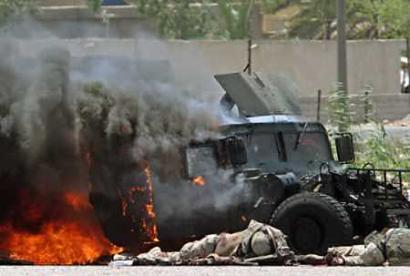
The problem here is folks who do not understand high explosives (HE) which are sometimes not as powerful when they have been in an old artillery shell and not tamped going off and not killing anyone from time to time. This does not validate being stupid in a truck.
Tell the families of the dead Soldiers in the picture above of a burning M1114 UPH that the Humvee truck is the "right" vehicle for the Iraq. Its the right road-bound vehicle if you want to provide the enemy easy targets to create dead Americans at a rate of 2 dead per day.
Also lets stop making excuses for the military's truck incompetence by calling roadside bombs "IEDs" so it covers their asses by making these look like new things when they are not.
If we want a military of weak co-dependants who hunker down in base camps afriad to patrol & stay because they are in road-bound trucks that are easily ambushed we will continue to get our asses kicked and our wallets drained by $150K M1114 UPH "success" stories, All because we have a BS military that doesn't want to ADAPT but wants to preserve the BS garrison lifestyle built around Humvee trucks so when Iraq is over they can return to lawn mowing, paperwork and ego games.
BREAKING NEWS! ARMY BRASS AFTER 2 YEARS OF HEAVY CASUALTIES IN IRAQ WANT TO BUY GASOLINE POWERED UNARMORED TRUCKS FOR OUR TROOPS IN IRAQ.
This web page details why slapping armor onto wheeled Humvee/Stryker trucks is fundamentally unsound. What has just come to light is so troubling and disgusting after 20, 000 Americans have been destroyed in Iraq service as dead or wounded it is almost beyond words.
Here is a pic of the unarmored, rubber-tired pick-up trucks we are giving to the Iraqi Highway patrol.
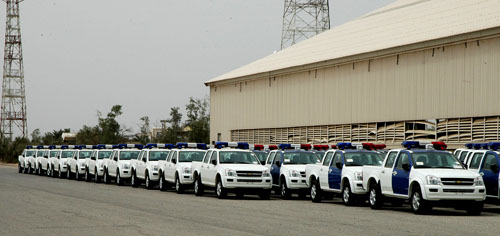
Duhh.
Doesn't anyone realize a WAR IS GOING ON?
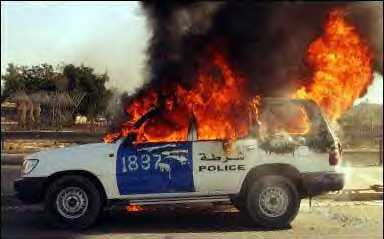
www.strategypage.com/fyeo/howtomakewar/default.asp?target=HTARM.HTM
May 31, 2005: With hummers being used as combat vehicles in Iraq, the U.S. Army is buying 19,000 Chrysler minivans and 5,000 Pacifica SUVs to provide more economical transportation in non-combat areas. The 2.2 ton Chrysler vehicles get about 27 kilometers per gallon of gas. The hummer gets about 14 kilometers per gallon of gas (most run on diesel, which doubles fuel efficiency), and weighs 2.6 tons. Gasoline is easier to get in Iraq than diesel, or JP-8 (which powers a lot of American military equipment). The hummers cost $75,000, nearly three times the cost of the Chrysler vehicles, which will be gold in color when delivered to American troops. Most of the American troops in Iraq are operating in non-combat areas, either in large bases, or the northern and southern parts of the country where there is little violence.
There are no "non-combat areas" in Iraq. This includes within the base camps. I sure as hell don't want to be inside a gas-powered, unarmored truck when a mortar or rocket hits.
This is all about Schoomaker and his light infantry narcissists spending money on the bullshit trucks they lust for.
The result is America's youth are rejecting such troops-in-trucks BS by not being a part of it. Recruiting has evaporated.
We have told the American people again and again that the Army narcissist snobs want a linear battlefield that does not exist so they can pinch pennies and have an underclass drive around in BS trucks. Now do you see it? How many more must die? How many more must be maimed?
Humvees don't work in combat: NYT Reporter exposes that vehicles need to be V-Hull Shaped
Moss is the first reporter to reveal that ground vehicles must be V-hull shaped to defelect bomb blasts. We have been warning everyone all along the vehicles need to be V-hull shaped. Now that DoD and the brass have suddenly "realized" that slapping armor onto ill-shaped trucks doesn't work they are on the V-hull shape "bandwagon". At the rate we are going, by the time every one of our Soldiers and marines are dead they will finally understand ground combat vehicle design factors they should have known about from the beginning by ASKING EXPERTS FOR ADVICE. Their pride and ignorance that refuses to learn from the combat experiences of others is killing and maiming our men and sadly women, too.
We're somehow "winning" by being stupid and giving the enemy wheeled trucks packed with women to blow up?
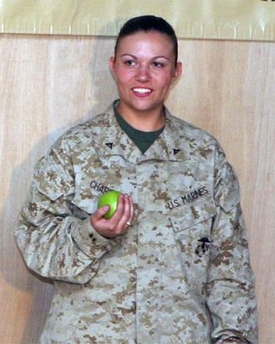
http://us.news3.yimg.com/us.i2.yimg.com/p/ap/20050625/capt.wxs10206252203.iraq_marine_death_wxs102.jpg?x=275&y=345&sig=HOg1J.pvSWzJGlY8qocnng--
In this March 26, 2005, photo released by the U.S. marines, Lance Cpl. Holly Charette, 21, is seen at Camp Blue Diamonnd, in Ar Ramadi, Iraq. Charette, died Thursday after a vehicle carrying explosives struck her vehicle in Fallujah, Iraq, the Defense Department said. A suicide bomber struck Charette's convoy as she and a group of marines returned to their base Thursday. At least four marines, including Charette, were killed and 11 of the 13 injured troops were women, the Pentagon said Saturday. Gov.Don Carcieri on Saturday ordered state flags lowered in honor Charette. (AP Photo/U.S. marines, Staff Sgt. Timothy S. Edwards)
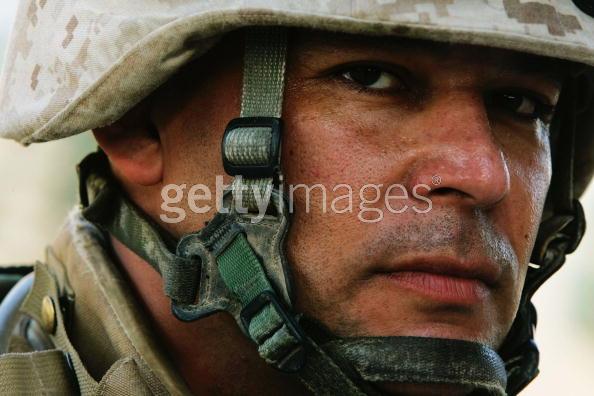
http://cache.gettyimages.com/comp/53152265.jpg?x=x&dasite=MS_GINS&ef=2&ev=1&dareq=E2399169AC85D6DE9A21091711E5AD1E4D3846366D6D0DCD7757C85AE85A779B
U.S. marine Staff Sgt. Jesus Arriaga, from El Paso, Texas, poses upon returning to the third battalion, fourth marines field base from patrol June 26, 2005 in Fallujah, Iraq. Arriaga, 31, was among the first to respond to the suicide bombing that killed three female marines on June 23, and said the horror what he saw haunts him. "It was so hot from the fire that weapons melted. A marine was cut in half under the truck, and I had to pick up body parts," Arriaga said. marines with the third battalion, fourth marines have had a storied history in Iraq, which includes being the U.S. troops that famously pulled down the statue of Saddam Hussein in Baghdad, and leading the first assault on Fallujah in April 2004. The 3/4 are on their third tour of duty in Iraq and are scheduled to return home in July, 2005.
THE ANSWER IS TO V-HULL SHAPE OUR M113 GAVIN LIGHT TRACKS WHICH WE HAVE THOUSANDS OF AND SUPPLY THEM TO OUR TROOPS NOT BUY EXPENSIVE, INFERIOR WHEELED TRUCKS, EVEN V-HULLED ONES.
www.nytimes.com/2005/06/26/international/middleeast/26armor.html
June 26, 2005Safer Vehicles for Soldiers: A Tale of Delays and Glitches
By MICHAEL MOSS
When Defense Secretary Donald H. Rumsfeld visited Iraq last year to tour the Abu Ghraib prison camp, military officials did not rely on a government-issued Humvee to transport him safely on the ground. Instead, they turned to Halliburton, the oil services contractor, which lent the Pentagon a rolling fortress of steel called the Rhino Runner.
State Department officials traveling in Iraq use armored vehicles that are built with V-shaped hulls to better deflect bullets and bombs. Members of Congress favor another model, called the M1117, which can endure 12-pound explosives and .50-caliber armor-piercing rounds.
Unlike the Humvee, the Pentagon's vehicle of choice for American troops, the others were designed from scratch to withstand attacks in battlefields like Iraq with no safe zones. Last fall, for instance, a Rhino traveling the treacherous airport road in Baghdad endured a bomb that left a six-foot-wide crater. The passengers walked away unscathed. "I have no doubt should I have been in any other vehicle," wrote an Army captain, the lone military passenger, "the results would have been catastrophically different."
Yet more than two years into the war, efforts by United States military units to obtain large numbers of these stronger vehicles for Soldiers have faltered - even as the Pentagon's program to armor Humvees continues to be plagued by delays, an examination by The New York Times has found.
Many of the problems stem from a 40-year-old procurement system that stymies the acquisition of new equipment quickly enough to adapt to the changing demands of a modern insurgency, interviews and records show.
Among other setbacks, the M1117 lost its Pentagon money just before the invasion, and the manufacturer is now scrambling to fill rush orders from the military. The company making one of the V-shaped vehicles, the Cougar, said it had to lay off highly skilled welders last year as it waited for the contract to be completed. Even then it was paid only enough to fill half the order.
And the Rhino could not get through the Army's testing regime because its manufacturer declined to have one of its $250,000 vehicles blown up. The company said it provided the Army with testing data that demonstrate the Rhino's viability, and is using the defense secretary's visit as a seal of approval in its contract pitches to the Defense Department.
Many officials in the military and the government say the demands of war sometimes require the easing of procurement requirements like testing, and express frustration at the slow process for getting equipment.
"When you have troops in the field in a dynamic environment, where the tactics of the opposition are changing on a regular basis, you have to be nimble and quick," said Representative Rob Simmons, a Connecticut Republican on the Armed Services Committee. "If you're not nimble and quick and adaptable, people will die."
Nearly a decade ago, the Pentagon was warned by its own experts that superior vehicles would be needed to protect American troops. The Army's vehicle-program manager urged the Pentagon in 1996 to move beyond the Humvee, interviews and Army records show, saying it was built for the cold war. Its flat-bottom-chassis design is 25 years old, never intended for combat, and the added armor at best protects only the front end from the heftier insurgent bombs, military officials concede.
But as the procurement system stumbled and the Defense Department resisted allocating money for more expensive vehicles, interviews and records show, the military ended up largely dependent on Humvees - a vast majority of which did not yet have any armor - in both combat and noncombat operations in the war.
Today, commuting from post to post in Iraq is one of the deadliest tasks for soldiers. At least 73 American military personnel were killed on the roads of Iraq in May and June as insurgent attacks spiked. In May alone, there were 700 bombings against American forces, the most since the invasion in March 2003. Late Thursday, a suicide car bomber killed five marines and a sailor in a convoy of mostly female marines who were returning to camp in Falluja. Thirteen others were injured. Officials said the vehicles most likely included a seven-ton truck.
Last winter, 135 convoys were attacked on the Baghdad airport road alone, and even the most fully armored Humvee is no longer safe from the increasingly powerful insurgency bombs.
Marine Corps generals last week disclosed in a footnote to their remarks to Congress that two of their best-armored Humvees were destroyed, while a marine spokeswoman in Iraq said five marines riding in one such Humvee were killed this month in a roadside bomb attack.
Still, thousands of Humvees in Iraq do not have this much protection.
The Pentagon has repeatedly said no vehicle leaves camp without armor. But according to military records and interviews with officials, about half of the Army's 20,000 Humvees have improvised shielding that typically leaves the underside unprotected, while only one in six Humvees used by the marines is armored at the highest level of protection.
The Defense Department continues to rely on just one small company in Ohio to armor Humvees. And the company, O'Gara-Hess & Eisenhardt, has waged an aggressive campaign to hold onto its exclusive deal even as soaring rush orders from Iraq have been plagued by delays. The Marine Corps, for example, is still awaiting the 498 armored Humvees it sought last fall, officials told The Times.
In January, when military officials tried to speed production by buying the legal rights to the armor design so they could enlist other venders to help, O'Gara demurred, calling the move a threat to its "current and future competitive position," according to e-mail records obtained from the Army.
Defense Department officials defended their efforts in supplying troops with armored vehicles, saying they have managed to convert a largely unarmored fleet into one in which every vehicle in combat has some level of shielding.
"We are constantly assessing and making the necessary adjustments to make sure they have the best possible protection this country can provide," said a Pentagon spokesman, Bryan G. Whitman, adding that no amount of armor would defeat the insurgency's biggest bombs. He said Mr. Rumsfeld had ridden in many types of vehicles, including Humvees, and "travels in whatever vehicle the commander feels is appropriate."
The Defense Department created a task force last winter that is charged with revamping its entire fleet of light vehicles, including the Humvee.
Some say these efforts, however resolute, will suffer if the Pentagon does not also overhaul its underlying procurement system.
"There's been a confluence of factors that colluded to keep this system hidebound," said Dov S. Zakheim, the Pentagon's comptroller until May 2004. "It's going to take a joint effort by Congress and the executive branch working in good faith, and I underline good faith, to bring about a change."
Old Problems, New Details
By the time an Army National Guard member complained to Mr. Rumsfeld in December that troops were still scrounging for steel to fortify their Humvees, the Pentagon's troubles with armoring vehicles had been years in the making.
The collapse of the Soviet Union and the rise of insurgencies more than a decade earlier had changed the dynamics of war for American troops. The problem came into bloody relief in Mogadishu, Somalia, in 1993 when militia members cornered and killed 18 American Soldiers who were trying to capture a warlord's top assistants using Black Hawk helicopters and unarmored Humvees.
At an Army command center in Warren, Mich., John D. Weaver saw the events unfold and set out to revamp the light-vehicle program that he managed.
One option came from executives at O'Gara, who proposed adding the extra steel shielding to Humvees. Mr. Weaver praised the effort but foresaw some flaws, he said in interviews.
Because the Humvee's hull is flat, its underbelly absorbs the force of blasts more readily than combat vehicles with angled bodies.
Moreover, the chassis can carry only so much armor, leaving the rear more exposed.
And while land mines were the biggest threat at the time, Mr. Weaver said his group began worrying about a more insidious one: a fragmentation mine called the M-18 Claymore.
Developed by the United States for the Vietnam War, the device can be remotely detonated to hurl its 700 steel spheres at any part of a passing vehicle - much like the improvised devices that insurgents are using in Iraq.
That means the armored Humvee is vulnerable to a timed attack that focuses on its underbelly or rear, Mr. Weaver said.
Its box shape also makes it less able to deflect low-flying bullets.
"We need to invest more in the details of the design, to integrate state-of-the-art material, which, while costing more, weighs less and provides greater levels of protection," Mr. Weaver wrote in a paper presented to the Army's 1996 armor conference at Fort Knox, Ky. "Finally, we must overcome the paradigm that wheels are cheap and 'throw away.' The vehicle may be, but the occupants are not."
By 1997, when Mr. Weaver left his post, he was helping draft an Army mandate requiring new vehicles like the M1117. "I'm not sure anybody got their arms around what was needed," he said.
By 1999, the Army began buying a limited number of M1117's. Three years later, it canceled the program.
At roughly $700,000 each, the M1117 is considerably more expensive than the current $140,000 price for an armored Humvee.
"This decision is based upon budget priorities," Claude M. Bolton Jr., an assistant Army secretary, wrote to Congress in 2002. Existing vehicles, he added, can be used instead "without exposing our soldiers to an unacceptable level of risk."
Yet the military was reluctant to mass-produce the armored Humvee, with many in the Army agreeing that the vehicle made little tactical sense.
By the time the Iraq war started, the Army had been ordering only 360 armored Humvees a year.
"We never intended to up-armor all the Humvees," said Les Brownlee, who was the acting Army secretary from 2001 until late last year.
"The Humvee is a carrier and derives its advantage from having cross-country mobility, and when you load it down with armor plating, you lose that."
But just months into the war in Iraq, it was lives the Pentagon was losing, and it reached for the quickest solution.
Clinging to a Contract
What the Defense Department thought would be the easiest option turned out otherwise.
The Humvee chassis is rapidly made on a vast assembly line near South Bend, Ind., by AM General. But before its vehicles can be rushed to Iraq, they are trucked four and a half hours to O'Gara's shop in Fairfield, in southern Ohio - which had 94 people armoring one Humvee a day when the war began. There, the Humvees are partly dismantled so the armor can be added.
"Clearly, if you could have started from scratch you wouldn't be doing it that way," Mr. Brownlee said in a recent interview.
In February 2004, Mr. Brownlee visited the O'Gara plant and asked the company to increase production, gradually pushing its monthly output to 450 from 220 vehicles. The Defense Department also wanted to contract with other companies to make armor.
Determined to hold onto its exclusive contract, O'Gara began lobbying Capitol Hill. Among those it drew to its side was Brian T. Hart, an outspoken father of a Soldier who was killed in October 2003 while riding in a Humvee. Early last year, as a guest on a national radio show, Mr. Hart urged the Pentagon to involve more armor makers. Two weeks later a lobbyist for O'Gara approached him.
"He informed me that the company had more than enough capacity," Mr. Hart says. "There was no need to second-source."
Mr. Hart then redirected his efforts to help the company push Congress into forcing the Pentagon to buy more armored Humvees. With support from both parties, the company has received more than $1 billion in the past 18 months in military armoring contracts.
Meanwhile, the Army did not give up on trying to speed production by involving more armor makers. Brig. Gen. Patrick O'Reilly said several armor companies were eager to be part of a plan to produce armored Humvees entirely on AM General's assembly line.
In January, when it asked O'Gara to name its price for the design rights for the armor, the company balked and suggested instead that the rights be placed in escrow for the Army to grab should the company ever fail to perform.
"Let's try this again," an Army major replied to the company in an e-mail message. "The question concerned the cost, not a request for an opinion."
The Army has dropped the matter for now, General O'Reilly said, adding that he hoped to have other companies making armor by next April.
Robert F. Mecredy, president of the aerospace and defense group at Armor Holdings, the parent company of O'Gara, acknowledged that the company was protecting its commercial interests. But, he said, the company has proved it can do the Humvee work and he blamed the Defense Department for delays. Military officials concede that it sometimes took months for requests made in Iraq to filter through the Defense Department. O'Gara says it has armored nearly 7,200 Humvees since the war began, and while there is a persistent need for more in Iraq, the company stresses that the Pentagon keeps changing its orders: from 3,600 in the fall of 2003 to 8,105 last year to more than 10,000 today.
Asked why the marine corps is still waiting for the 498 Humvees it ordered last year, O'Gara acknowledged that it told the Marines it was backed up with Army orders, and has only begun filling the marines' request this month. But the company says the marine corps never asked it to rush.
The marine corps denies this, but acknowledges that it did not get the money to actually place the order until this February. Officials now say they need to buy 2,600 to replace their Humvees in Iraq that still have only improvised armor.
Beyond the Humvee

Cougar truck by HumveeWith insurgents using increasingly powerful bombs and bullets, American troops in Iraq have been looking beyond the Humvee.
When the marine corps returned to Iraq last year, it settled on the Cougar as a superior vehicle to perform one of its main jobs: searching the roads for improvised explosive devices, or I.E.D.'s. The Cougar can take more than twice the explosive punch as the armored Humvee and deflect .50-caliber armor piercing bullets. British troops had used the vehicle during the invasion.
The marines used a new ordering method called the Urgent Universal Need Statement, which allows it to skip competitive bidding, to speed the process, officials said.
Even at that, the marines corps took two months to complete a product study, its records show. The contract took two more months to prepare. By then, one of its units in Iraq, Company E of the first marine division, was suffering the highest casualty rate of the war; more than half of the 21 marines killed were riding in Humvees with improvised armor or none at all.
When the Cougar order was completed in April 2004, the marine corps got only enough money from the Iraq war fund to buy 15 of the 27 Cougars it wanted. "This start-stop game is driving everybody nuts," Michael Aldrich, an executive with the Cougar's maker, Force Protection, said in a recent interview.
Marine corps officials, who have high praise for the Cougars they have, said they needed to move cautiously for fear of overwhelming the company, which had only 39 workers. It now has 250 and is racing to fill a new order for 122 Cougars, at $630,000 apiece, by next February.
"I think we are moving about as fast as we could move," Mr. Aldrich said. "It's the chicken and egg. If you don't have the order you can't make the investment, and there are extremely long lead times" on the components.
Wars are always tricky affairs for military contractors that are asked to ramp up overnight. But for this and other makers of armored vehicles, the Iraq war has been especially challenging.
To get Congress's attention last year, Mr. Aldrich compiled maps that showed the number of troops from each state who had died in Iraq in vehicles that were inadequately armored.
"I got some very open pupils and a couple of gasps and a couple of questions on who I had showed this to," said Mr. Aldrich, who presented his findings during the fall election campaign when the issue of equipping troops became a focus of intense debate. "The Republicans wanted to know if I showed it to the Democrats, and the Democrats wanted to know if I showed it to the Republicans."
The M1117, made by Textron in Louisiana, had advocates in that state's senators, who told Gen. Peter J. Schoomaker, the Army chief of staff, in a September 2003 letter that the vehicle was superior to the armored Humvee in blast and bullet protection.
Still, the M1117 did not shake off its 2002 cancellation until last summer, when the Army began placing a series of orders totaling 290. The company, which will make 16 vehicles this month, has been asked to more than triple that pace by next March, Textron officials said.
Labock Technologies, which makes the Rhino Runner in Israel, thought it had the best advertising ever. Besides posting photographs of Mr. Rumsfeld aboard the Rhino at Abu Ghraib, the company has pictures of a shackled Saddam Hussein going to court last summer, with the headline: "So safe. ... some V.I.P. won't ride anything else."
The Defense Department says some military personnel are using the privately owned Rhinos that run the gantlet of bombs on the airport road. But with the Army not accepting the company's test results, and Labock not wanting to destroy a Rhino on the chance of getting orders, some Soldiers in Iraq are doing their own lobbying.
Last month, the company says, an Army colonel and two other Soldiers at Camp Victory in Baghdad picked up a satellite phone and called Labock at its Florida office to pepper the company with questions about performance, price and how fast it could deliver.
Mark Dunlap, a company executive, said in recounting the exchange, "They said they would run it up their chain of command."
New York Times article: USMC rank & file: Humvee trucks don't work even with armor on; only heavier tracked armored vehicles will do the job
USMC Brass loves wheeled narcissist wagons: when their men die they smugly remark: "too bad. this is war" from their air-conditioned offices far from danger.
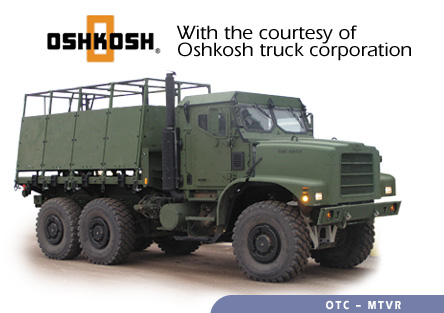
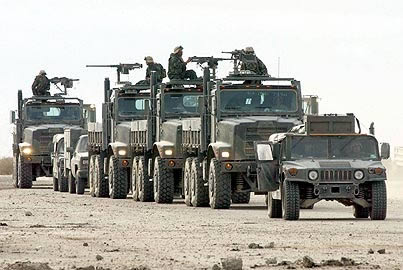
1. Mattis is a sick war-monger and snob as seen by his smug comments reveling in killing the enemy. He also is incompetent when it comes to warfare and doesn't give a crap about even his own men. We expect Pace as CJCS will bring even further troops-in-trucks ruin to the U.S. military. Both should be fired not promoted.
2. Troops-in-trucks is driven by egomaniac narcissists in both Army and USMC who think man with a rifle in his hands is the answer to everything. Some of you may disagree because this is a truth you do not want to admit so we'll move on to point #3.
3. Troops-in-trucks is not solved by slapping armor onto trucks even store bought, factory-made M1114 UPHs as the article infers. We need a LIGHT INFANTRY that has LIGHT TRACKED ARMORED FIGHTING VEHICLES FOR 3D MANEUVER not light infantry in very heavy ground pressure trucks. We need to fight anywhere in the world and WIN not just get by with armor on trucks. God help us if we have to fight in the far east again with rubber-tired trucks.
4. So if the USMC was thinking correctly on this issue it would realize that its ad hocery based on 1/3 of its foot troops hitching a ride from ship to shore in bloated AAVs and soon AAAV (EFVs) holding 20-25 men while another 1/3 rides by helicopters to shore then walks, and another 1/3 rides in trucks/landing craft to shore is tactically unsound. Walking to fight as your baseline option is WW1 BS and vivid proof that the USMC talks a great game about being 4th generation warfare thinkers when they are 1st generation warfare doers. John Poole and his anti-mechanized warfare ideas are part of the problem not the solution.
5. Talk is cheap. The reason why we constantly fight for tracks is because anything else is lying BS from the brass and pundits. The troops know better and are voting with their feet, this is why recruiting is down. You can say whatever you want about wheels being good enough, the young men of America are rejecting what you are selling. The solution here is to stop the wheeled BS, mass modify and mass produce affordable, agile, small 9-man squad carrier M113 Gavin light tracks with multiple armor layers and get our Army/marine light infantry and support troops out of their doldrums. M113 Gavins can be made ship-to-shore swim capable to meet USMC requirements and they can fly by CH-53E helicopters externally and the CH-53 HLR internally. If USMC wants 13 man bloated rifle squads, the M113 Gavin can be stretched to MTVL size; but not an inch larger. The USMC has repeatedly tried to cram too many men in air and ground vehicles by oversized designs with disastrous battlefield results.
April 25, 2005
Marines From Iraq Sound Off About Want of Armor and Men
By MICHAEL MOSS
On May 29, 2004, a station wagon that Iraqi insurgents had packed with C-4 explosives blew up on a highway in Ramadi, killing four American marines who died for lack of a few inches of steel.
The four were returning to camp in an unarmored Humvee that their unit had rigged with scrap metal, but the makeshift shields rose only as high as their shoulders, photographs of the Humvee show, and the shrapnel from the bomb shot over the top.
"The steel was not high enough," said Staff Sgt. Jose S. Valerio, their motor transport chief, who along with the unit's commanding officers said the men would have lived had their vehicle been properly armored. "Most of the shrapnel wounds were to their heads."
Among those killed were Rafael Reynosa, a 28-year-old lance corporal from Santa Ana, Calif., whose wife was expecting twins, and Cody S. Calavan, a 19-year-old private first class from Lake Stevens, Wash., who had the marine corps motto, Semper Fidelis, tattooed across his back.
They were not the only losses for Company E during its six-month stint last year in Ramadi. In all, more than one-third of the unit's 185 troops were killed or wounded, the highest casualty rate of any company in the war, Marine Corps officials say.
In returning home, the leaders and marine infantrymen have chosen to break an institutional code of silence and tell their story, one they say was punctuated not only by a lack of armor, but also by a shortage of men and planning that further hampered their efforts in battle, destroyed morale and ruined the careers of some of their fiercest warriors.
The saga of Company E, part of a lionized battalion nicknamed the Magnificent Bastards, is also one of fortitude and ingenuity. The marines, based at Camp Pendleton in southern California, had been asked to rid the provincial capital of one of the most persistent insurgencies, and in enduring 26 firefights, 90 mortar attacks and more than 90 homemade bombs, they shipped their dead home and powered on. Their tour has become legendary among other marine units now serving in Iraq and facing some of the same problems.
"As marines, we are always taught that we do more with less," said Sgt. James S. King, a platoon sergeant who lost his left leg when he was blown out of the Humvee that Saturday afternoon last May. "And get the job done no matter what it takes."
The experiences of Company E's marines, pieced together through interviews at Camp Pendleton and by phone, company records and dozens of photographs taken by the marines, show they often did just that. The unit had less than half the troops who are now doing its job in Ramadi, and resorted to making dummy marines from cardboard cutouts and camouflage shirts to place in observation posts on the highway when it ran out of men. During one of its deadliest firefights, it came up short on both vehicles and troops. Marines who were stranded at their camp tried in vain to hot-wire a dump truck to help rescue their falling brothers. That day, 10 men in the unit died.
Sergeant Valerio and others had to scrounge for metal scraps to strengthen the Humvees they inherited from the National Guard, which occupied Ramadi before the marines arrived. Among other problems, the armor the marines slapped together included heavier doors that could not be latched, so they "chicken winged it" by holding them shut with their arms as they traveled.
"We were sitting out in the open, an easy target for everybody," Cpl. Toby G. Winn of Centerville, Tex., said of the shortages. "We complained about it every day, to anybody we could. They told us they were listening, but we didn't see it."
The company leaders say it is impossible to know how many lives may have been saved through better protection, since the insurgents became adept at overcoming improved defenses with more powerful weapons. Likewise, Pentagon officials say they do not know how many of the more than 1,500 American troops who have died in the war had insufficient protective gear.
But while most of Company E's work in fighting insurgents was on foot, the biggest danger the men faced came in traveling to and from camp: 13 of the 21 men who were killed had been riding in Humvees that failed to deflect bullets or bombs.
Toward the end of their tour when half of their fleet had become factory-armored, the armor's worth became starkly clear. A car bomb that the unit's commander, Capt. Kelly D. Royer, said was at least as powerful as the one on May 29 showered a fully armored Humvee with shrapnel, photographs show. The marines inside were left nearly unscathed.
Captain Royer, from Orangevale, Calif., would not accompany his troops home. He was removed from his post six days before they began leaving Ramadi, accused by his superiors of being dictatorial, records show. His defenders counter that his commanding style was a necessary response to the extreme circumstances of his unit's deployment.
Company E's experiences still resonate today both in Iraq, where two more marines were killed last week in Ramadi by the continuing insurgency, and in Washington, where Congress is still struggling to solve the Humvee problem. Just on Thursday, the Senate voted to spend an extra $213 million to buy more fully armored Humvees. The Army's procurement system, which also supplies the marines, has come under fierce criticism for underperforming in the war, and to this day it has only one small contractor in Ohio armoring new Humvees.
Marine Corps officials disclosed last month in Congressional hearings that they were now going their own way and had undertaken a crash program to equip all of their more than 2,800 Humvees in Iraq with stronger armor. The effort went into production in November and is to be completed at the end of this year.
Defense Department officials acknowledged that Company E lacked enough equipment and men, but said that those were problems experienced by many troops when the insurgency intensified last year, and that vigorous efforts had been made to improve their circumstances.
Lt. Gen. James N. Mattis of Richland, Wash., who commanded the first marine Division to which Company E belongs, said he had taken every possible step to support Company E. He added that they had received more factory-armored Humvees than any other unit in Iraq.
"We could not encase men in sufficiently strong armor to deny any enemy success," General Mattis said. "The tragic loss of our men does not necessarily indicate failure - it is war." [Egomaniac more concerned with his career shown by code word of "failure"]
Trouble From the Start
Company E's troubles began at Camp Pendleton when, just seven days before the unit left for Iraq, it lost its first commander. The captain who led them through training was relieved for reasons his supervisor declined to discuss.
"That was like losing your quarterback on game day," said First Sgt. Curtis E. Winfree.
In Kuwait, where the unit stopped over, an 18-year-old private committed suicide in a chapel. Then en route to Ramadi, they lost the few armored plates they had earmarked for their vehicles when the steel was borrowed by another unit that failed to return it. Company E tracked the steel down and took it back.
Even at that, the armor was mostly just scrap and thin, and they needed more for the unarmored Humvees they inherited from the Florida National Guard.
"It was pitiful," said Capt. Chae J. Han, a member of a Pentagon team that surveyed the marine camps in Iraq last year to document their condition. "Everything was just slapped on armor, just homemade, not armor that was given to us through the normal logistical system."
The report they produced was classified, but Captain Royer, who took over command of the unit, and other Company E marines say they had to build barriers at the camp - a former junkyard - to block suicide drivers, improve the fencing and move the toilets under a thick roof to avoid the insurgent shelling.
Even some maps they were given to plan raids were several years old, showing farmland where in fact there were homes, said a company intelligence expert, Cpl. Charles V. Lauersdorf, who later went to work for the Defense Intelligence Agency. There, he discovered up-to-date imagery that had not found its way to the front lines. Ramadi had been quiet under the National Guard, but the marines had orders to root out an insurgency that was using the provincial capital as a way station to Falluja and Baghdad, said Lt. Col. Paul J. Kennedy, who oversaw Company E as the commander of its Second Battalion, Fourth marine regiment.
Before the company's first month was up, Lance Cpl. William J. Wiscowiche of Victorville, Calif., lay dead on the main highway as its first casualty. The marine corps issued a statement saying only that he had died in action. But for Company E, it was the first reality check on the constraints that would mark their tour.
Sweeping for Bombs
A British officer had taught them to sweep the roads for bombs by boxing off sections and fanning out troops into adjoining neighborhoods in hopes of scaring away insurgents poised to set off the bombs. "We didn't have the time to do that," said Sgt. Charles R. Sheldon of Solana Beach, Calif. "We had to clear this long section of highway, and it usually took us all day."
Now and then a Humvee would speed through equipped with an electronic device intended to block detonation of makeshift bombs. The battalion, which had five companies in its fold, had only a handful of the devices, Colonel Kennedy said.
Company E had none, even though sweeping roads for bombs was one of its main duties. So many of the marines, like Corporal Wiscowiche, had to rely on their eyes. On duty on March 30, 2004, the 20-year-old lance corporal did not spot the telltale three-inch wires sticking out of the dust until he was a few feet away, the company's leaders say. He died when the bomb was set off.
"We had just left the base," Corporal Winn said. "He was walking in the middle of the road, and all I remember is hearing a big explosion and seeing a big cloud of smoke."
The endless task of walking the highways for newly hidden I.E.D.'s, or improvised explosive devices, "was nerve wracking," Corporal Winn said, and the company began using binoculars and the scopes on their rifles to spot the bombs after Corporal Wiscowiche was killed.
"Halfway through the deployment marines began getting good at spotting little things," Sergeant Sheldon added. "We had marines riding down the road at 60 miles an hour, and they would spot a copper filament sticking out of a block of cement."
General Mattis said troops in the area now have hundreds of the electronic devices to foil the I.E.D.'s.
In parceling out Ramadi, the marine corps leadership gave Company E more than 10 square miles to control, far more than the battalion's other companies. Captain Royer said he had informally asked for an extra platoon, or 44 marines, and had been told the battalion was seeking an extra company. The battalion's operations officer, Maj. John D. Harrill, said the battalion had received sporadic assistance from the Army and had given Company E extra help. General Mattis says he could not pull marines from another part of Iraq because "there were tough fights going on everywhere."
Colonel Kennedy said Company E's area was less dense, but the pressure it put on the marines came to a boil on April 6, 2004, when the company had to empty its camp - leaving the cooks to guard the gates - to deal with three firefights.
Ten of its troops were killed that day, including eight who died when the Humvee they were riding in was ambushed en route to assist other marines under fire. That Humvee lacked even the improvised steel on the back where most of the marines sat, Company E leaders say. "All I saw was sandbags, blood and dead bodies," Sergeant Valerio said. "There was no protection in the back."
Captain Royer said more armor would not have even helped. The insurgents had a .50-caliber machine gun that punched huge holes through its windshield. Only a heavier combat vehicle could have withstood the barrage, he said, but the unit had none. Defense Department officials have said they favored Humvees over tanks in Iraq because they were less imposing to civilians.
The Humvee that trailed behind that day, which did have improvised armor, was hit with less powerful munitions, and the marines riding in it survived by hunkering down. "The rounds were pinging," Sergeant Sheldon said. "Then in a lull they returned fire and got out." Captain Royer said that he photographed the Humvees in which his men died to show to any official who asked about the condition of their armor, but that no one ever did.
Sergeant Valerio redoubled his effort to fortify the Humvees by begging other branches of the military for scraps. "How am I going to leave those kids out there in those Humvees," he recalled asking himself.
The company of 185 marines had only two Humvees and three trucks when it arrived, so just getting them into his shop was a logistical chore, Sergeant Valerio said. He also worried that the steel could come loose in a blast and become deadly shrapnel. For the gunners who rode atop, Sergeant Valerio stitched together bulletproof shoulder pads into chaps to protect their legs.
"That guy was amazing," First Sgt. Bernard Coleman said. "He was under a vehicle when a mortar landed, and he caught some in the leg. When the mortar fire stopped, he went right back to work."
A Captain's Fate
Lt. Sean J. Schickel remembers Captain Royer asking a high-ranking marine corps visitor whether the company would be getting more factory-armored Humvees. The official said they had not been requested and that there were production constraints, Lieutenant Schickel said.
Recalls Captain Royer: "I'm thinking we have our most precious resource engaged in combat, and certainly the wealth of our nation can provide young, selfless men with what they need to accomplish their mission. That's an erudite way of putting it. I have a much more guttural response that I won't give you."
Captain Royer was later relieved of command. General Mattis and Colonel Kennedy declined to discuss the matter. His first fitness report, issued on May 31, 2004, after the company's deadliest firefights, concluded, "He has single-handedly reshaped a company in sore need of a leader; succeeded in forming a cohesive fighting force that is battle-tested and worthy."
The second, on Sept. 1, 2004, gave him opposite marks for leadership. "He has been described on numerous occasions as 'dictatorial,' " it said. "There is no morale or motivation in his marines." His defenders say he drove his troops as hard as he drove himself, but was wrongly blamed for problems like armor. "Captain Royer was a decent man that was used for a dirty job and thrown away by his chain of command," Sergeant Sheldon said.
Today, Captain Royer is at Camp Pendleton contesting his fitness report, which could force him to retire. Company E is awaiting deployment to Okinawa, Japan. Some members have moved to other units, or are leaving the marines altogether.
"I'm checking out," Corporal Winn said. "When I started, I wanted to make it my career. I've had enough."
SOLDIER BURNS TO DEATH IN "ARMORED" HMMWV
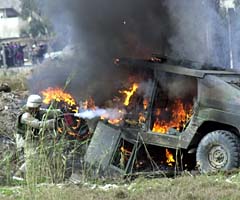
www.pigstye.net/iraq/article.php?story=20040309081059108
2004-03-02 Spc Michael R Woodliff 22 Port Charlotte FL Headquarters and Headquarters Company, 1st Battalion, 37th Armor Army. Woodliff died March 2 in Baghdad, Iraq, when an improvised explosive device struck his convoy. Michael, a specialist 4 was killed Tuesday in Baghdad when guerrillas threw a bomb into his Humvee. A second occupant of the vehicle was seriously wounded, according to Reuters reports. The "ARMORED HMMWV" is no solution for troop protection in Iraq.
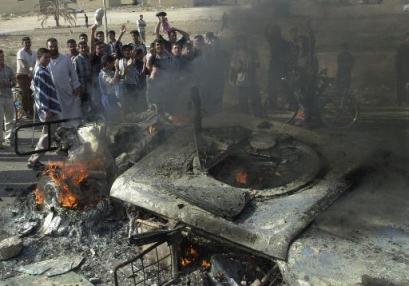
You can tell this is an armored HMMWV by its steel roof with gun mount.
Yahoo! News Photos - Iraq
http://story.news.yahoo.com/news?g=events/iraq/082701iraqplane&a=&tmpl=sl&ns=&l=1&e=79&a=&printer=
Iraqi men cheer by an American humvee that burns after it came under attack during a shootout in the Iraqi town of Fallujah, west of Baghdad, Thursday March 25, 2004. There were no immediate reports of injuries. (AP Photo/Khalid Mohammed)

This is more obvious proof that HMMWV trucks are NOT combat vehicles and if attacked by crowds can be set ablaze! ALL troops in Iraq should ride in higher, window and doorless, roll on steel tracks with rubber pads, better-protected M113 Gavin light tracks as the MINIMUM transportation standard.
http://story.news.yahoo.com/news?g=events/iraq/082701iraqplane&a=&tmpl=sl&ns=&l=&e=62&a=&t=&prev=61
Iraqi youths celebrate after a U.S. Army Humvee vehicle was set ablaze following a shootout between American forces and guerrillas in the restive town of Falluja March 25, 2004. Insurgents killed one marine and injured two with a combination of a roadside bomb, rocket-propelled grenades and small arms, the Army said. Photo by Mohammed Khodor/Reuters
Progress in Iraq or more Army "spin"?
1. Perpetuates lie that HMMWVs that can't pivot turn are agile in streets CYA for past motorized troop use
2. Term "motorized" use by LTG Cody probably comes from our AMS book, at least the label is intellectually honest, though troops shouldn't be in combat in trucks if we can avoid it (we can)
3. Who says tracked tanks can only go 30 mph?
M113A3 Gavins are listed at 41 mph, I've taken them to 50 mph with steel tracks. Hmmmm
4. What "armor" has been added to our beloved M113 Gavins according to Gen Kern?
5. Strykers have NOT done well in all conditions they have turned over and gotten stuck easily (see our photos below)
6. M113 Gavins need to operate in narrow streets NOT HMMWV trucks. Army here is lumping light tracks in with medium and heavy tracks to create appearance that they are not agile due to size, when M113 Gavin is HMMWV sized and far more mobile.
7. M113 Gavin light tracks should be used as COMBAT vehicles since troops can fight with heads-out from top-troop hatch with GUNSHIELDS since Bradley personnel are reluctant to use turret combat over-ride and have their dismounts fight through open top rear hatch. Sadly, BFVs do not have gunshields yet.
8. How are you going to gather "intel" and relate to civilians if you are whizzing by as fast as you can in your vulnerable Humvee/Stryker truck to try to dodge roadside bombs?
InsideDefense Inside the ArmyAbrams, Bradleys get the call
ARMY TO SEND MORE HEAVY ARMORED VEHICLES WITH NEXT ROTATION
Date: May 10, 2004
Commanders in theater have asked the Army to send the next round of Soldiers to Iraq with more heavy armor, senior service officials said last week.
Lt. Gen. Ricardo Sanchez and Lt. Gen. Thomas Metz requested the additional armored vehicles because attacks from rocket-propelled grenades and improvised explosive devices have increased, Gen. Paul Kern, commander of Army Materiel Command, told Inside the Army.
The decision will change the ratio of heavily armored vehicles to light armored vehicles, said Lt. Gen. Richard Cody, during a May 4 press briefing. In the last rotation, two-thirds of a division's vehicles were "motorized" by wheeled vehicles such as humvees; the other one-third contained "mechanized" vehicles, such as Bradley Fighting Vehicles or M1 Abrams tanks. The new formation will comprise four mechanized companies and five motorized companies, Cody said.
U.S. Central Command had asked the Army to consider equipping three National Guard brigades this way, Cody said.
Moving vehicles in this way will allow the Army to "cascade," Cody said, which will enable the service to displace up-armored humvees from the 1st Cavalry Division and the 1st Infantry Division for use by combat service support units.
These changes are surfacing in response to the tactical scenario, Kern said in a May 5 interview. When the conflict moves into urban areas, humvees and up-armored humvees can skillfully navigate the streets. But areas with more space to maneuver, such as convoys, now will require more heavily armored vehicles such as the Bradley or Abrams tanks, he said.
Along with heavily armored vehicles, Kern said the Armored Security Vehicle and the M113 Light Armored Vehicle, known as the "Gavin," will begin to make more appearances in theater. The ASV will be used primarily for military police, and the Army has requested that manufacturer Textron produce 28 more vehicles than it had planned (ITA, May 3, p1).
The Gavin, which was used in Vietnam, will be used for medical operations and as command post vehicles, Kern said. Some have been equipped with armor, and they contain improved transmissions and engines, he said.
Regarding Stryker, the Army is considering accelerating the creation of the last four brigades, Cody said. The service has already built the first two Stryker Brigade Combat Teams. Building the remaining four faster than planned, however, is unrelated to the need for additional armor in Iraq, he said.
In building the first two teams, the Army has learned better ways of fielding and conducting combined arms training. "So we might be able to carve off two months here or there," Cody said.
Kern said Stryker vehicles have done very well in all conditions. The vehicles provide a level of maneuverability and speed -- up to 60 miles per hour -- that exceeds that of tanks, which are limited to speeds of 30 miles per hour in short bursts.
U.S. Forces Command chief Gen. Larry Ellis suggested the Army could speed the number of Stryker vehicles in the field by possibly pulling funding from the Bradley refurbishment program (ITA, April 26, p1).
Bradleys and Abrams have encountered maintenance difficulties during the war. Last summer, the unanticipated overuse of tanks in theater chewed up the service's supply of tracks (ITA, Aug. 25, 2003, p1).
However, this year, the Army has ramped up repair and rebuilding efforts for tanks and their components, said Kern, lauding the efforts of the Red River Army Depot, TX; General Dynamics Land Systems in Alabama; and Goodyear in Ohio.
Good stock on hand and the prepositioned equipment stock contains a "fair amount" of tracking. "I won't tell you we couldn't run out, but we're in a better position" than last year, Kern said.
Putting more armor into theater, along with the high density of troops, will require more funding, Kern said. Depending on the use of equipment, the amount of a potential supplemental becomes important, he said.
Kern added that the Defense Department also has the option of reprogramming dollars for the Army, and that the Army is working to do so. During a recent mid-year review, the Army received an additional $300 million to $500 million to sustain current operations, for rebuilding and preparing items for deployment and for the operational costs of managing the process.
-- Jen DiMascio (c) 2004 Inside Washington Publishers

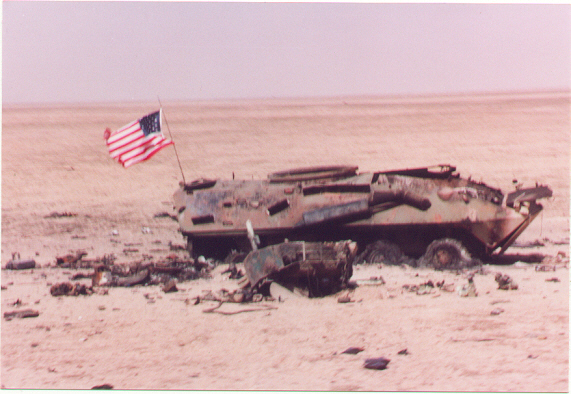
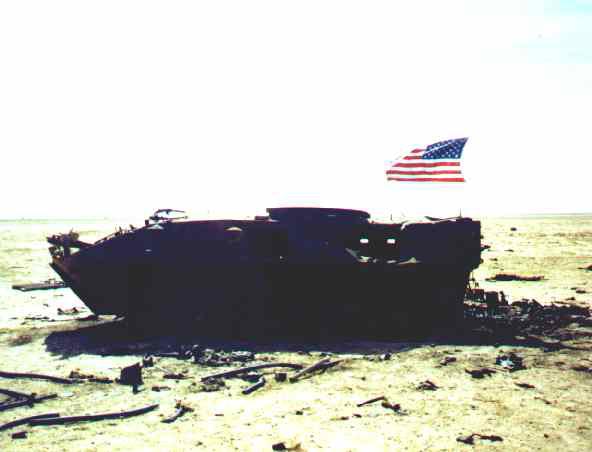
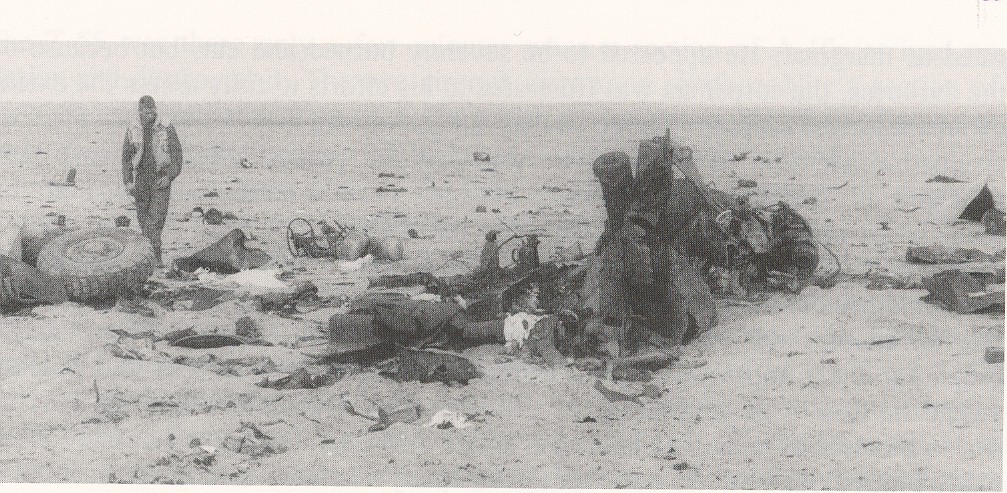
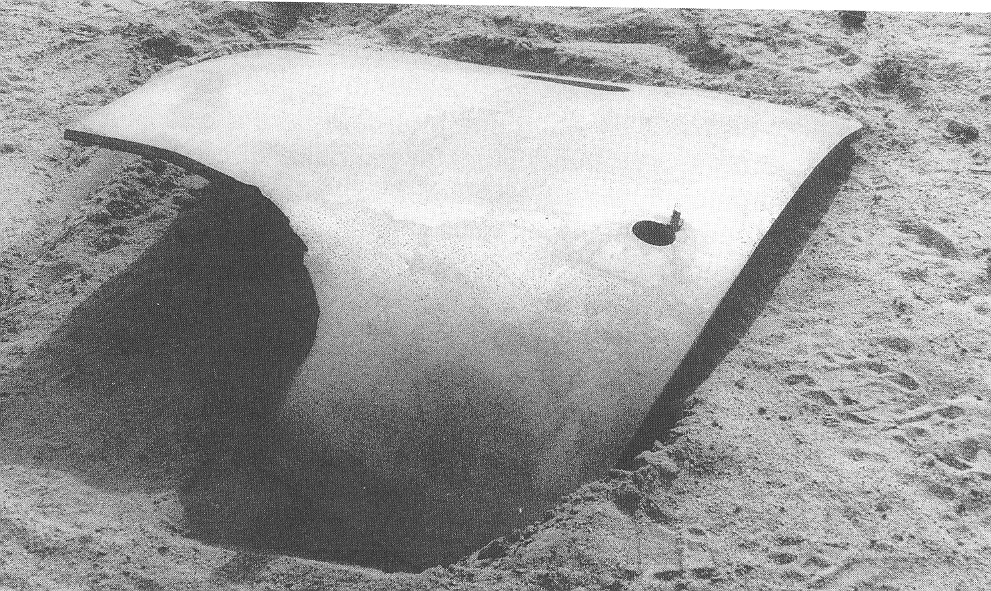
A tracked AFV (tank) by design is 28% more weight/space efficient than an oversized thin metal box on top of wheels (truck). We can ill afford to throw away 28% percent armor potential just because we are lazy and want to make a fashion statement and look different from the "mech pussies". The horrors of this vanity are revealed in the photos above of USMC LAV-1 incinerated in Iraq WAr 1. Placing American flags on burned-out hulks of rubber-tired trucks and shedding tears doesn't get troops properly equipped in multi-armor layed tracks so they can win wars and come home as living heroes not flag-draped coffins. AThere is a limit to what can be done in desperation to make wheeled vehicles SOMEWHAT combat ready, but the fact remains THEY ARE NOT COMBAT VEHICLES, they are resupply and people movers behind front lines if you have a linear battlefield, which we don't today! Wheeled vehicles like the Stryker and heavily burdened, up-armored HMMWV trucks CANNOT GO OFF-ROAD, cross-country at will. We are getting creamed along predictable roads driving into enemy roadside and underneath bombs and going 15 mph faster than vehicles with steel tracks is not helping one iota, all its doing is making the resultant crashes more fiery and severe.
A Civil Affairs Soldier writes from Iraq:
"Mike,
Have forwarded to interested parties (should be everyone over here). Have already participated in 8 convoys and 2 patrols in various HMMWV configurations. You are absolutely right. There is virtually no way to definatively differentiate that what you see on road, at the speeds we are traveling, is an IED or just some sort of debris. We are counting on the fact that if we drive fast enough on the open road (those driving through town/built up areas don't have the same luxury) they won't be able to time the electronic command detonation in sync with our being in the blast radius (a very bad presumption). Continuing the approval process for our own M113."
NEWS FLASH!!!!!!
CNN and General David Grange blow-the-whistle on the HMMWV and Stryker truck fiasco in Iraq that is killing/maiming our troops
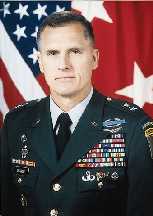
EXCLUSIVE! CNN Video Report: Army admits armored Humvee trucks fail--time to send in M113 Gavins!
www.combatreform.org/CNNarmoredhumveesfailweneedM113Gavins.wmv
DOBBS: The U.S. Army is sending hundreds of armored Humvees to Iraq to protect troops from attacks by insurgents. But tonight, there are new fears that the armor on those reinforced Humvees is still inadequate to provide protection for our Soldiers.
Senior Pentagon correspondent Jamie McIntyre has the report.
(BEGIN VIDEOTAPE)
JAMIE MCINTYRE, CNN MILITARY AFFAIRS CORRESPONDENT (voice-over): With U.S. troops still dying in deadly roadside attacks, the Pentagon is spending $400 million racing to replace the Army's basic thin- skinned Humvees with reinforced up-armored versions. But the better armor is still not providing adequate protection, writes a four-star general in a memo obtained by CNN.
"Commanders in the field are reporting to me that the up-armored Humvee is not providing the solution the Army hoped to achieve," writes General Larry Ellis, commanding general of the U.S. Army Forces Command, in a March 30 memo to the Army chief of staff.
Critics say, even with better armor, the Humvee's shoulder-level doors make it too easy to lob a grenade inside. Its four rubber tires burn too readily. At two tons, it is light enough to be overturned by a mob.
General Ellis wants to shift Army funds to build twice as many of the Army's newest combat vehicle, the Stryker, which has eight wheels, weighs 19 tons and when equipped with a special cage can withstand an RPG attack. "It is imperative that the Army accelerate the production of Stryker vehicles to support current operations," Ellis says.
But critics say the Army is overlooking an even cheaper, faster solution than the $3.3 million Stryker, the thousands of Vietnam-era M-113 Gavin personnel carriers the Army has in storage which can be upgraded with new armor for less than $100,000 apiece. Neither the Stryker nor the Gavin offer 100 percent protection. Some U.S. troops have been killed in the top-of-the-line M1-A1 Abrams tank. But the more armor, the better chance of survival.
(END VIDEOTAPE)
MCINTYRE: In his memo, General Ellis pleads for quick action, lamenting that, while the U.S. is at war, some in the Army seem to be in a peacetime posture. He writes: "If our actions impede the ability to train, equip or organize our Soldiers for combat, then we fail the soldier and the nation" -- Lou.
DOBBS: And General Ellis' remarks and note come a year after that war began in Iraq. What is -- what is taking so long for the command structure of the U.S. Army, the U.S. military, to provide the equipment that our men and women need in Iraq?
MCINTYRE: Well, I think the short answer is that they misestimated the threat that they would be facing at this point. They have been trying to adapt as time went on. They have been rushing the armored Humvees into theater, but now they are realizing they don't provide enough protection either. What General Ellis wants to do is quick action to get the authority to shift some funds around and ramp up production of the Strykers, so you can get more of those into the combat theater.
But, as I said, some of the critics say they should look to some of the vehicles they already have in storage. They think they can get them there even faster. I think General Ellis is reflecting some of the frustration that the Army feels it can't act fast enough to get enough protection to its troops.
DOBBS: General Ellis, a four-star general. Who put him in charge of looking into this? What is, if you will, his portfolio?
MCINTYRE: Well, he is commanding general of the U.S. Army Forces Command. So his main job is training and equipping. And, of course, he's writing this memo to the Army chief of staff, who is the main person in charge of training and equipping the Army, General Schoomaker. So the right people are focused on the problem. The question is how soon will they have the solution?
DOBBS: Well, for the sake of our men and women in uniform in Iraq, let's hope very quickly.
Jamie, thank you very much -- Jamie McIntyre, our senior Pentagon correspondent.
The military believes about 2,000 insurgents and foreign fighters are now holed up in Fallujah. The marines are hoping those insurgents will surrender their heavy weapons. But the troops are preparing to assault the city if the insurgents do not disarm.
I'm joined now by our CNN military analyst, General David Grange.
General, good to have you with us.
RETIRED BRIG. GEN. DAVID GRANGE, CNN MILITARY ANALYST: Thank you, Lou.
DOBBS: I have to ask you, first, what is your reaction to Jamie McIntyre's report and the statement by General Ellis that, point blank, our command structure seems in some respects to be in a peacetime posture, while our men and women in uniform are in war in Iraq?
GRANGE: Well, Lou, I know the leadership of the Army and I don't think they are in a peacetime mind-set.
However, I do agree totally that armored vehicles need to be sent to Iraq immediately to solve some of these problems with the Humvees. First of all, the -- any armored vehicle can take a certain kind of hit and be destroyed or incapacitated. However, Humvees are not the answer. It's too light-skinned, even the up-armored, for some of these actions, whether it be resupply or combat missions that the troops have.
The interim solution is to take the inventory that was just shown on the broadcast of the old 113s, armor those, and use those immediately in Iraq to protect the troops.
DOBBS: General Grange, you are talking about what was popularly known as the APC, the armored personnel carrier, thousands of them, Jamie McIntyre reported, in storage and ready to be rearmored if necessary. Under current armor, could the APC still be serviceable, that is protect our troops in Iraq?
GRANGE: There's no 100 percent protection, but it would provide much more protection than a Humvee and they are readily available and can be up-armored quickly. The Stryker is going to take too long to produce that many. So I'd get something out there now during this very intense period in Iraq.
DOBBS: General, the question has to be asked, this is the 21st century. The U.S. military is supposed to be the most advanced and focused and technologically advantaged force in the world. Yet what appears to be at least at first blush when we have men and women without sufficient armored vests, when they don't have armored vehicles, even the old APC, it does raise a question, what in the world has gone on with our command structure? Because we've got men and women dying there.
GRANGE: Well, that's true. And it's -- when you are a commander on the ground, it's very frustrating when you don't get the things that you think, at least you think that you need. We relearn lessons from every war.
(CROSSTALK)
DOBBS: General, excuse me. Let me be clear in my question, if I was not. I'm not worried about the commander at the company level or the battalion level. I'm talking about the command structure of the United States military, the Pentagon.
GRANGE: Yes, the upgraded vehicles need to be sent to Iraq immediately. They should have already been there. The Humvee is not the answer. I think there was the -- the assessment that the transition after the maneuver warfare to the stability and support operations were not be as violent as it's become was off-base a little bit. But it can be fixed now. Let's do something now and at least provide the needed protection and maneuverability that can be afforded now with the assets that we have. It's still not too late to do something.
DOBBS: Twenty-two -- 2,500 Soldiers, rather, now around Najaf, the U.S. marines surrounding Fallujah. Negotiations continue, which are being honored in the breech here. What is your -- your assessment as to the risk and the necessity of entering in particular Fallujah?
GRANGE: Fallujah, I have a problem with the cease-fire. There are some people that generally want it in Fallujah, some of the civilian leaders. But the hard-core insurgents are going to continue when they want to attack coalition forces, unless they are disarmed.
The city has to be continue to be isolated. You have to separate as many of the civilians from the insurgents as possible. You have to control key terrain and the services provided to the city itself. And you have to take down enemy strongholds as you find them. It's the only way to ensure lasting peace in this particular city. I believe there's a lot of them, insurgents, in there and that's one reason they want to negotiate.
DOBBS: Do you think we should not be negotiating? Mark Kimmitt, General Mark Kimmitt, said capture or kill Muqtada al-Sadr. And the response so far has been, negotiate.
GRANGE: Well, in Fallujah, that out to be taken care of right now. I think there's some time for Sadr. Even though he's maintaining weapons, he's building up his supplies for a fight, I think that that can be worked out, I really do, with some senior Shiite clerics. But, in Fallujah, that's the immediate problem. That has to be taken care of. I think it's OK to have a cease-fire to give it a chance.
The coalition should give it a chance. But I would not test it too much with those marines. In other words, if it looks like it's not working, then be on with it and get on with it and take care of the insurgents in that town once and for all.
DOBBS: General David Grange on point, thank you.
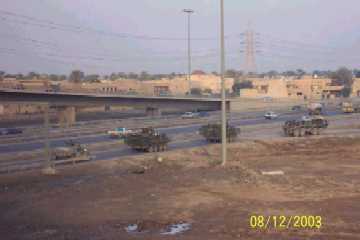
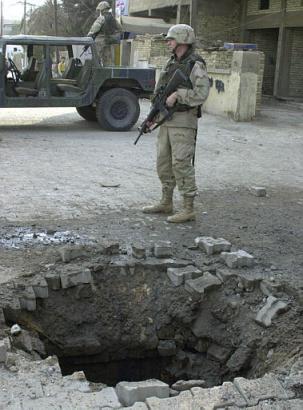
NEW! M113A3 Gavin versus LAV-3/Stryker armored car SIZE COMPARISON power point show
Strykers need transporters to get to the battlefield and once there, cannot survive non-linear attacks, so what's the point?
Well-armed and protected, M113 Gavin Light Tracked Armored Fighting Vehicles (TAFVs) with steel tracks have rubber pads to be gentle on paved highways to transport themselves around the battlefield operationally without need of truck transporters, who needs vulnerable Stryker/HMMWV armored cars?
www.fas.org/man/dod-101/sys/land/docs/2wheels98.pdf
In war, where its a struggle of move and counter-move by us against the enemy---you cannot afford to start off at a 28% disadvantage because you use wheels instead of tracks. A retired Colonel writes:
"Mike,THE TOFFLERIAN/RMA "TAP-DANCE": MENTAL GYMNASTICS THE ARMY DOES TO EXCUSE AWAY STRYKER PHYSICAL WEAKNESSI hope this note finds you doing well. You've been a champion of the M113/M8 and I greatly appreciate your efforts and value what you written in speaking the truth about the Stryker. The Stryker is a deathtrap and absolutely the wrong vehicle for our Army.
I thought I'd pass on a few items to you about the MGS. In the civilian world I am a Manufacturing Advisor for XXXX. I served 25 yrs in the regular and reserve component of the Army. Airborne qualified and served in 3 different M113 mech Infantry Bns as an enlisted man and as an officer. I know an ARNG officer who was an Engineer for XXXX and now working for GD on the Stryker program. He confided in me that they cannot make the MGS work and are trying to figure out how to get out from under it and CYA. Additionally, I've had a conversation w/ a Colonel from Ft Knox that told me more than he should have concerning Stryker- The gist of which was from the 0-6 level down they reccommended tracks over Stryker but the Generals seemed dead set for Stryker. This 0-6 was hoping Congress would force hearings on the matter and get to the truth. Another item, I spoke to someone at TACOM and he and others feelings mirrored mine- I would not want my son going into combat in a Stryker.
I was wondering what you've heard about the M8 Thunderbolt- from what I'm able to gather is that the 120mm live fire ( stationary and on the move ) has gone well. Last month they were to fire DU rounds. I've also read that the CG 82d Airborne has requested 4 M8 AGS for all future operations. Personally, I'd like to see the IBCTs have at the company level 1 Plt of M8s, 2-3 Plts of M113/MTLV Infantry and a section of M113s w/ Turret mounted 120mm Mortars capable of direct and indirect fire. ( I'd love to be a TC or gunner in an M8 if I were enlisted again or to be a Company Cdr of such a Company ).
Is there anyone in Congress I can write to and advocate/push on the M8? I live in Michigan now and I do not think much of Sens Levin and Stambinaugh. It's just a gut feeling mind you, but I feel there is a real chance we'll end up getting Thunderbolt. Have you heard anything? Is my thinking wishful or do you sense the same thing? I'd really appreciate anything you can pass along.
Final note/ question ( for now)- Have you heard anything about the Army dumping the POS M9 Beretta? I understand the SOF folks are getting new build M1911s. I personally have had a M1911a1 Colt Compact .45 that i had packed in my gear as my personal " go to war " gun. When I was recalled to AD for 6 mo. after 9/11 I was issued a M9 ( really wanted an M4 issued ) before long, I started carrying my Colt Commander .45 in my holster and either no one noticed or care not to notice. the Colt Commander was to be the orginal replacement for the 1911 @ 1950 but then Korea broke out and the Army shelved it.
Mike, I'll close for now- I look forward to hearing from you. In the meantime, Keep up the good fight and take care.
XXXXXXXXXXXX
BREAKING NEWS! EXCLUSIVE!
CNN VIDEO REPORT EXPOSES STRYKER TRUCKS AS FAILURES IN COMBAT!
www.douglasmacgregor.com/cnnstrykertruckflawed032902005.wmv
Even though the Army tries to hid Stryker trucks from combat, an internal
Army report details their many flaws which have resulted in calls for millions of dollars of repairs/alterations/fixes...retired Army Colonel Douglas Macgregor is interviewed...
Study Faults Army Vehicle
Use of Transport in Iraq Puts Troops at Risk, Internal Report Says
By R. Jeffrey Smith
Washington Post Staff Writer
Thursday, March 31, 2005; Page A01
The Army has deployed a new troop transport vehicle in Iraq with many defects, putting troops there at unexpected risk from rocket-propelled grenades and raising questions about the vehicle's development and $11 billion cost, according to a detailed critique in a classified Army study obtained by The Washington Post.
The vehicle is known as the Stryker, and 311 of the lightly armored, wheeled vehicles have been ferrying U.S. Soldiers around northern Iraq since October 2003. The Army has been ebullient about the vehicle's success there, with Gen. Peter J. Schoomaker, the Army chief of staff, telling the House Armed Services Committee last month that "we're absolutely enthusiastic about what the Stryker has done."
But the Army's Dec. 21 report, drawn from confidential interviews with operators of the vehicle in Iraq in the last quarter of 2004, lists a catalogue of complaints about the vehicle, including design flaws, inoperable gear and maintenance problems that are "getting worse not better." Although many soldiers in the field say they like the vehicle, the Army document, titled "Initial Impressions Report -- Operations in Mosul, Iraq," makes clear that the vehicle's military performance has fallen short.
The internal criticism of the vehicle appears likely to fuel new controversy over the Pentagon's decision in 2003 to deploy the Stryker brigade in Iraq just a few months after the end of major combat operations, before the vehicle had been rigorously tested for use across a full spectrum of combat. The report states, for example, that an armoring shield installed on Stryker vehicles to protect against unanticipated attacks by Iraqi insurgents using low-tech weapons works against half the grenades used to assault it. The shield, installed at a base in Kuwait, is so heavy that tire pressure must be checked three times daily. Nine tires a day are changed after failing, the report says; the Army told The Post the current figure is "11 tire and wheel assemblies daily."
"The additional weight significantly impacts the handling and performance during the rainy season," says the report, which was prepared for the Center for Army Lessons Learned in Fort Leavenworth, Kan. "Mud appeared to cause strain on the engine, the drive shaft and the differentials," none of which was designed to carry the added armor.
Commanders' displays aboard the vehicles are poorly designed and do not work; none of the 100 display units in Iraq are being used because of "design and functionality shortfalls," the report states. The vehicle's computers are too slow and overheat in desert temperatures or freeze up at critical moments, such as "when large units are moving at high speeds simultaneously" and overwhelm its sensors.
The main weapon system, a $157,000 grenade launcher, fails to hit targets when the vehicle is moving, contrary to its design, the report states. Its laser designator, zoom, sensors, stabilizer and rotating speed all need redesign; it does not work at night; and its console display is in black and white although "a typical warning is to watch for a certain color automobile," the report says. Some crews removed part of the launchers because they can swivel dangerously toward the squad leader's position.
The vehicle's seat belts cannot be readily latched when troops are in their armored gear, a circumstance that contributed to the deaths of three soldiers in rollover accidents, according to the report. On the vehicle's outside, some crews have put sand-filled tin cans around a gunner's hatch that the report says is ill-protected.
Eric Miller, senior defense investigator at the independent Project on Government Oversight, which obtained a copy of the internal Army report several weeks ago, said the critique shows that "the Pentagon hasn't yet learned that using the battlefield as a testing ground costs lives, not just spiraling dollars."
Asked about the report, Army officials who direct the Stryker program said they are working to fix some flaws; they also said they were unaware of some of the defects identified in the critique. "We're very proud of the Stryker team," said Lt. Col. Frederick J. Gellert, chief of the Army's Stryker Brigade Combat Team Integration Branch in Washington, but "it hasn't been something that's problem-divorced."
According to the latest Army figures, 17 Soldiers in the Stryker combat brigade have died in Iraq in 157 bomb explosions, but no delineation is made for those who perished inside the vehicle and those who were standing outside it; an additional five soldiers have died in two rollovers. No current figure was provided for those who perished in grenade attacks, although one officer said he thought it was fewer than a handful.
Neither the lessons-learned report nor more recent Army data state how many Soldiers have been wounded while inside the vehicle. The report states that in one case, a Soldier was struck by shrapnel that penetrated both the vehicle's armor and his own body armor; in another case, an entire crew escaped with minor injuries after a vehicle sustained nine grenade hits.
The criticisms of the Stryker's first performance in combat seem likely to give new arguments to critics of the Army's decision in 1999 to move away from more heavily armored vehicles that move on metal tracks and embrace a generation of lighter, more comfortable vehicles operated at higher speed on rubber tires.
Senior Army officers in Iraq, like those at the Pentagon, have been surprised by the intensity of hostilities there since mid-2003, and lately some officers have said they depend on heavy armor to protect their Soldiers in urban warfare, even though tanks in Iraq have also suffered unexpected damage. But Maj. Gen. Stephen M. Speakes, the Army's director of force development, said that when he rode in the Stryker for the first time, he "marveled at how much nicer it was" than riding in a Bradley vehicle or an older troop transport, the M113 [Gavin], which he likened to being inside an aluminum trash can being beaten by a hammer. He said the Stryker was "amazingly smooth" and quiet by comparison.
In a report completed at the time of deployment, the Pentagon's operational test and evaluation office rated the Stryker vehicles sent to Iraq "effective and survivable only with limitations for use in small-scale contingencies." Congressional auditors at the General Accounting Office in December 2003 said the first brigade "did not consistently demonstrate its capabilities, indicating both strengths and weaknesses."
Independent groups and a loose-knit group of retired Army officers who dislike the Stryker vehicle have alleged that the Stryker's 2003 deployment was motivated partly by the desire of the Army and the manufacturer, General Dynamics, to build congressional support for buying additional brigades. But Speakes said that was nonsense and that the brigade was deployed in Iraq simply because the Army needed it.
Researchers Bob Lyford and Madonna Lebling contributed to this report.
"Bird cage" didn't work, did it?
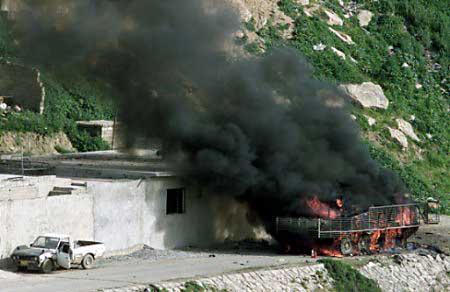
www.reuters.com/newsArticle.jhtml?type=topNews&storyID=4678909
In another attack, insurgents fired two rocket-propelled grenades at a U.S. Stryker military vehicle on patrol in a western district, setting it on fire, witnesses said. More blasts shook the Stryker, as its fuel tanks and ammunition exploded, but a U.S. military spokesman said there were no casualties. Lieutenant-Colonel Joseph Piek of Task Force Olympia said the commander and driver of the vehicle had jumped out. Other Soldiers in the unit were patrolling on foot.
http://news.ft.com/servlet/ContentServer?pagename=FT.com/WireFeed/WireFeed& c=WireFeed&cid=1079420081603
Iraqi guerrillas fire at U.S. military vehicle
(Reuters) - March 28 2004 14:11
MOSUL, Iraq (Reuters) - Insurgents have fired two rocket-propelled grenades at a U.S. military vehicle in the northern Iraqi city of Mosul, setting it on fire, witnesses have said.
More blasts shook the wheeled Stryker armoured vehicle, apparently as its ammunition exploded. There was no immediate word on casualties in the attack in the west of the city.
A passer-by, Mahmoud Ibrahim, 40, said he had seen three attackers in a car fire an RPG at the Stryker as it went down a side street in a western district of Mosul on Sunday. Another RPG was fired at the U.S. vehicle moments later.
"I saw the Stryker burning," he said. "I saw nobody getting out of the vehicle."
U.S. troops in other Strykers sealed off the area.
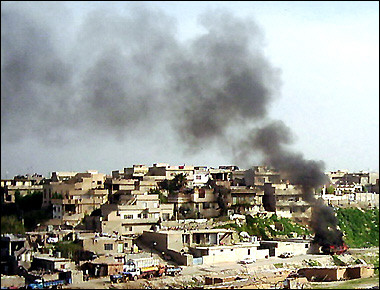
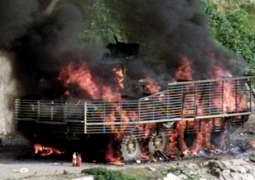
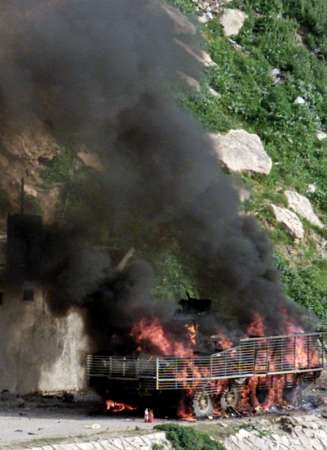
"Bird cage" didn't work, did it?

www.reuters.com/newsArticle.jhtml?type=topNews&storyID=4678909
In another attack, insurgents fired two rocket-propelled grenades at a U.S. Stryker military vehicle on patrol in a western district, setting it on fire, witnesses said. More blasts shook the Stryker, as its fuel tanks and ammunition exploded, but a U.S. military spokesman said there were no casualties. Lieutenant-Colonel Joseph Piek of Task Force Olympia said the commander and driver of the vehicle had jumped out. Other Soldiers in the unit were patrolling on foot. http://news.ft.com/servlet/ContentServer?pagename=FT.com/WireFeed/WireFeed&c=WireFeed&cid=1079420081603
Iraqi guerrillas fire at U.S. military vehicle
(Reuters) -
March 28 2004 14:11 MOSUL, Iraq (Reuters) -
Insurgents have fired two rocket-propelled grenades at a U.S. military vehicle in the northern Iraqi city of Mosul, setting it on fire, witnesses have said. More blasts shook the wheeled Stryker armoured vehicle, apparently as its ammunition exploded. There was no immediate word on casualties in the attack in the west of the city.A passer-by, Mahmoud Ibrahim, 40, said he had seen three attackers in a car fire an RPG at the Stryker as it went down a side street in a western district of Mosul on Sunday. Another RPG was fired at the U.S. vehicle moments later."I saw the Stryker burning," he said. "I saw nobody getting out of the vehicle." U.S. troops in other Strykers sealed off the area.
ANALYSIS:
Where was the escort infantry?
Why didn't the infantry squad -- which was "patrolling on foot" --
neutralize the RPG gunners? Didn't the Army tout having the infantry
squad dismounted as the means of preventing the enemy from shooting RPGs
at the Stryker, therefore it didn't really need effective armor to
counter shaped charges?
This was a preplanned choke point ambush. The armor moves ahead of the
infantry who are supposed to provide flank security which of course they
couldn't here. The RPG gunners simply popped up and in a couple of
seconds fired and disappeared. One round would have been sufficient
but they wanted to make sure of a kill.
Where was the Vehicle Commander's (VC) weaponry?
The Stryker's slow-rotating Remote Weapon System (RWS) machine gun mount with narrow field-of-view optics can't react fast enough (especially with multiple targets) to react to threats like the simpler manually rotated M113 Gavin Track Commander's cupola machine gun mount.
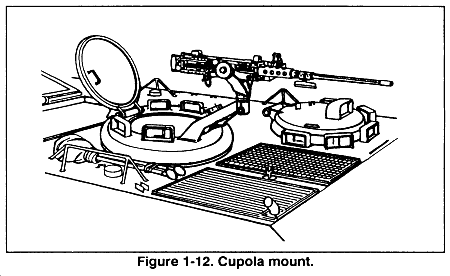
I would love to know what the Stryker VC could see. There's virtually no place where you can see in all directions and the RWS probably suffers from many of the same flaws as a Predator drone. It sees what it's looking directly at but has no wide view. I can't imagine how this would work out against the NVA. So far they haven't come up with anything that can match a Soldier's eyes and reaction to fast evolving unknown situations.
No reports about the RWS......was ANYBODY manning it? It certainly doesn't match a human gunner head-out with a GUNSHIELD with situational awareness and experience. The RWS is a pile of junk, more appropriate on Playstation 2 than on a personnel carrier.
A Bradley or M113 Gavin could take a RPG hit better, and have human gunners working powerful 25mm and .50 caliber heavy machine guns; not a slow rotating, cheesy robot machine gun with the VC/gunner looking through narrow optics to PREVENT from getting hit in the first place! For all the money squandered on Stryker truck, the army could have had body armor, and GUNSHIELDS and extra RPG shielding on M113 Gavins, M2 Bradleys. And that no doubt is the reason that the Stryker was so easily ambushed and destroyed. Since the driver was focussed on driving the vehicle, only the VC was available to scan for the enemy. One set of eyes can't possibly keep a continuous 360-degree watch, and even if he saw both RPG gunners, one gun can't simultaneously engage multiple targets.
It seems common tactical sense that the situation begs -- no, screams -- for a rebirth of the ACAV. We don't know if it is feasible to install additional MGs on Stryker's thin steel hull. Even if it can be done, the hatch layout isn't nearly as well suited to turning the SUV into an ACAV, as is that of the M113 Gavin.
This is what is left of the Stryker that tried to run by a roadside bomb with its "blazing" 60 mph speed (non-sense):
The point of WAR is to get results on the ground, to have your will dominate. When the Iraqi guerrillas can incinerate a $3.3 million Stryker and embarrass us with just $30 of RPGs they are winning. If you don't understand this, you need to research what 4th Generation Warfare is all about.
For $400,000 we could upgrade M113 Gavin light tracks that wouldn't have got trapped into the bad, restrictive terrain in the first place and could have survived RPG hits without any damage. In other words, guerrillas lose, we win because we are not a flaming BBQ on the 6 o'clock news.
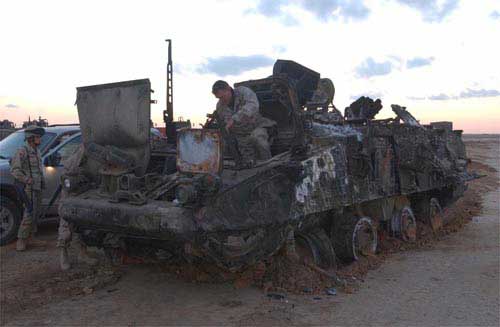
The Stryker is supposed to be the wheeled vehicular base for a quasi-cavalry team with specialty versions providing a combined-arms synergism expedited by "network-centric", "information-driven" digital comms. Read one of the Army's brazen lies and full-of-BS manuals for the Stryker wheeled BCTs:
FIELD MANUAL NO. 3-21.11 HEADQUARTERS
DEPARTMENT OF THE ARMY
WASHINGTON, DC, 23 January 2003
CHAPTER 1: OVERVIEW OF THE SBCT INFANTRY RIFLE COMPANY
Excerpts:
"The organic vehicles in the platoons are for moving infantry to the fight swiftly and providing tactical flexibility while tailoring the Soldiers' loads through a "mobile arms room" concept. There is also a mobile gun system (MGS) platoon that supports the infantry fight with long-range precision fires. The MGS is a fighting vehicle but is not a Bradley or a tank and should not be employed in the traditional sense of a fighting vehicle.""The SBCT is an infantry-centric, full spectrum, early entry combat force pre-configured in ready-to-fight combined-arms packages (Figure 1-1). The design includes embedded unit-based capabilities such as military intelligence (MI), signal, engineer, antitank, artillery, and combat service support (CSS) elements. This organization allows the SBCT to fight using combined arms down to company level. The following are key organic assets that allow the brigade commander to conduct shaping and decisive operations more effectively:
Brigade headquarters and headquarters company (HHC).
Infantry battalion (x3).
Reconnaissance, surveillance, and target acquisition (RSTA) squadron.
Antitank company.
Artillery battalion.
Medium engineer company.
Military intelligence company.
Signal company.
Brigade support battalion.
HERE'S A WWII/COLD WAR MENTALITY LIE FROM A GENERAL OFFICER: "TRANSFORMATION" IS ALL ABOUT RISK-AVERSE, LINEAR WARFARE FROM THE TOP-DOWN (MANIFESTATION OF THE COLD WAR MENTALITY OF ARMY GENERALS)
http://www.google.com/search?q=cache:ExKsbIZ3T50J:starbulletin.com/2003/11/02/news/story8.html+c-17+bradley+fighting+vehicles+three&hl=en&ie=UTF-8
Soriano, the Army's highest ranking officer of Filipino-American ancestry, said the Stryker was never intended to be a fighting vehicle, like the heavier M-1A1 Abrams tank or Bradley fighting vehicle. "It was never meant to be a vehicle designed for a fight-on-fight, but merely to take Soldiers to the battlefield. "Unlike past military doctrine, which was designed around using heavy armored tanks and infantry brigades to make contact with the enemy, Soriano said the idea now is "to find where the enemy is before we take them on ... to see the enemy at a distance before we engage."
What General Soriano is really saying is that he wants weak vehicles that physically cannot fight, populated by weak people who since they are not empowered to take the initiative, must ask higher headquarters, "Mother, May I?" before they do anything---so no one has their careers ruined by anything that is risky and doesn't work out. If we are just going to take Soldiers TO THE battlefield, and not fight with vehicles, why do we need $3 million Strykers that brag that they are armor protected? Why do we need Stryker variants with missiles and mobile guns? If we can make linear battlefields with "rear" areas to shuttle troops in we can use unarmored trucks. We all know this is not true. The Army needs to stop LYING and speaking out of both sides of its mouth when it serves their interest to invoke a linear battlefield that doesn't exist to conveniently excuse away the Stryker armored car/truck. We are NOT fighting on linear battlefields; the Stryker is NOT A COMBAT VEHICLE and it does not belong in the U.S. Army.
4 years ago, before we had 1,000 dead and 10,000 wounded Soldiers in Iraq the Army dragged its feet about armoring their trucks using the same linear WWII/Cold War non-sense now used to excuse away the Stryker truck:
http://216.239.41.104/search?q=cache:yfZANtxC0_0J:www.nationaldefensemagazine.org/article.cfm%3FId%3D61+up-armored+fmtv+trucks&hl=en&ie=UTF-8
National Defense magazine, April 2000 "Vulnerable Truck Fleet Worries Army Investments needed in armor kits for medium trucks, officials assert" by Sandra I. Erwin reports:
Army officials are mulling over options to develop and deploy armor kits that would protect truck crews in combat. "Our truck fleets are the most vulnerable pieces of our logistics system," said Brig. Gen. William E. Mortensen, commander of the Army Transportation Center, Ft. Eustis, Va. "We need R&D [research and development] efforts" to bolster ballistic protection for wheeled vehicle crews, he told a conference on tactical wheeled vehicles in Monterey, Calif. Because the Army has dozens of truck models comprising a fleet of about 220,000 vehicles, armor packages should be "scalable," said Mortenson. That means armor plates could be put on and taken off as needed and should be adaptable to various truck sizes and configurations.In the mid-1990s, the Army began purchasing armor plates for its light trucks, notably the High Mobility Multipurpose Wheeled Vehicle, known as the Humvee. This was necessary, officials said, because these vehicles were being driven in landmine-ridden countries such as Bosnia and Kosovo. The addition of armor protection to the Humvees meant lives would be saved if a truck hit a landmine. Now, the Army is considering whether it should extend the same protection to a portion of its medium-size fleet of 2.5-ton and 5-ton trucks. Under the Cold War view of the world, those trucks were intended to remain in the rear of the battlefield and, therefore, were not expected to be fired on. The sort of military contingencies that the Army has been involved in recent years, however, make it more difficult to separate the front lines from the logistics support units. Recent deployments in the Balkans are a case in point." The Cold War mentality was to have trucks behind the front line. So nobody wanted to spend the dollars on protection," said John D. Weaver, a consultant for the Army's Tank-Automotive and Armaments Command (TACOM), in Warren, Mich., and a former program manager for light tactical vehicles. For medium vehicles, the "survivability requirement is more complex if the vehicle is not originally designed to put armor on it," said Weaver in an interview. "After it's been designed, it costs more" to add the armor. Today's combat environment, he noted, exposes Soldiers to the so-called asymmetric threats, such as anti-personnel and anti-vehicle landmines, so "there is a need for protection." The Army's medium vehicles, particularly, are difficult to protect because, for the most part, they feature a "cab-over" design, where the driver sits above the axle, said Weaver. "That is the toughest position to defend against landmines, because the blast comes straight up." ...Weaver explained: "One way to protect people is not to try to block the blast but to deflect the blast, vent it away from the vehicle. The angles of the wheel well area and of the floor of the vehicle are key to that aspect. "If the design takes into account if the wheel hits a landmine, you want to vent the blast away from the vehicle. It's clearly easier to do that when you are designing the vehicle than afterwards," he said. The weight and space can be significant drawbacks. "If you want to add an after-market armor package to install only in an area of threat, it makes a lot of sense to design into the vehicle the mounting points: the bolt holds, the studs, things like that," Weaver said, "so that when you get the kit, you have the mounting points to mount it to the vehicle." When the driver sits above the axle, "it's not impossible to protect the driver, but it's more difficult," he said. "In the cab-over design, such as the FMTV and most of the European trucks, you don't have the angles to deflect the blast as readily. You are going to put more force into the driver and passenger because they are sitting right over the mine, and there is going to be more of the blast going into the structure of the vehicle."
TRUTH:
ANYWHERE YOU ARE ON TODAY'S NON-LINEAR BATTLEFIELD IS "BATTLEFIELD".
THE ARMY IS LYING BY MAKING US BELIEVE THERE IS AN "EDGE" OF THE BATTLEFIELD WE CAN CREEP UP TO AND THEN DISGORGE INFANTRY FROM STRYKERS WHO ARE SOMEHOW "SAFE" BEHIND THE FRONT IN "REAR" AREAS.
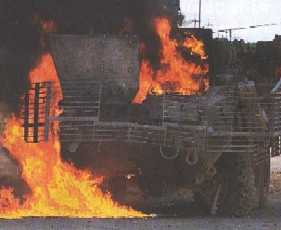
Wheels vs. Tracks Study: www.geocities.com/wheelsvstracks
A Vietnam Combat Veteran and senior Army officer writes:
"Mike,
I want to point out the broken tie rod dangling from the left steering wheel. Even though the tire is still inflated, if the tie rod is broken, and you can bet it is, since dangling is not normal configuration, the vehicle cannot be steered. The wheels will either go pigeon-toed, or wall-toed, which will result in the vehicle becoming immobile. It will turn into a plow, and the power isn't there to force it ahead, even if the second set of steering wheels still work. I never figured that all of the steering apparatus was outside the ballistic hull, but it stands to reason that it has to be, since that's where the wheels are. Point being: You don't even have to breach the hull to render the vehicle hors de combat, all you have to do is break a 1.5" tie rod, and it's the end of movement for the vehicle. You can break them on a rock, curb stone, or a concrete lined ditch.
Another thing: That appears to be the same Stryker we had in earlier pictures with all the wheels flattened, having been dragged. And again on a flat-bed truck with the RPG repellant off. Notice the hatch configuration, unless, like a roach, they all die alike blowing all their hatches, including the engine one.
This is not a fighting vehicle, it is a travesty."
Stay tuned!
This mental gymnastics continues when you narrow your analysis towards just the Stryker Infantry Carrier Vehicle (ICV) which is supposed to carry a 9-man infantry squad + 2-man vehicle crew. The Army sophists say the Stryker is "not a combat vehicle" because it will transport its dismount infantry squad TO THE EDGE OF THE BATTLEFIELD. Read the one of the recent BS Stryker Field Manuals, FM 3-21.1.11 Chapter 1:
"These mounted crews provide critical support to the platoon by operating and maintaining the ICVs and properly employing them on the battlefield to ensure protected delivery of the infantry squads to their dismount point. Once the infantry squads have dismounted the ICVs, the vehicle crew may employ local defensive armament to defeat 'thin-skinned' enemy vehicles (trucks or lightly armored vehicles) or dismounted infantry.(1) The VC is responsible for the overall employment of the ICV and operates the ICV's defensive armament. The vehicle driver operates the vehicle during all conditions--day or night. At the VC's direction, the driver negotiates the vehicle through all terrain and obstacles to deliver the infantry squad safely to the point of employment on the battlefield."
Debka file "The Stryker: U.S. Military`s Great White Hope against Iraqi RPGs" DEBKAfile Special Military Analysis, December 3, 2003, 2:24 PM (GMT+02:00) reports:
"But the vehicle is not designed for heavy combat, say its advocates. Its function is to race on its eight huge wheels to the edge of a battle zone, including urban areas, drop off infantry Soldiers and lay down covering fire."Again, we ask; WHAT "EDGE" of the battlefield?

2004

The 4th Generation Warfare battlefield of today is NON-LINEAR, the enemy can attack from any direction at any time. The enemy does not and will not "cooperate" by attacking where/when we want him to; the enemy already attacks Stryker ICVs as combat vehicles. Anything that carries combat troops is a COMBAT VEHICLE to the enemy and its his "vote" that counts not what Army Generals say/want. The implication that we put troops in completely unarmored trucks and they are "not combat vehicles" is even more damning; we shouldn't do it.
In typical Army double-talk in the Stryker FMs they brag about (and lie) how the Stryker vehicle will protect Soldiers from artillery, mortars and all the usual battlefield suspects. Nevermind that these are outright lies because these weapons will shred and set fire to the Stryker's tires, the hypocrisy is self-evident: IF THE STRYKER IS NOT A COMBAT VEHICLE AND ITS ONLY GOING TO THE "EDGE" OF THE BATTLEFIELD WHY IS IT GOING TO GET PELTED BY ENEMY FIRES? Clearly, the Army wants to "have its cake and eat it too". When its in their self-interest the Stryker is NOT a combat vehicle when its found to have indefensible vulnerabilities; when it seems to look good (they think as a bragging point) its got combat vehicle selling points. The enemy will not be stymied from these verbal, mental smoke screens and lawyer games as he physically finds and exploits the many Stryker weaknesses.

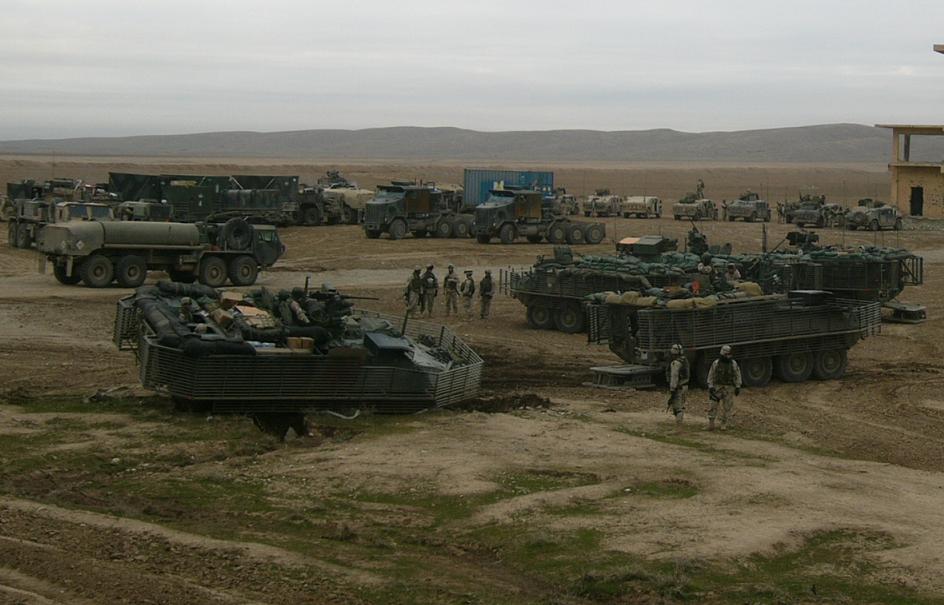
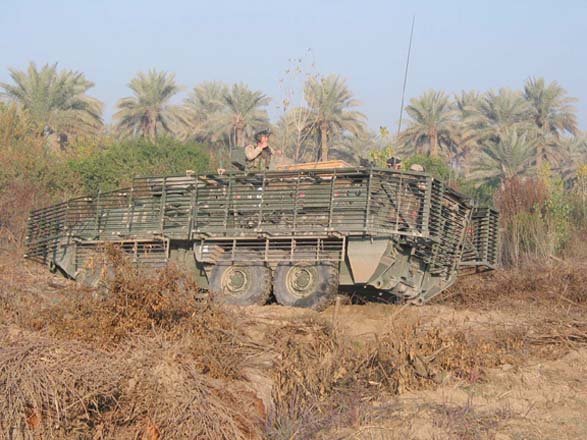

So despite Army lies, the Stryker IS being attacked as a combat vehicle, and the Army IS using it as a combat vehicle which it should not do, which is why Strykers are being hidden in the quietest part of Iraq to give them a phony "combat record". The Army's secret ulterior motive behind digitization is to mouse-click with computer graphics a LINEAR BATTLEFIELD THAT DOES NOT EXIST so they can work-around physical weakness like Stryker wheels and perpetuate units of weak, co-dependants who are unable to be self-sufficient and take initiative: they must ask "mother, may I?" from senior leaders and beg for help from other "specialty" sub-units within the cum-by-ya SBCT. What the Army's current narcissistic leaders want more than anything is to perpetuate their WWII/Cold War-style snobby Army; the Army where everyone is weak and co-dependant and reverent towards the linear, blind-obedience chain-of-command despite all of us living in a non-linear world. As narcissists, the Army's senior leaders want a "narcissistic supply" of fawning subordinates tied to computer screens to prop up their egos. The U.S. military is primarily populated by people with Narcisstic Personality Disorder (NPD), a mental illness. The other half of the military are weak co-dependant victims simply trying to raise families and pay for college; these folks are abused as objects of the NPD leaders. Today's Army digital hold-hands-together mentality is nothing more than a modern, gadgety manifestation of the Korean War road-bound timidity and use of radios as a crutch that General Ridgway blasted in the quote at the top of this web page. Boldness requires empowering people and working with them via mutual respect not narcisstic belittlement and class snobbery.
DoD computer infatuated people will buy electronic mental gadgets and ignore physical protection: tell it to these silly marines in Iraq now
Tragic marines in Iraq in unarmored HMMWV trucks without gunshields for gunners...but OMG!! they got a dome antenna for some electronic gadget!
In sharp contrast, current Army Generals are terrified of light Tracked Armored Fighting Vehicles (TAFVs) because light TAFVs can be filled with supplies, use up fuel/supplies at a miserly rate and can go anywhere at any time to actually outfight the enemy with little or no control or please for help from "higher headquarters". We used to call these CAVALRY units.
The non-linear battlefield be it against other nation-state armies or sub-national groups requires strong people in strong, tracked combat vehicles for combat and reconnaissance. Avant Garde media pundits full of mankind-worshiping hubris often forgot all about light tracked armored fighting vehicles; making it appear our only choices on the non-linear battlefield is between medium/heavy 25-70 ton tanks or medium-weight 19-21 ton Strykers. They try to paint the tracks as "old" and the wheels as "new" when the truth is the wheeled armored car was the first thing we tried to make into a "AFV" and after it failed in the muddy WWI trenches, we created TRACKED armored "tanks" afterwards. If "old" is sin, then wheels are the greater evil here. There is a joke: "What is the difference between Jurassic Park and the U.S. Army?" The answer is: "one is an amusement park populated by dinosaurs. The other is a movie".
Wheeled Dinosaur: the humongous Stryker armored truck (note size compared to nearby HMMWV trucks!)

A concerned citizen writes in:
"I've been trying to stay out of this discussion since this is all very old ground and it makes no difference since the decisions have already been made. First off no LAV, and that includes the marine version, has seen much combat. The only war they've ever fought in was IF (forget DS, they saw no action to speak of). They did not fair well according to early reports (two destroyed by RPGs). But at least the LAV-2 can defend itself and has a much smaller profile than the Whale-like and lightly armed LAV-3 that we are trying to pass of as a combat vehicle. You might be able to watch some combat on one of its monitors but don't try and fight it. This was clearly proven at both NTC and JRTC before it even left for Iraq.The key reality is that tracked vehicles are 28% more space/weight efficient than wheeled armored cars--the Stryker is made of thin 1/4 metal and rolls on air-filled rubber tires that easily are punctured/shredded, catch fire and burn yet is very heavy. Barricades and parked cars will block the Stryker for fatal ambushes.The Stryker BDE that was originally deployed to Iraq was in the so-called Sunni triangle. This would have been a good test but it performed so badly in this terrain that it was shifted to the more open (and much less dangerous) north. A fully loaded 5-ton is much more stable than this thing. Although there has been few comments about the Stryker since going to Iraq, two young men of my acquaintance (one 1st Lt and an E-6) are in the deployed unit. My correspondence with them has not been great but one who was originally a big supporter of the former chief and the SBCT, has emailed me that, 'How could the system allow such terrible doctrine and equipment to thrive?' He was pleased to be moved out of the Sunni Triangle since disaster was imminent.
The other one has never been all that hot on the SBCTs. He's been in the army for close to ten years, with his first couple in the Ranger Regt. and the rest in Mech units. He pointed out to me that of course the majority of the Soldiers would like it since most had never done anything else. It's easy to sell young troops on anything if they have no other experience for comparison. He also pointed out to me that these things were running around Iraq empty. Everyone knows the 'Emperor is Naked' and red assed and was very much afraid that a huge loss of life was just around the corner should a fully loaded one hit a booby trap (IED is statespeak and I'm not using it in any serious discussion of life threatening operations). Keeping it from being filmed was the highest priority of the unit leadership.
I've been asking this question for close to three years and still have not got an answer. 'Could these vehicles have functioned in Vietnam?' The answer is no, but I would love to debate that with someone."
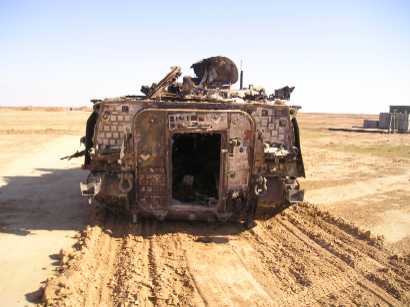
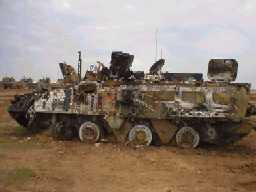
The reason the ceramic tiles on Stryker do not work well is that they are made of inexpensive aluminum oxide ceramics. GD put out a price bogey for the ceramics and a company from Germany, IBD, claimed that their armor could do more than it can. This is why the Stryker ceramic tiles failed to stop 14.5mm heavy machine gun bullets in testing last year and had to be reinforced with steel. This ceramic is much lower quality and capability than the silicon carbide ceramics being tested for FCS. The other problem as you can see from the above photo is that the Stryker ceramic tiles have big spaces between them.
In contrast, the M113 Gavin light tracked AFV is composed of 1.5" to 1.75" thick armor and is only 10.5 tons empty. This weight savings results in the ability to add up to 7,000 pounds of extra armor. M113 Gavins in IDF and other armies often have:
1.) external storage racks to hold troop gear that can pre-detonate RPGs,
2.) a layer of spaced or reactive armor
3.) peel 'n stick ceramic tiles and kevlar-type ballistic panels (that work) tightly placed together on the hull outsides
4.) the vehicle's 1.5" to 1.75" hull and
5.) internal kevlar spall liners and
6.) lots of sandbags.
7.) gunshields
That's 7 layers of protection rolling on steel tracks with rubber pads and solid metal road wheels, STILL LIGHTER than the 19-21 Stryker armored car which struggles to carry a mere 5,000 pound "bird cage". Since the Army bureaucracy does not supply this extra armor to make the mighty M113 Gavin more "vincible" units and Soldiers need to do-it-yourself: get your welders to create external storage racks and bolt them to the outside after buying and applying peel 'n stick armor panels:
Peel n stick armor panels defeat .50 cal @3000 FPS, AP proven in U.S. Army Aberdeen Proving Ground Tests
Armor Systems International
110 Columbia Street
Vancouver, WA 98660
phone: (360) 993-5181
toll free: (866) 993-5181
fax: (360) 737-0743
info@armorsystemsint.com
www.armorsystemsint.com
Light, Medium, Heavy tracked AFVs can push aside barricades and rumble over parked cars to get out of ambush kill zones, wheeled vehicles cannot. Tracked AFVs can pivot turn in place, wheeled vehicles need hundreds of feet to Y-turn (think Austin Powers getting a golf cart stuck in an alley in the first movie).

Stryker trapped in an alley: good thing the Iraqi enemy is not that competent
VICTOR
M113 Gavins are often used as battering rams around the world to push aside barricades and parked cars; can also rumble over and crush barricaded cars
Which would you rather be inside in combat? Oh, I forgot Army doctrine-technohubris; travel to the mythical "edge" of the battlefield in?
Some pundits then cite the alleged "speed" of wheeled vehicles as a virtue to couple with computer information sharing. Computers are not reserved for just wheeled vehicles as the 4th ID has them in their tracks--has this mental capability been decisive in Iraq? Don't we still have physical bombs going off every day killing and maiming American Soldiers? Maybe "network-centric warfare" is not a panacea? But to equate a slight 15 mph speed improvement via wheels that can be easily destroyed and cannot get you out of barricaded ambushes is dangerous assumptions. We in the free world, need to have effective militaries that kick the enemy's ass not the other way around. If you insist that we have 60 mph speed, remove the safety governors off tracked AFVs and they will go just as fast--and as dangerous--as wheeled vehicles. You can also use band-tracks and hybrid-electric drive and get 50 hp/ton power and INSTANT acceleration in M113 Gavins, too. What is good for the "goose" is good for the "gander", so these pundits should stop trying to reserve computer C4ISR as a benefit only possible when you buy impotent and dangerous wheeled vehicles. Tracked vehicles will not look like something new that senior Army officials selected so they can brag that they were doing something "revolutionary" to exalt their egos. Its all about their egos and image not getting the mission done and protecting the troops.
For recon its now possible to hybrid-electric drive and rubber "band tracked" a light TAFV so its far stealthier than rubber-tired armored cars in addition to tracked vehicle superior unpredictable cross-country mobility. There is no longer any reason to use wheeled armored cars even for recon. Band-tracked TAFVs are just as 60 mph fast on roads, too! The world army that realizes and exploits this first will be the dominant land power on earth.
The difference between "icing" and "cake"
AN OPEN LETTER TO LEADERS IN THE STRYKER BRIGADE IN IRAQ
Dear Stryker Leader,Many are confusing transformation "icing" with the "cake" its placed on.
ICING
*Lots of infantry Soldiers on the ground
*Training non-stop for complex terrain - especially in urban areas.
*aerial recon and fire support
*Every Soldier with a M16 assault rifle, M249 LMG (SAW), or M240 MMG with precision lethality via day/night optics.
*Soldiers confident that they will hit what they shoot at and shoot only at "bad guys".
* thermal sights on crew-served weapons.
*Vehicle FLIR in an overwatch to spot enemy at night
The things above are "icing" that could be applied to almost any "cake" ie; platform and does not have to be a thin-skinned Stryker armored car rolling on 8 air-filled rubber tires.
CAKE
* All vehicles need to be hardened
Including the Strykers which roll on 8 air-filled rubber tires which will burn if set off by an explosion or molotov cocktail. The problem with current Army transformation is it tries to excuse away physical weakness like wheeled armored cars which are 28% less space/weight efficient than tracks in addition to wheel vulnerability just because they have the "icing" of a computer inside for mental gymnastics. All of the "icing" above would be better applied to an upgraded M113A4 Gavin light tracked AFV that would not only be lighter than the overloaded 19-21 Stryker armored cars but would be better protected by virtue of its metal roadwheels, steel tracks with rubber pads and 28% more efficient composition so you would have several multiple layers of physical, armor protection not just 1/2 inch of steel, defective ceramic tiles and a bird cage all in "Fulda Gap" green camouflage in desert tan Iraq all trying to "tap dance" around the enemy by computer "situational awareness". A 500 hp hybrid-electric M113A4 Gavin with 50 hp/ton would have in excess of 8,000 pounds of payload for extra armor to slap on its 1.5 to 1.75 inch thick armored hull. Layer 1 troop stow in external racks (better than bird cages). Layer 2 spaced or ERA armor Layer 3 ceramic tiles that work and have no spacing between them or peel 'n stick ballistic materials, Layer 4 the vehicle's thick hull Layer 5 sandbags Layer 6 kevlar spall liner, Layer 7 gunshields. THINK ABOUT IT. That 28% goes a long way on the non-linear battlefield where you need every advantage. Put the same C4ISR package in the more physically robust tracked M113A4 Gavin if you want to be "network-centric".
* HMMWVs and FMTVs spend just as much time on the road as the Strykers
If the "cake" we applied the infantry-centric and C4ISR "icing" to was an upgraded M113A4 Gavin light tracked AFV we could go off-road at will without fear of being stuck or blowing a tire via lower ground pressure and sturdy tracks AND AVOID ENEMY AMBUSHES IN THE FIRST PLACE. Resupply and liaison should also be in light tracks, too.
* "The NCO who recently drowned would his mission have been approved if he had stopped to ask permission?"
Is this what digitization is all about? an Army of "mother, may I?" where we are micro-managed from the top-down by computer? No computer in the boat this time. If the NCO had been successful would he have gotten a medal or an Article 15?
* Because of a lack of amphibious vehicles, you are not routinely able to shut down enemies firing using rivers as protection
If you had amphibious M113A3/4 Gavin based ICVs instead of Strykers (that do not have props and rudders like the USMC LAV-1s) YOU COULD SWIM INTO THE RIVER AND ATTACK THE IRAQIS ACAV-style just like we did in Vietnam. In fact, there are kits to add waterjets to M113 Gavins so they can swim in the oceans from Army APS RO/RO ships to shore, and attack inland rivers/lakes with even greater boldness regardless of water conditions.
Let's say the Stryker is a good vehicle, which most of us think it is not. (You can and probably should think otherwise until you are out of Iraq.) At over $3 million each and at $53-a-mile to operate we cannot afford to supply it to the other 28+ brigades in the Army to transform them, but WE CAN upgrade M113 Gavins for under $500,000 each which are arguably far better vehicles and operate them at $3-a-mile.
Check out the wear and tear on these $1000 Stryker tires: The Army and marines are spending $$ millions of tax dollars replacing flimsy rubber tires in Afghanistan/Iraq
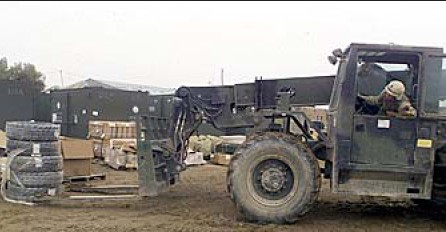
If LAV armored car tires bust daily as they do in Afghanistan/Iraq, are we saving any money at $1000 a pop? Wouldn't tracks that don't break be more economical?
I know you must be dying to invoke the Stryker 60 mph road speed as your final rebuttal to infer all of this "mobility". The fact is a 50hp/ton M113A4 Gavin on band tracks will go over 55 mph and "scoot" around just as nimbly as under 20 hp/ton overloaded Strykers, in fact more so. If you encounter a barricade as part of a deliberate ambush you couldn't avoid (it happens, respect the enemy) the tracked M113A4 Gavin can push it aside or rumble over it. The M113A4 Gavin can pivot turn in ZERO length. The Canadian Army is sending their M113s into Afghanistan combat with band tracks, and their country makes the Stryker.
Why are we writing you?
If we were in your shoes I'd want someone to write me just as I have written you.
Here is what we propose:
Why don't you request the 4 M113A3 Gavins that the Army used in the Fort Lewis Comparison Evaluation (CE) tests (that beat the other platoon's 4 Strykers) be sent to you in Iraq to get your men out of those HMMWV trucks that will NEVER be made RPG and IED resistant?
Or request some of the thousands of M113A2s/A3s that are in war stock or simply in storage be sent to you to replace your FMTVs and HMMWV since they can haul over 7,000 pounds of supplies and do it protecting their vital cargo and our even more valuable Soldiers?
Where is your mobile gun system?
The Stryker-MGS isn't going to work.
GDLS is trying to wash their hands clean of it.
Why not request the 4 x M8 Buford Armored Gun Systems with 105mm guns that DO WORK that the Army owns be sent to you in Iraq?
As leaders of the Army's first motorized brigade in combat with the enemy surely HQDA will not deny you what you request to improve your situation and protect the lives of your men as you better accomplish the mission.
Playing politics with American Soldiers' lives in Iraq: Army hunkering down in Iraq for November election and protect wheeled cash cows
Strykers safe from criticism?
Stryker expert Lonnie Schoultz writes:
"Well, there is really no problem with them getting hit. The Stryker Brigade in Iraq is the 3/2. As it was taking the field Congress was considering whether to buy any more of those hermaphrodites. Before the first shot was fired two of the Strykers tumbled into a canal and killed three men. While attempting to negotiate a back road, one hit an IED and caught fire after breaking the driver's foot. Then, they had another roll-over with a Stryker barreling down a major highway that just flipped over. It tore up the slat armor but nobody was hurt.
The Brigade Commander, Colonel Rounds, was told to not have any more accidents or have any more people hurt or killed. He restricted all Strykers to 45 mph and then had a second thought and just restricted them to the base. So, the 308 Strykers are in motorpools under tight security and haven't recorded 25 miles among the 300 of them since Rounds got his chain pulled."
Tribune reporter returns from Iraq
www.tribnet.com/news/iraq/stryker/story/4816485p-4756614c.html
Gilbert completed his assignment to cover the new brigade's deployment to Kuwait and its first few months of combat operations in Samarra, Balad and now in Mosul and across northern Iraq.
Stories and photographs wrapping up his stay as an embedded reporter with the brigade will be published soon. The News Tribune will also continue to cover the brigade's activities via e-mail and telephone interviews.
The brigade -- the first of its kind in the Army, built around the new Stryker vehicles -- is expected to remain in Iraq until November.
(Published 11:00AM, March 5th, 2004)
How do we kill the ruinous Stryker program?
GET CONGRESS TO KILL IT.
Demand that Congress stop buying these deathtraps even if the Army wants to call them "Future Combat Systems". Didn't the Army just say the Strykers were "not combat vehicles"???. The acronym is "FCS"...I guess the Army will have to come up with another lie, ehh acronym. With Retired Army Generals Heebner and Keane now working for General Dynamics, importers of the LAV-III/Strykers from Canada, its high time the "revolving door" of corruption be put to an end before more of our men are killed/maimed in these death traps. Isn't there a law restricting you on how long you have to wait before you can join the company that makes the "cash cow" system that you got accepted while in uniform?
Write your Congressman now!
Generals Shinseki/Schoomaker only got funds to ruin 5 active brigades with it. The other 28 Army brigades need help NOW to win the WAR we are in and that help should be HE drive, band-tracked, RPG resistant, applique armored, gunshielded M113A4 Gavin light tracked AFVs, the only affordable and available choice we have N-O-W. The good news is the tracked M113 Gavin is a far better vehicle than the wheeled LAV-3/Stryker anyway. Gavins only cost $3-a-mile to operate, its costing us $53-a-mile to run the Strykers. So much for wheeled armored car "economy". Maybe we should have read Hornback's study and TACOM fuel and operating cost data before we decided to buy LAV-IIIs and pretend to have an open competition for the best vehicle? The fix was in from the beginning that the LAV-III was going to be bought by the Army as General Heebner left the Army to be a GDLS Vice President with thousands of dollars of stocks. Strykers cost $3 million each. We already have the Gavins and only $478 thousand dollars makes them into the most capable, stealthy armored fighting vehicles in the world. Do the math. Employ the logic. Let's hope General Schoomaker will be a pragmatic and practical man who wants RESULTS and does the smart thing here to win battles and save our men's lives. That's the conventional Army. SOF needs light TAFVs to do multiple raids simultaneously after parachute insertions and stay on the ground for long periods of time to flush out enemies hiding in restricted, enemy controlled terrain and it cannot do this in road-bound and vulnerable wheels. The Army to save face will quietly transfer the Strykers to MP Brigades once enough Soldiers are killed/maimed inside such that Congress forces them to act responsibly.
BEHOLD, NOW THE "UP-ARMORED HMMWV" WHEELED TRUCK MADNESS IS UPON US!
EXCLUSIVE! WHY TRUCKS ARE NOT COMBAT VEHICLES:
To show a little of the lethal NLB firepower possible today, we have this video gun camera footage from Iraq of a 224th Attack Aviation Battalion AH-64 Apache attack helicopter lighting up some Iraqi terrorists in soft-skin wheeled trucks using the M230 30mm autocannon. The point is, watch what these large, exploding bullets do to human bodies and thin-skinned wheeled trucks. THIS IS WHY THE MINIMUM TRANSPORTATION STANDARD ON THE BATTLEFIELD MUST BE A LIGHT TRACKED ARMORED FIGHTING VEHICLE NOT A WHEELED TRUCK.
WHAT HAPPENS WHEN TRUCKS ARE HIT:
U.S. ARMY REPORT: Anatomy of an Iraqi Command-Detonated Land Mine (current buzz word: "IED") Ambush
HOW UNPROTECTED OUR TRUCKS ARE:
Another way for today's Tofflerian/RMA crazed Army Generals to get what they think is cheap wheeled vehicles made into combat vehicles in order to keep everyone in their social-pecking-order-place in the Army is to slap armor onto the HMMWV truck, and of course eventually a computer to do the required mental gymnastics. This is nothing more than a check-the-block, cosmetic change to placate the very real concerns of our Soldiers that they will be killed and maimed in wheeled vehicles. The Army is asking for $239 MILLION from Congress for manufactured up-armored M1114 HMMWV trucks that will take 2 years to build and WILL NEVER BE RPG RESISTANT and will quickly be overmatched by enemy road bombs exploding through their vulnerable windows and soft rubber tires.
Many Soldiers are reporting a far different situation than what is being presented to the general public by Army PAO news releases. Soldiers are not "in" the Army, they are the Army, a fact the General Officers (GOs) "club" does not acknowledge. GOs think the Army belongs to THEM as a toy to do as they wish. On today's Non-Linear Battlefield (NLB), the enemy intermixed with civilians and difficult terrain can attack at any time in any direction--there are no safe "rear" areas for Soldiers to drive around in rubber-tired trucks. We are in a long lasting, global war on terror; unfortunately the threat is learning from their successful attack on our troops in these wheeled trucks in Iraq; we need adequate and long-lasting improvements that overmatch the enemy's efforts not questionable and at best short-term cosmetic alterations to appease Soldiers concerned for their lives that are easily countered by the adaptive and asymmetric-advantage seeking enemy.
Lightweight 3-ton HMMWV 1 1/4 ton cargo-capacity trucks driven by our brave men and women Soldiers are specifically singled out by the enemy as targets for command-detonated car/roadside bombs and land mines mislabeled by the buzz-word acronym "Improvised Explosive Devices" (IEDs); so far killing over 250 of our best and brightest people and ruining an undisclosed number of Citizens-Soldiers who are now maimed for life. Others are recovering from wounds that will take years to recover from--if at all. The enemy has lots of 155mm artillery shells and plastic explosives to make "IEDs" that are getting bigger and more sophisticated as the recent double-bomb attack targeted the first responder rescuers of the first blast; and this tactic has now spread to Afghanistan.
The daily toll of American dead, maimed and wounded makes time of the essence, these preventable casualties threaten the entire war effort by loss of public support and U.S. Army recruiting/retention is suffering potentially ir-repairable damage due to a loss of faith and trust in Army senior leaders who continue to fail to protect the troops by making them drive in these vulnerable trucks. Our Commander-in-Chief, President Bush has ordered that our troops receive the best gear they need to win and survive the war on terror and this has not happened.
3-ton HMMWV light truck make-shift armoring is not working as Soldiers have still died in them like Captain Ernesto Blanco, just 28 years old---of the 82nd Airborne Division when a bomb blast went through the window of his HMMWV and into his unprotected face. A Soldier in his unit writes:
I am writing now from Kuwait, awaiting the final orders whether to proceed home or back to Iraq. I am tentatively escorting home the body of my XXXXXXXXXX and friend, Captain Ernesto Blanco, who was killed before my eyes in Quryat Ash Shahabi, Iraq, on Sunday, 28 December 2003 at 1245 HRS, approximately 3 hours after my last email to you. We were returning from a 'routine' vehicle recovery mission when an IED went off right next to his Humvee. He took the force of the blast in his face. He had lost so much blood there was nothing we could do, though we sped as quickly as possible to the Medical Detachment at the nearest base camp. He was still hanging on, but soon thereafter the docs were performing CPR. After about 30 minutes, it was over.
What makes me angry is we saw the little Haji bastards who did it; they couldn't have been older than 10. They were 400 meters away and running right to left at an oblique, and so they escaped. Our rounds missed them. Old enough to pull the trigger, old enough to pay the price, I say, but they got away to do it again some other day.
Ernie Blanco was an upstanding Christian man, one of the best officers I have ever had the privelidge of working with. He was a friend I could confide in "off line." He will be sorely missed.
We have contracted for more steel hardening of the HMMWVs. CPT Blanco was hit in the face, above the armor plating. The rest of his body was unscathed. There is only so much one can do. We are still trying to contract for the LMTV armor, but it is in the works. Like I keep saying, they have checked-the-block and that is all they will do until someone else dies and makes another block-to-check.
REVELATION!
Dan Rather Interview with CNN's Larry King: blast thru HMMWV windshield: docs can't save men
www.cnn.com/TRANSCRIPTS/0403/12/lkl.00.html
But the medevac people were tending to the Soldiers on two of those stretchers. They weren't attending to the Soldier on the third. And I said to myself as we saw that, 'I hope I'm wrong, but it probably means that at least one of those Soldiers is dead.' And indeed it did.
One was killed almost instantly. Another died if not on the medevac itself, just as they arrived at the hospital. And the third 82nd Airborne Paratrooper is still in serious condition.
I mention it because we had done the piece on the medevac people earlier in the week. And it's so much in my mind. And it was just a coincidence, but it was a sobering one, to see the people that we had done the story on earlier in the week actually do their job.
They got there very, very quickly. This was a case of -- I think this is typical of the way some of the injuries and deaths among the well over 500 Americans who have been killed here happens. The 82nd Airborne, Larry, as you know, is beginning to hand off their responsibilities in part of the Sunni Triangle -- in this case, just west of Baghdad -- to the 1st U.S. marine Division. And the 82nd Airborne Soldiers were on a mission to help a U.S. marine convoy.
And it was on that mission they made a stop at a certain place in the road. And when they did, what appeared to me to be a command- detonated mine at the side of the road. I'm not sure that's what it was, which is to say, somebody off in the distance by wire set this thing off.
And it was at just the right level. If it had been one foot lower or one foot higher, it probably wouldn't have blown through the window of that Humvee. But it was a combination of a sophisticated bit of good planning and some luck on the part of the people who put the bomb there that was placed just in the right place. They set it off at just the right time, with those tragic results."
The HMMWV's wheeled SUV configuration has windows, doors and windshield that can never be protected enough and lacks an unified armored body for all-around protection. The Army's recent message to units on vehicle self-help armoring (see below) says vehicles need hard steel to stop bullets and soft steel to stop blasts; HMMWVs limited to just a 1.25 ton payload can't even be fully covered by one thin steel layer let alone the two layers needed and can then only carry two troops inside. The recent unclassified, Headquarters Department of the Army message on HMMWV armor kits [see APPENDIX A], "XXXXXXXXXXXXXXXXX" states: (emphasis in boldface mine)
[REDACTED: WE CANNOT SHARE ON WWW. IF YOU ARE U.S. ARMY EMAIL US itsg@hotmail IF YOU WANT THE QUOTE FROM THE ARMY MESSAGE]
WAITING FOR FACTORY-MADE ARMORED HMMWV "SALVATION" THAT WILL NEVER COME: WHILE M113 GAVIN LIGHT TRACKS SIT IN STORAGE
05Mar04 Baghdad Report by CA Soldier:
She'd had a couple of rough weeks as she and her people are constantly on
those dangerous roads up north, where IEDs and ambushes are common. She's young and very pretty, but there's lines creeping in around her eyes and they're not
from the sun.
'We were in a regular convoy, going off to drop antibiotics at a local health
clinic when the IED went off,' she said. 'The fifth vehicle in our convoy was
hit by an artillery shell rigged to go off on command. It flipped the vehicle
over and the driver was killed immediately. Everyone else is in Walter Reed.'
Well, it was a little more than that. She went on to tell me that the driver
that was killed was a little girl only 19yrs old, just out of high school. The
device had gone off right next to her side of the vehicle. I won't go into
detail, but this girl was more than just killed. If you have any idea what
happens to someone in close proximity to an exploding artillery shell, you know
what I am talking about. At least it was mercifully quick. The rest of the team
was so busted up it's unsure if they'll ever make it back to duty at all and
one young man has probably lost his sight.
Oddly enough, Beverly isn't bitter about that. She's a senior Soldier and has
reconciled herself that these things happen in war. Their Humvee was a regular, soft skin vehicle that had been modified by local contractors with steel plate, known to the troops as a 'Hadji Hardshell.' You see a lot of them around, with boiler plate bolted or welded on in a hodge-podge of different styles and
configurations. All of them emergency field modifications concocted as things turned hostile over the last year. The protection they provide is dubious at best and in some cases it is obvious that the additional plate would only make things worse in an explosion of any force, adding to the shrapnel involved. Steel plate for armor is a special composition and hardness. It is made especially for the task. Boiler plate from an Iraqi contractor's yard doesn't cut it.
For example, I talked to some MPs who for kicks and curiosity 'tested' their
'Hadji Hardshell' against an AK-47 they had captured. The rounds went right
through. So then they pushed a bayonet through it with a little help from a ball
peen hammer. They are now some very, very worried MPs. Their "Armor" wouldn't
stop a knife. This is the type of Humvee that most Civil Affairs Soldiers
ride around in.
To truly understand this, you need to know that there is a new barometer that
the troops measure their relative risks in Iraq by. It's called 'Road-time'
and if you get lots of road-time, you're bucking the odds against the IEDs. You
don't get much road-time, you're sitting on a base, behind walls and wire.
With most of the heavy stuff being pulled back to base camps, road-time also
means Humvees. 'Road-time' doesn't apply to some guy in a tank.
CA gets lots of road-time. They have to, as on any given day they're
responsible for supporting the workings of everything from clinics to water treatment plants to the sanitary conditions in a local market. For every stop on their schedule it means 'road-time' and that means driving past about 10,000
different places where someone could rig up a bomb.
I spoke to one CA doctor who has put 3,000 miles on his Humvee and he's been
here since January. This is probably the only place in the world where regular
Army MPs, National Guard truck drivers and Army Reserve CAs tip their hats to
each other. Both are at top of the "road-time" food chain.
But here's the real kicker; an emergency order of armored Humvees from
factories in the US is due to start arriving sometime soon. Scuttlebutt has it,
however, that Civil Affairs is somewhere near the bottom of the list to receive
them.
'I have an area that stretches from Kirkuk almost down to the outskirts of
Baghdad,' Beverly said with a sigh. 'And now I've got five less people to cover
it with because we can't seem to get up-armored Humvees.' What she didn't
mention was that those five less people aren't your average Joe with an M-16
pulling guard at Camp Victory. They're public health nurses, infectious disease
doctors, veterinarians and civil infrastructure engineers. They're a little hard to replace. They come from a demographic that isn't exactly lining up to join the army.
But incredibly, Civil Affairs is apparently below tank drivers who have
traded in their M1s for an armored Humvee and who drive around for an hour or two on 'Patrols' but rarely, if ever, stop and interact with the Iraqis whose
country we're trying to rehabilitate. To be fair, such patrols are necessary to
show a visible, Coalition presence and those boys need decent vehicles as well.
But it boils down to a question of return for time and effort invested and a
bunch of guys speeding past on a "presence patrol" doesn't stack up against a
load of unobtainable cancer medication delivered to a children's hospital. The
priorities seem to be fouled up and until someone takes notice of it, ladies
like Beverly are going to keep racking up 'road-time' in death traps."
Slightly larger HMMWV trucks are not much better than the "vanilla" ones. Most bulk supplies are hauled by much larger FMTV trucks as HMMWVs primarily move people around though they are obviously inadequate as combat personnel carriers on the lethal NLB and may even be unsafe to operate when overloaded with make-shift armor. The Army bulletin elaborates:
[REDACTED: WE CANNOT SHARE ON WWW. IF YOU ARE U.S. ARMY EMAIL US itsg@hotmail IF YOU WANT THE QUOTE FROM THE ARMY MESSAGE]
Furthermore, HMMWVs and all wheeled vehicles--roll on air-filled rubber tires that burn if set off by a "molotov cocktail" or nearby explosion immobilizing the vehicle and our Soldiers inside for the enemy to concentrate rifle, machine gun and RPG fire into them to finish them off. The HMMWV is a rear area "people mover" and light resupply truck not a combat vehicle--and cannot protect against the current threat let alone keep up with the threat's bigger bombs and possible discovery and use of expedient flame weapons.
Its self-evident to nearly everyone directly involved in the Army that HMMWV light trucks are unsuitable for NLB combat whatever we try to do with add-on or built-in materials; 45+ mph road speeding has not evaded enemy bomb attacks lying ahead and only makes matter worse by increasing the severity of the often fatal accidents as the struck vehicles spin out of control.
[REDACTED: WE CANNOT SHARE ON WWW. IF YOU ARE U.S. ARMY EMAIL US itsg@hotmail IF YOU WANT THE QUOTE FROM THE ARMY MESSAGE]
Store-bought bigger engine/frame M1114 "up-armored HMMWVs" have already failed to protect our men in Iraq and CAN NEVER BE MADE RPG-RESISTANT. At 12,075 lbs combat loaded, up-armored HMMWVs can only carry 4 troops not a full 9-man infantry rifle squad; they cannot go off-road at will without getting stuck which offers no future for a global Army which has to be able to fight away from roads and trails over marshes, rice paddies, farms, rivers, streams and through jungles. Even on roads they tend to overheat and break-down often. What a "future" for the Army, huh?
Just in case pic is taken off USMC web site:
Caption:
Captain Jason Frei sits with the humvee door that was hit by a
rocket-propelled grenade in Iraq. Frei lost his hand north of An Nasiriya on March 25 while serving as the commanding officer of Battery A, 1st Battalion, 11th marine regiment, during Operation Iraqi Freedom. Frei, a 31-year-old native of Hazen, N.D., recieved the Purple Heart for his wounds. Whether Frei will be allowed to remain in the marine corps and what his duties may be is still up in the air pending a medical review.
THE HORSE-HOLDER PREDICAMENT: WHO IS LEFT TO FIGHT ON FOOT?
In the U.S. Army Cavalry of old, every 4th Soldier had to hold the horses for 3 other Soldiers to fight on foot. To move a 9-man infantry rifle squad, you need two HMMWV trucks, each can seat 4 men and have one standing upright through the roof manning a weapon.
Rifle Squad
HMMWV truck A
Driver
HMMWV truck B
Driver
No matter what you do, in the two-HMMWV trucks-per-squad situation 4 SOLDIERS ARE STUCK IN THE VEHICLES, leaving just 5 men able to dismount and fight on foot! That's a tooth-to-tail ration of 1:1. The Old Horse Cavalry had a better 3:1 ratio. We need LOTS of good dismounted light infantry on the non-linear battlefield. We need a M113 Gavin light tracked AFV that can carry the entire 9-man infantry squad. Even if you don't provide a driver/Track Commander (TC), you can still dismount 7 men, all at the same time from one place instead of twos and threes from two places in the two-HMMWV truck set-up.
Rifle Squad
M113 Gavin light tracked AFV
Driver
Gambling scarce taxpayer resources on a pair of overweight armored HMMWV trucks to move every Army infantry squad to hope-to-get-by the present disintegrating security situation in Iraq is tactically unwise and inefficient. It takes two HMMWVs to do the job of one M113 Gavin with a 275 hp engine and then with inadequate armor protection, lousy mobility and inability to swim at that. Calculate TWO HMMWVs with 200 hp engines and all of the so-called "cost savings" go out the window.
The wheeled truck doesn't belong on the non-linear battlefield. Overweight, thinly-armored HMMWV trucks will force American Soldiers into easy predictable paths for enemies to set bombs which will explode through their doors, windows, windshields and overcome thin, expensive $ and exotic---but easily overmatched material. Again, when you start off using wheeled vehicles instead of tracks, you are at a 28% space/weight disadvantage when you NEED EVERY SHRED OF ADVANTAGE YOU CAN MUSTER because the enemy has "homefield" advantage of fighting on terrain he knows, can prepare ahead of time and cache weaponry, ammunition as he "gangs up" on us ala Mogadishu, 1993. Once the enemy barricades the path in front and behind wheeled vehicles they become trapped as he pours on his fire until the wheeled vehicles catch fire and are totally destroyed. Tracked AFVs can push aside barricades, smash over abandoned cars and fight their way out of ambushes if aggressively driven. Wheeled vehicles cannot turn on a dime like TAFVs can. 2-years and $250K each for 2 HMMWVs for every squad is too little protection, too late for our Soldiers dying and being maimed in Iraq today and will condemn us to further preventable casualties in future conflicts.
Armored HMMWVs break down; General Paul Kern: 800 HMMWV trucks broke in middle east
The cheapskate U.S. Army has condemned the current troops in Iraq with almost no tracked armored vehicles while they try to milk from Congress at $250,000-a-pop, so-called "up-armored HMMWV" trucks that will require 2 years to build. Our troops are getting blown up killed and maimed in wheeled vehicles NOW on the non-linear battlefield where the enemy can attack in any direction at any time. Our troops need better armored mobility means today to keep order in Iraq: if they are getting blown up they can't win over anyone's "hearts and minds" if their own body parts are spread out all over the ground. 4th Generation Warfare requires the nation-state to keep the peace against sub-national discontent not be powerless victims. It takes two 6-ton quasi-armored HMMWVs with 190 hp engines to move just one 9-man infantry squad, so the cost is really $500,000 and fuel burn is 5 mpg. The Army is not saving any money.
Slapping 2 tons of armor onto originally a 3 ton wheeled vehicle is like a lady trying to carry a safe on her back while wearing high-heeled shoes: it overloads too much pressure onto too narrow wheels, suspensions and drive trains. In civilian life, an armored car has to be rebuilt several times because their armored boxes over-tax their drivetrains. The commander of Army Materiel Command General Paul Kern said the service takes an estimated eight hours to reset a HMMWV; some experts say that figure can skyrocket to 62 hours to pull the vehicle's engine, whereas fixing (swapping of the engine) an M1A1 Abrams heavy tracked tank requires only about 30 minutes. When even thin armor is added to HMMWVs for minimal protection against roadside bombs, the weight places an additional strain on engines, Kern said during the 2004 Winter Symposium sponsored by the Association of the U.S. Army. "I've got 800 of them right now sitting around . . . trying to get back to the United States with a retrograde problem...the challenge I see is making decisions quickly enough and getting on with a new development, because the vehicles are wearing out pretty fast."
No one really knows what it costs to maintain the M113. There has NEVER been a life cycle cost study and the M113 preceded the Army's systems for managing fleets, so don't be dismayed by those who say light tracks are somehow "too hard to do". OSMIS, the Army's system for capturing costs, does not differentiate between A2s and A3s except for one of the models, and that only since 2002 and without analysis. $/mile quotes from people like the Stryker PM are ridiculously high because they are based upon about a week's worth of anecdotal data and extrapolated beyond reason to achieve whatever the guy doing it needs to say.
The logistics system for M113s is fully mature, and needs no funding of any type for buildings, training, etc. 133+/- M113s will be deployed in every modularized brigade. More than any other vehicle type in the heavy UA. 48 other countries in the world have M113s also and we could forge an international M113 support base in a heartbeat for expeditionary operations.
Maintenance for the M113 Gavin is only different mechanically from a Humvee truck in that it has two tracks and 10 metal roadwheel sets compared to the Humvee's 4 wheels and 4 air-filled rubber tires--12 items to 8. However, a single Gavin can move 1 rifle squad that takes two Humvees to move---12 maintenance items to 16. Both use roughly 200 hp class diesel engines. It requires maintaining two Humvee engines to move 1 rifle squad and only 1 engine to move a rifle squad in a Gavin. Humvee users are finding in Iraq that "run flat" inserts do not work well enough to not have a spare lest they be stranded in "bad guy land". They are learning the hard way how to jack up a Humvee and change out a flat.
In contrast, Gavins with steel tracks and rubber pads simply do not break, deflate or burn from sharp objects and enemy attacks. According to Humvee users NO TIRE type exists that is good in sand and mud and they at best their tread lasts only 8 months--tracks can last for years and they are good in sand and mud and roads. www.flashoffroad.com/features/Tires/tires.htm
With a low ground pressure of 8 PSI, Gavin rubber track pads are gentle on paved roads so they can convoy themselves to training areas and APODS and SPODs if rail transport is unavailable. Many NG M113 users simply do limited PMCS each month, hop inside their Gavins that sit untarped in the cold, rain and sun for years at a time and operate them successfully. A single simple, tracked AFV like the Gavin is actually less maintenance needy than two Humvee trucks rolling on fragile air-filled tires. Unless the T150 track breaks--and it takes a lot to do this---you get 10,000 miles for sure with Gavins, and the 10,000 miles of life of a Humvee rubber tire only if it never runs over a sharp object. Unlike shredded rubber tires that are constantly thrown away at $1,000 a pop, if a track breaks IT CAN BE FIXED AND RETURNED TO DUTY at almost zero cost. Usually only a track pin bushing fails; replace it and your track is as good as new. During PMCS switching out track shoes with worn bushings prevents tracks from breaking in the first place. If a bomb blast takes out several track shoes, you simply short-track to the nearest roadwheel and drive home to add the remaining track shoes. Gavins get 3.5 mpg, heavy Humvees about 8 mpg---since it takes two Humvees to move a squad this means 4 mpg or essentially the same amount of fuel demand as a single Gavin.
APPENDIX A: M113 GAVIN ARMOR POTENTIAL GREATER THAN ANY WHEELED VEHICLE
The Gavin is a compact, unified 1.5 inch to 1.75 inch thick aluminum armored box that is 7.62mm AP bullet proof and floats. The Humvee is a flimsy, unarmored framework with 1 roof, 4 door openings and a windshield; even with armor added around the openings its full of penetration points and it cannot swim. Because its engine can only move 1.25 tons, it cannot accept enough armor all around to cover all its original weak points, the roadside bomb threat is quickly surpassing the uparmored Humvee truck's spotty armor in Iraq. The Gavin by being a unified armored hull and spreading its weight over large tracks can move 3.5 tons of payload so it not only starts off with greater bullet/blast armor protection (the Humvee starts with no armor protection) it can easily accept several layers of armor to react to missile strikes, pre-det RPGs and shrug off road bomb blasts. On top, M113s can have ACAV gunshields with clear see-thru panes for infantry to face outward ready to return fire and ambush the ambushers.
Even if you started with an unified armored hull and placed it over wheels (LAV-1s, 2s, 3s "Strykers") it will have to be 28% bigger than more compact tracks---that's 28% potential armor protection we cannot afford to lose from the get go, and such a vehicle still rolls on air-filled rubber tires that restrict it to roads/trails where attacks will puncture, shred and set its rubber tires on fire. Armored trucks like LAVs sit too high above their tires to clear the rear ramps of C-130s for LVAD parachute heavy drops, and are often too heavy even stripped of all men and equipment for the C-130 to fly them beyond 1 hour's flight time to airland them.
An armored Humvee weighs 9, 000 pounds, since it takes two to move 1 rifle squad, at 18, 000 pounds its essentially no different from the Gavin's 20, 989 pound weight--in fact it weighs the same as 5-ton cargo capacity FMTV trucks Army Airborne, Air Assault and Light infantry units use. However, to airdrop two Humvee trucks you will need two 16 foot Type V airdrop platforms, two sets of extraction and cargo parachutes and twice the rigger man-hours than the single M113 Gavin on a 20-foot platform requires. The rigging procedure to airdrop a Gavin is simpler than the many steps needed to pad, reinforce and cushion a Humvee truck to heavy drop. However, you cannot airdrop two armored Humvee trucks from a C-130 because their rigged weights exceed the C-130's payload limit. So far, armored Humvees have not even survived parachute drops without damaging their wheeled suspensions overtaxed with armor they were not designed to carry. In contrast, not only can you airdrop a Gavin with extra armor from a C-130 without ill effects, you can also have its 2-man crew and designated 9--man rifle squad follow it out the rear ramp to land closer together to get its armored mobility and mobile firepower into combat within minutes on the drop zone. To maximize the Airborne combat power the C-130 can deliver by parachute and airland, light tracked AFVs are the answer.
The answer is to stop playing with expensive, fragile HMMWVs and solve the problem by immediately shipping over to Iraq some of the thousands of better protected, thick-skinned 11-ton M113 Gavin light tracked armored fighting vehicles the Army has ready TODAY in storage and the 235+ Gavins the National Guard's 30th and 81st Brigades left behind when they went to Iraq. As General Kern alludes, tracked AFVs are mechanically simpler than wheeled trucks, spreading their weight over a larger area to go easier on their running gear; a single light tracked AFV like the M113A3 Gavin with 275 hp engine can carry an entire 9-an rifle squad with gunshields, extra RPG-resistant armor at a 3.5 mpg fuel cost with far better armor protection than vulnerable HMMWVs with 2 windshields, 8 windows, 8 doors rolling on 8 air-filled rubber tires that easily burn. The M113 Gavins roll on metal roadwheels with steel tracks with rubber pads or band tracks--so they are easy on Iraqi pavement--you can have 50+ mph road speeds and vibrationless "stealth" for raids. The latest T150 track lasts for 10,000 miles--a lot longer than rubber tires that bust daily. M113 Gavins are the most successful vehicles in Iraq with those units lucky enough to have them. Its time EVERY Army unit use them like the U.N. does when they go to a dangerous area. If the security situation collapses in June, when we turn over Iraq to the new government, crowds of Iraqis could swarm around HMMWVs, start rocking their wheels, turn them over and set them on fire; you can't do this to a much denser M113 Gavin. HMMWVs are SUVs not combat vehicles! They are easily attacked and are at shoulder height; firebombs can be easily thrown into their open windows and doors!
Patrolling Iraq in HMMWV trucks is absurd and tactically unsound
HMMWV trucks are at shoulder level
Windows and doors are often open to attacks
Result: destroyed vehicles at $250,000 each and dead/maimed Soldiers
An Iraqi prepares to pour more fuel on a blazing U.S. Army Humvee vehicle following a shootout between American forces and guerrillas in the restive town of Falluja March 25, 2004. Two U.S. Soldiers were killed and four wounded in two separate attacks on convoys in Iraq (news - web sites), the U.S. military said. (Mohammed Khodor/Reuters)
Our troops in Iraq in any kind of HMMWV truck are at risk: its time to pull out the HMMWVs and replace them with M113 Gavin light tracks. The Israelis use up-armored M113s and don't lose a man a day in combat like we are in Iraq.
Casualties in Iraq are temporarily down because troops have been ordered to patrol less to reduce bad PR for Bush re-election. Type B personality NG troops are also less inclined to patrol and launch raids against the resistance. MSNBC's Chris Matthews on Hardball recently asked former presidential national security advisor, Sandy Berger about this. He is worried chaos will break out with the U.S. exerting less control. The cat is out of the bag. Whether American forces could survive a Tet-type offensive all over Iraq hinges on our troops not being properly equipped with M113 Gavin light tracked AFVs which are sitting back here in the U.S. when they should be there in Iraq.
However, the Bush DoD is Tofflerian: they think all you need to win wars is steer FIREPOWER by mental "mouse clicks" and "mop up" with troops-in-trucks. This care-free mentality has failed in non-linear Iraq; so far 550 dead, 10,000 wounded Americans--some maimed for life. Rather than admit their lazy view of warfare is wrong, the Tofflerians want to cover up their mistakes with an expensive 2-year program to slap armor onto wheeled trucks weighing down their tires making the entire Army too road-bound to fight in mud/rice paddies/jungles of the far east and much of the world. To save our troops, maintain control in Iraq and win future 4GW battles against terrorists we must value physical, ground MANEUVER using go-anywhere, adequately protected tracked armored vehicles. Upgrade these sound platforms for future warfare not waste money and time on trucks that can never be RPG resistant. A tracked AFV is 28% more space/weight efficient than a wheeled truck; we cannot afford to throw out 1/4 of our armor protection by rolling on air-filled rubber tires, and the troops cannot wait 2 years for a HMMWV armor cover-up. Congressman Davis from Tenessee last month sent a full report on these facts to Secretary of Defense Rumsfeld. Senator John Kerry knows what its like to be under enemy fire; if the Bush DoD doesn't act soon to send over M113 Gavins en masse to our troops in Iraq so they can make it home safely, then we need to send the Tofflerians home in November. We need people in DoD/the White House who are not concerned about transformation egos, who respond to NLB realities and get tracked vehicles to our troops so they can survive/prevail in combat.
REFERENCE: ITA News Report
The service takes an estimated eight hours to reset a
humvee; some experts say that figure can skyrocket to 62 hours
to pull the vehicle's engine, whereas fixing (swapping of the engine) an
M1A1 Abrams tank requires only about 30 minutes, Gen. Paul Kern said.
Alternators on the popular infantry carriers also are larger
due to increased energy demands, fed by equipment such as
night vision devices and blue force tracking. And when armor
is added to the humvees to aid protection against threats like
roadside bombs, the weight places an additional strain on the
engines, Kern said during the 2004 Winter Symposium spon-sored
by the Association of the U.S. Army.
"I've got 800 of them right now sitting around . . . trying
to get back to the United States with a retrograde problem,"
Kern said.
As a result, technicians from AMC and other Army com-ponents
are examining technology to create stronger radial tires,
tank tracks and improve power sources so that humvees do not
have to rely so much on their engines. Other capabilities in-clude
hybrid electric engines, systems that support suspensions,
different types of batteries and energy storage capabilities.
"The challenge I see is making decisions quickly enough
and getting on with a new development, because the vehicles
are wearing out pretty fast.
An Army Veteran journalist writes about the wheeled madness:
www.lonsberry.com/writings.cfm?story=1378&go=4
New York Post
Fight Like Americans
By Bob Lonsberry
I saw Dustin's name in the paper Tuesday. And it made me remember 20 years
ago in the open-bay barracks at Fort Knox, Ky.
The wool blankets and camouflage uniforms and the stubbly heads of a new
crop of Soldiers: I remember it like it was yesterday.
And one lesson has never left me. And that is that most Soldiers are boys.
Oh, they are men, in many regards. They have the bodies of men and the
courage of men and the responsibilities of men.
But they are mostly boys.
They have lived virtually all of their lives as children. Many don't have
cars, most haven't made love to a woman, few are married, even fewer are
fathers. They don't own homes or property, they typically don't have a pot
to pee in. Their possessions are CDs and their memories are of the 10th
grade.
It occurred to me, there in the barracks, that most of the Soldiers around
me were just six months past their senior prom, and even less time had
passed since their high school graduation.
They were men, but just barely. Yet they were beside me learning how to
fight, and upon graduation some of them went away to units and training that
would put them potentially and quickly in combat.
That made me very sad 20 years ago in Fort Knox, and my feelings became more
somber over the years as my own son grew to that age and he and his friends,
lads I had known since they were in diapers, were the age and the stature of
my former comrades.
We send boys to fight our wars.
Dustin Sekula reminded me of that.
A marine private out of Edinburg, Texas, the county seat of Hidalgo County,
a little bit north of McAllen and a little ways inland from Brownsville.
Dustin Sekula was 18 and a member of the 1st marine expeditionary force.
He was listed in the paper after Geoffery Morris, a 19-year-old out of
Gurness, Ill., and Aric Barr, the old man at 22, from Allegheny County, Pa.
Three marines, like the seven more from the next day, and who knows how many
to come.
We send boys to fight our wars.
I'm not saying those wars don't need to be fought, and I'm not saying young
men aren't the ones to fight them, but I do think we forget the youthfulness
and the innocence of the men who wear our uniform.
And I think we sometimes forget the value of their lives, and improperly
weigh them in the equation of conflict.
Don't misunderstand me, this is not an argument for withdrawal. This is not
one more whining cry to get out of Iraq, a cry against war and conflict, a
call for an end to hostilities.
Actually, this is just the opposite. I think we're pussyfooting around in
this Iraqi war, and I think it's costing us young men's lives. I think we
care more about playing nice and currying the world's favor than we do about
protecting these fine young Americans.
I think we are making the mistake of expecting our enemy to respect the
value of our servicemen's lives when we don't appear to value them
ourselves.
For example, we have been taking casualties for weeks and months from
improvised explosive devices, hit-and-run gun attacks and rocket-propelled
grenades. These are all effective attacks on infantrymen and light vehicles,
like humvees.
So why do we keep exposing infantrymen and humvees?
In war, you should always play your high cards. Trump, and trump big. If
they're hitting your infantry, send in your armor. If your humvees are
vulnerable, deploy your B-52s. If it's not safe to drive a humvee down a
street, try going down it in an Abrams.
Don't pussyfoot around with these jihad boys, blow them to hell. This isn't
Marquis of Queensbury, this is kill or be killed. And with armaments,
technology and numbers like we've got, the other side should be nothing but
a grease spot in the road.
But it's not.
It's functioning and moving effectively against us.
At the cost of Dustin Sekula, Geoffery Morris, Aric Barr and about 600
others.
I think it's because we're making the Vietnam mistake, we're fighting with
one arm tied behind our back. We're trying to curry world opinion and kiss
the backside of people who are going to hate us no matter what. We're trying
to be civilized in a contest with barbarians.
We've forgotten the arithmetic of patriotic battle: That it's better for a
hundred of them to die than for one of us to die.
We owe that to these young men in uniform, and we owe it to their families
and sweethearts back home.
It is better for a B-52 to flatten an Iraqi neighborhood than it is for one
United States marine to die. It is better to roll tanks down a foreign
street than it is to put an American Soldier in his grave.
If 100 Soldiers can get a job done, then 1,000 can get it done more safely.
We need to use our strength, we need to use our technology, we need to use
our power. We need to go big.
More troops, more arms, more aggressive tactics and strategies. Let's flood
Iraq with American men and munitions and let's steamroll anybody who gets in
our way. No more pussyfooting.
It's time to fight like Americans.
That's the best thing for our troops - the best thing to give them a chance
to come home and live the lives the rest of us enjoy.
And it's the best thing, ultimately, for Iraq.
Bob Lonsberry is a veteran journalist and talk-radio host.
ENTER THE GAVIN
If America's Army is going to expand to handle world-wide commitments from the current 33 brigades, even if Strykers were combat vehicles (they are not) at $3 million each we simply cannot afford to put all of our Soldiers in them. We have lots of HMMWVs but they CANNOT be made protective enough and are not mobile enough. We need an affordable vehicle platform that can be supplied en masse to ALL OF THE ARMY NOW, that can be up-armored and fitted with the C4ISR digital computers the Army's Generals are infatuated with. There is only one vehicle that the Army already has thousands of that can do this.
The good news to report is; the U.S. Army has thousands of thick-skinned armored, 10.5 ton M113 tracked Armored Fighting Vehicles (AFVS--or nicknamed the "Gavin" by the troops after Army General James Gavin who created it while Army R&D Chief) in storage with fully enclosed armored bodies to shield up to 13 troops inside. The M113 happens to be the most reliable, combat successful AFV of all time, ever, in use by dozens of free world countries. M113 AFVs weigh the same as the large, 22,000 pound FMTV series trucks now used to haul supplies for Army use, but externally are about the same size as a HMMWV truck, though that concentrated armored weight results in armor protection and robust construction to hang even more armor and offers tracked mobility superior to any of the Army's wheeled vehicles to include the $3 million dollar each, but 14mm (1/2 inch) thin-skinned Canadian-made Stryker. Gavins roll on solid metal road wheels and solid steel tracks with rubber pads to be gentle on paved surfaces and each M113 can replace two HMMWV trucks so all HMMWVs in Iraq can be withdrawn from daily use in a matter of days not 2 years from now (see APPENDIX C). Overnight, we will no longer present easy, tempting, unable to-fight-back wheeled truck targets for the enemy to exploit for media public perception points to further their unjust cause and kill/bleed our manpower. Below is a listing of another set of M113s that are combat-ready now in war stock that could be dispatched to Iraq/Afghanistan:
[REDACTED: WE CANNOT SHARE ON WWW. IF YOU ARE U.S. ARMY EMAIL US itsg@hotmail IF YOU WANT THE QUOTE FROM THE ARMY MESSAGE]
Wheeled HMMWVs: rubber tires burn
When U.N. peacekeepers go to troubled area they often use up-armored M113 AFVs.
So does the Israeli Defense Force (IDF) and they do not lose a man-a-day like the U.S. Army is in Iraq.
American Gavins in Iraq:
Israeli Zeldas:
www.waronline.org/IDF/pictures/Army/M-113_Zelda/index.html
Funny how the wheeled armored car fanatics are always saying M113 Gavin light
tracks cannot do stability operations on paved roads when they have been
doing them for years and are doing so as we speak. So while U.S. Army Soldiers are getting killed/maimed in Iraq/Afghanistan, Army leaders sit on thousands of thick-skinned, M113 Gavins that are sitting in storage and at National Guard armories while they beg for millions of dollars from Congress to buy vulnerable, road-bound thin-skinned HMMWV trucks rolling on air-filled rubber tires. "That dog don't hunt."
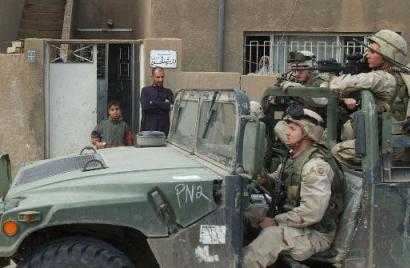
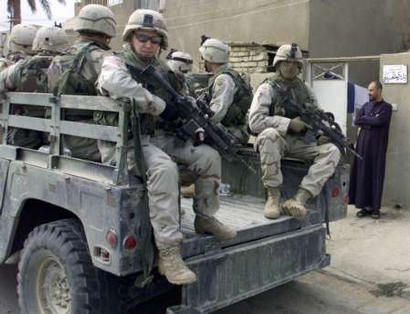

"Let me say that yesterday, Larry, on the road, just west of Baghdad, we saw the medevac team in action. We were on the road where, just ahead of us, a roadside bomb went off against an 82nd U.S. Army convoy. And just as we rolled up, the medevac helicopter was arriving; we saw them carrying away three Soldiers on three stretchers.
"I had an interesting chat with a lady captain named Beverly who was down from one of the more hostile areas north of Baghdad today. She's from the Army's Civil Affairs outfit. These are U.S. Army units who have the job of building clinics, keeping hospitals supplied (the NGOs having left) and generally getting up and out every day to make life a bit better for the workaday, Iraqi folks in their areas.
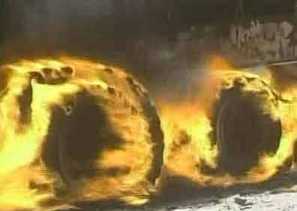
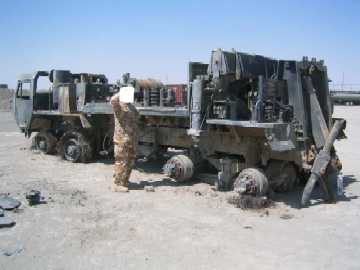
Rubber burns. What a revelation! Does the Army's officials know this yet?
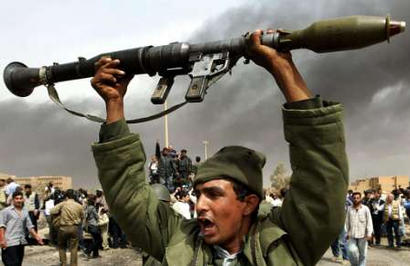

Up-Armored HMMWV destroyed by RPG hit. Soldiers inside were not protected.
YET ANOTHER TRAGIC HMMWV FAILURE:

www.usmc.mil/marinelink/image1.nsf/Lookup/20031114174532
Photo by: Cpl. Matthew S. Richards

VC/Gunner
Soldier 1
Soldier 2
Soldier 3
VC/Gunner
Soldier 4
Soldier 5
TC/Gunner
Soldier 1
Soldier 2
Soldier 3
Soldier 4
Soldier 5
Soldier 6
Soldier 7
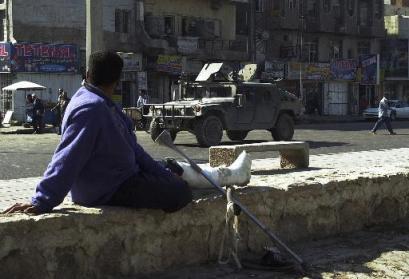
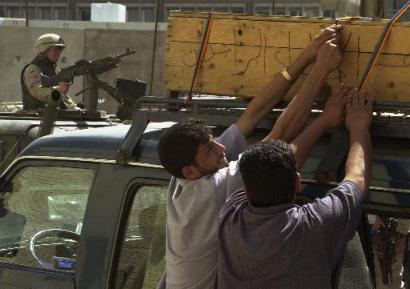
MATERIEL CHIEF SAYS ARMY MUST SLASH
HUMVEE REPAIR TIME: The commander of Army Mate-riel
Command said last week the service must become faster at
fixing its fleet of humvees, Inside the Army reports from Ft.
Lauderdale, FL.
April 10, 2004
DUSTIN Sekula made me think of basic training.
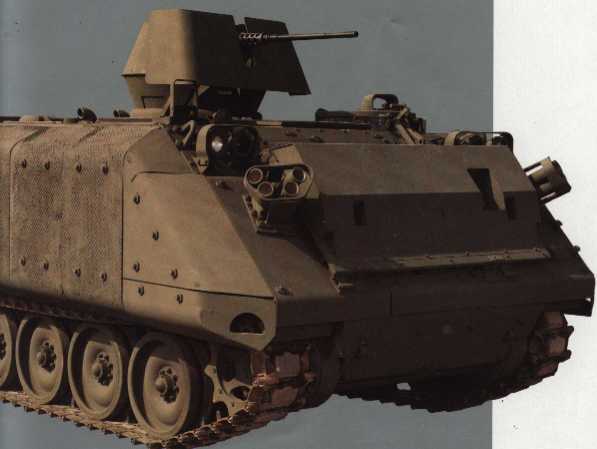
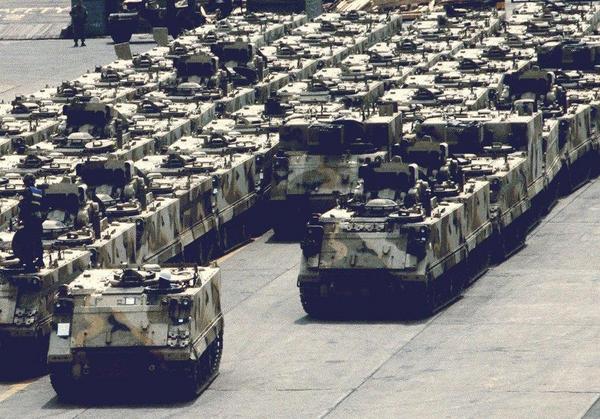



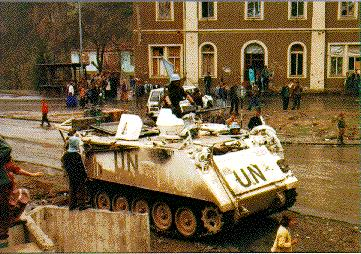
NEW! IDF and American M113 Gavins in combat on roads not harming them at all
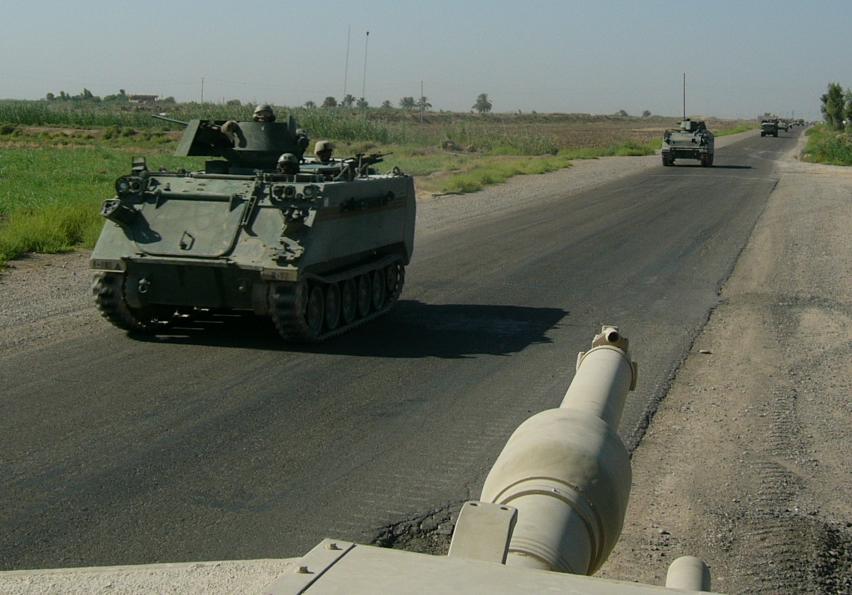
The M113 Gavins in Iraq now, are highly successful with heavy divisions suffering less than a handful of deaths compared to the over 200+ Soldiers who have died in HMMWV trucks, but we do not have enough of them. We need to supply support and light infantry units M113s who have no armored vehicles at all before more Soldiers are killed and maimed in HMMWV trucks. Soldiers in Iraq and going to Iraq have requested M113s and other light tracked AFVs and been denied them by Army officials.
The M113's 1.5 to 1.75 inch armor hull protects as-is against rifles/explosions says the Army's TACOM M113 Data Book on page B-6 states:
Basic Armor, M113 FOV
Basic Armor Protection Levels
[REDACTED: WE CANNOT SHARE ON WWW. IF YOU ARE U.S. ARMY EMAIL US itsg@hotmail IF YOU WANT THE QUOTE FROM THE ARMY DATA BOOK]
IMMEDIATE GAVIN ARMORING FOR IRAQ & UPCOMING CONFLICTS

There are 1, 775 Gavins in combat in Iraq now. Time is of the essence. The Army over the years has refused to attach the spaced armor they are supposed to have. We do not have to wait any longer! There are 1, 600 old M2A0 Bradley fighting vehicles (BFVs) here in the U.S. that have thin laminate armor skirts that are of no use to them since these beat up and rotting BFVs need to be completely refurbished and fitted with thicker skirts to hold explosive reactive armor (ERA) tiles since the skirts are bolted directly to the BFV hull without separation to pre-detonate RPGs. These old BFV skirts sitting at Red River Arsenal and on decaying BFVs in other locations can be cut and fitted to Gavins for only the cost of installation. These "A0" kits can be sent forward to Iraq for Soldiers to attach to their Gavins themselves. The A0 armor kits can remain in Iraq when units rotate out to help the incoming units prevail in combat.
1. To get A0 armor kits for your Gavins, have your unit send up an Operational Needs Statement (ONS) through your chain-of-command to get the BFV skirts sret aside.
2. Contact UDLP, maker of the mighty M113 Gavin and alert them of your combat need:
UDKP Larry Clark (703) 312-6127
The A0 kit also includes extra armor plate for the front glacis of the Gavin!

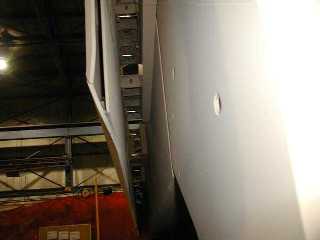
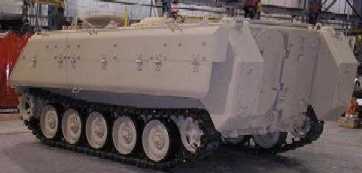
Notice how the BFV skirt is cut by high-pressure water cutters to fit the compact M113 Gavin.
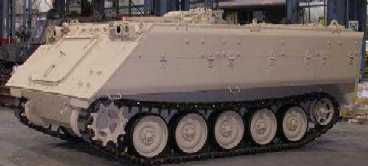
Notice the extra front armor plate attached to the Gavin's front.
The Army M113 Data Book figures indicate that each M113 depending on model horsepower has a 4,000-8,000 pound payload carrying capability which means up to 4,000-7,000 pounds of additional armor on top of the rifle/explosion resistant hull armor to stay ahead of threat and still carry troops/weapons/supplies to accomplish mission. Troops supplies hung outside in external racks furthers armor protection even further.
The issue here is the weight of the vehicles. 70-ton heavy tanks with tracks do tear up the roads. But the facts are that a 20T tracked vehicle has lower ground pressure than a 20T wheeled vehice. The Australians found that their LAVs were craking the thin pavement in East Timor because of the intense point pressure directly under each wheel -- on Stryker for example, 24 tons over 8 wheels is 3 tons each, spread across less than 1 square foot -- that is a lot of ground pressure. Correspondingly, the Australians brought 11-ton M113s into East Timor specifically because they did not tear up the roads.
The M113's durable T130 tracks were good for 10,000 miles in soft soil Vietnam; reports from M113 Gavin combat commanders is they are go-anywhere and any distance via their low 8 PSI ground pressure and soft rubber pads, even under-powered 212 hp engine M113A2 Gavin 38 mph speed and acceleration from 0 to 35 mph in 69 seconds is more than adequate when standard convoy speed is 25 mph. M113A3 Gavins with 275 hp engines have a top speed over 41 mph and accelerate from 0 to 35 mph in just 27 seconds with a power ratio of 20 hp-to-ton. M113A4 Gavins with hybrid-electric 500 hp instant propulsion with band-tracks can go over 55 mph on roads with an unsurpassed 50 hp/ton power to weight ratio. (ref: M113 Data Book pages 15 and 37 and UDLP MTVL and HTTD fact sheet) See APPENDIX C for more M113 Gavin tactical advantages over HMMWVs. New T150 track has expected life of 15-50,000 miles for soft soil/hard surfaces. What more do you want? T150 track has been available in the Army supply system since 1QFY03.
M113s can go-off-road and cross-country, at-will to avoid enemy ambushes and strike at America's sub-national terrorist enemies hiding behind populations/difficult terrain.
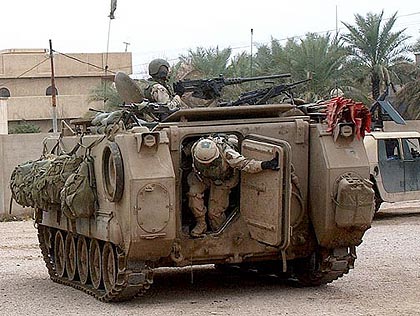
An Army officer who commanded a Combat Engineer Company that fought with the Army's 3rd Infantry Division to Baghdad last year describes how they proceeded towards the capital city, that they were "pelted" by enemy Rocket Propelled Grenades (RPGs) and enemy automatic weapons, destroying his HMMWV truck which was riddled with bullets. After two ambushes, his unit switched to entirely M113A2 Gavin light tracked armored fighting vehicles which offered far better protection than any wheeled vehicles. All wheeled vehicles were put as far rear in the column as possible. He reports:
"My company attacked with the Task Force (TF) in every major battle with XXXXXX. We were either 2nd or 3rd in the order of movement (OOM) for every battle but one in which we were 4th. We were in the middle of the action. Even though our light tracked M113A2s could go off-road, if we did, a M1 Abrams heavy tank would 'eat it' and get stuck, so we stayed road-bound for their sake.
I'm not sure of this but I'd say my M113's ate more RPGs and small arms than any other deployed to Iraq to date. We made several modifications that I'm convinced saved the lives of 5-10 Sappers because we were able to 'absorb' RPGs in a very unconventional manner. We basically made our M113's mobile fighting positions by welding together storage racks and bolting them to the outside of our vehicles. We then filled them with equipment and supplies to create 'baffling'. If we ate a case full of meals, ready-to-eat (MREs), we took the empty box and filled it with dirt and placed it back in the external racks to provide extra ballistic protection. When RPGs hit, they would hit a rucksack or a hard equipment case and go off, and fail to do more than gouge a hole in the vehicle's side.
As it was all we had just 6 Soldiers wounded, 4 were shot by AK47s and two had mortar shrapnel wounds; pretty good all things considered but could have been prevented if we had more gunshields on the top of our M113s like the Israelis have. Even after the 'war phase' was over, I always rode from base camp to say Baghdad International Airport in my M113 instead of a wheeled HMMWV, why risk your life on a roll of the dice?
We put 500 miles on these vehicles all the way to Baghdad no problem and WITHOUT A SINGLE REPAIR PART DELIVERED TO US THE ENTIRE TIME WE WERE THERE. All we had for repair parts was what we carried when we crossed into Iraq. We 'short-tracked' two of our M113s when their sprocket wheels were destroyed and ran them that way for weeks. Our light ground pressure with rubber pads on our tracks did not harm Iraqi roads and pavement. You can't ask for a more durable and easy-to-operate and maintain vehicle than a M113. I wouldn't be alive here now if it were not for the armor protection, tracked mobility and over-all durability of the M113s we used.
The M113 is an outstanding, durable and easy-to-maintain armored vehicle that can go anywhere, swim and be parachute dropped or lifted by helicopters, which is very important for Combat Engineers who have to lead the way for the entire Army; making sure the path is clear and safe. We should up-armor these outstanding M113 Gavin light tracked armored fighting vehicles to M113A3 standards which have external fuel tanks, spall liners extra outside armor and underneath with gunshields for our men to fire out behind and a bigger engine. On top of this, our external storage racks would add even another layer of protection. I hope our Congress and Army leaders will budget funds to upgrade these war-winning vehicles so they are supplied throughout our Army."
3D Air-Mech Maneuver: what the Stryker pundits brag about doing but can't; M113 Gavins can and have been doing for years!
NEW! 173rd Airborne Brigade flies in 15 x M113A3 Gavins to deliver a mechanized infantry medium ready company to Northern Iraq
Details: SETAF's Immediate Ready Forces
All the World's Airborne Operations
Shame on you, National Guard: leaving 235+ life-saving light tracked armored vehicles and accepting active army hand-me-down trucks in Iraq
The National Guard's leadership in Washington D.C. and in the 30th and 81st Brigades is so lacking in professional military knowledge--even self-preservation survival instinct---that they are going to Iraq as "temporary help" underlings of the active army without demanding they take with them their 235+ M113 Gavin light tracked armored fighting vehicles which are perfectly suited to urban stability operations threatened by car/road bombs, grenades, RPGs and AK47 attacks. I say "+" because I'm not counting the M113s their Combat Engineers use. If you count just the M113 Gavins their Infantry and Armor Battalions use/have they have over 235 light tracked AFVs which can each move 11 Soldiers at a time, or 2,585 people under full armor protection at a single time.
81st ARMOR BDE = 94 x M113 Gavin-type light tracked AFVs 30th INFANTRY BDE = 141 M113 Gavin-type light tracked AFVs
_______________________________________________________
TOTAL 235 x M113 Gavin-type light tracked AFVs
www.globalsecurity.org/military/library/policy/army/toe/mech.htm
81st Armored BDE = has 94 x M113 Gavin type light tracked AFVs
http://216.239.41.104/search?q=cache:C6nd5-g1-pcJ:www.washingtonguard.com/81bde_Mob/81FAQ_Home.html+81st+brigade+washington&hl=en&ie=UTF-8
The designation "Armor Brigade" points to the two battalions of tanks and a battalion of infantry that provide the robust coverage for a myriad of possible scenarios.
Definitions
M113 or CARRIER or 113 = Gavin infantry carrier light tracked AFV
M577 = Gavin with higher roof as command post vehicle light tracked AFV
MTR CARR = Gavin M1068 120mm heavy mortar carrier light tracked AFV
1 x Brigade Headquarters
HHC
Headquarters and Headquarters Company, Brigade = 9 x M113 Gavin type light tracked AFVs
M577A1 6
M113A1 1
M88 1
2 1/2 Ton 4
5 Ton 1
C2V 5
M577A1 1
HMMWV 12
M113A3 1
M88 1
FMTV 5
2 x Tank Battalions
2 x HHC Tank Battalions = 54 x M113 Gavin type light tracked AFVs
A HHC has:
Command Section
HMMWV
M1A2
HMMWV
S-1 SECTION
LMTV
S-2 SECTION
M577
S-3 SECTION
M577
HMMWV
HMMWV
M1A2
M113
S-4 SECTION
HMMWV
M577
COMPANY HEADQUARTERS
HMMWV
HMMWV
HMMWV
LMTV
COMMUNICATIONS SECTION
HMMWV
HMMWV
M577
SCOUT PLATOON HEADQUARTERS
ARMT HMMWV
ARMT HMMWV
FOUR SCOUT SECTIONS
ARMT HMMWV SEC LDR x 4
ARMT HMMWV SQD LDR x 4
MORTAR PLATOON HEADQUARTERS
HMMWV
HMMWV
TWO MORTAR SECTIONS
M577
M577
SIX MORTAR SQUADS
MTR CARR x 6
SUPPORT PLATOON HEADQUARTERS
HMMWV
TRANSPORTATION SECTION
HEMTT
HEMTT
HEMTT
MTV
MTV
LMTV
FOUR TANK COMPANY III/V SQUADS
HEMTT
HEMTT
HEMTT
FOOD SERVICE SECTION
HMMWV x 3
LMTV x 6
MEDICAL PLATOON HEADQUARTERS
HMMWV
MEDICAL TREATMENT SQUAD
M577
M577
LMTV x 2
FOUR AMBULANCE SQUAD
M113 x 8
COMBAT MEDIC SECTION
NONE
MAINTENANCE PLATOON HEADQUARTERS
HMMWV
HMMWV
MAINTENANCE SUPPLY
LMTV x 5
RECOVERY SECTION
M88 x 3
WKR MTV
WKR HEMTT
LMTV
MAINTENANCE/SERVICE SECTION
HMMWV
LMTV x 4
FOUR TANK COMPANY MAINTENANCE TEAMS
M113 x 4
M88A1 X 4
TRK LMTV x 4
UNIT MINISTRY TEAM
HMMWV
8 x Tank Companies = 8 x M113 Gavin type light tracked AFVs
A Tank Company has:
HQ Section
TANK
TRK UTL
TANK
TRK UTL
CARRIER
Three Tank Platoons.
TANK TANK TANK TANK
1 x Infantry Battalion =
HHC = 20 x M113 Gavin type light tracked AFVs
COMMAND SECTION
HMMWV
M2
HMMWV
S-1 SECTION
LMTV
S-2 SECTION
C2V
S-3 SECTION
M2
HMMWV
HMMWV
C2V
M113
S-4 SECTION
HMMWV
C2V
COMPANY HEADQUARTERS
HMMWV
HMMWV
LMTV
LMTV
COMMUNICATIONS SECTION
HMMWV
HMMWV
M577
SCOUT PLATOON HEADQUARTERS
ARMT HMMWV
ARMT HMMWV
FOUR SCOUT SECTIONS
ARMT HMMWV
ARMT HMMWV
MORTAR PLATOON HEADQUARTERS
HMMWV
HMMWV
TWO MORTAR SECTIONS
M577
M577
SIX MORTAR SQUADS
MTR CARR SQD LDR x 6
SUPPORT PLATOON HEADQUARTERS
HMMWV
TRANSPORTATION SECTION
HEMTT x 2
HEMTT SECTION x 2 Class V Transport
HEMTT FUEL SECTION x 3 Class III Transport
MTV POL SECTION Class III Transport
MTV FUEL SECTION Class III Transport
MTV SECTION x 2 Class V Transport
LMTV NBC SPEC Decontamination
FOUR RIFLE COMPANY III/V SQUADS
HEMTT SQD LDR x 4 PRC-119A Class V Transport
HEMTT SECTION x 8 Class V Transport
HEMTT FUEL SECTION x 12 Class III Transport
FOOD SERVICE SECTION
HMMWV x 4 COOKS
LMTV x 8 COOKS Food Service
MEDICAL PLATOON HEADQUARTERS
HMMWV PLT LDR
MEDICAL TREATMENT SQUAD
M577
M577
LMTV
HMMWV x2
FOUR AMBULANCE SQUADS
M113 x 8
COMBAT MEDIC SECTION
NONE
MAINTENANCE PLATOON HEADQUARTERS
HMMWV
HMMWV
MAINTENANCE SUPPLY
LMTV x 5
RECOVERY SECTION
M88 x 3
WKR MTV
WKR HEMTT
LMTV WELDER
MAINTENANCE/SERVICE SECTION
AMV
LMTV x 4
FOUR RIFLE COMPANY MAINTENANCE TEAMS
AMV x 4
M88 x 4
FMTV x 4
UNIT MINISTRY TEAM
HMMWV
3 x BFV Rifle Companies = 3 x M113 Gavin type light tracked AFVs
A BFV Rifle Company has:
HQ section
M2
TRK UTL
M2
TRK UTL
113
Three Rifle Platoons.
Each platoon having:
BFV
BFV
BFV
BFV
30th Infantry BDE = has 141 x M113 Gavin type light tracked AFVs
www.globalsecurity.org/military/agency/army/30in-bde.htm
The 30th eHSB, headquartered in Clinton, is the largest brigade in the North Carolina Army National Guard. The brigade has three maneuver battalions, two infantry and one armor. However, there appears to be an extra tank battalion from the West Virginia National Guard that is a part of the 30th IB BDE, making it have 2 battalions of infantry and two battalions of armor.
· HHC, 30th HSB (M)
· 1-119 IN
· 1-120 IN
· 1-150 AR
· 1-252 AR
· 1-113 FA
· 230th Support Bn
· 105th ENG Bn (Combat)
· Trp E/196th CAV
· 230th MI Co - Burlington
· G/2-202 ADA - Marseilles, IL [IL ARNG]
Definitions
M113 or CARRIER or 113 = Gavin infantry carrier light tracked AFV
M577 = Gavin with higher roof as command post vehicle light tracked AFV
MTR CARR = Gavin M1068 120mm heavy mortar carrier light tracked AFV
Brigade Headquarters = 30 x M113 Gavin-type light tracked AFVs
M577A1
6 HMMWV
12 M113A1
M88
2 1/2 Ton
4 5 Ton
C2V
5 M577A1
HMMWV
12 M113A3
M88
FMTV 5
2 Tank Battalions of Armor = 64 x M113 Gavin-type light tracked AFVs
2 BFV Infantry Battalions = 46 x M113 Gavin-type light tracked AFVs
7 Points why the Army's Wheeled Vehicle Iraq Policy must be changed
1. The Absurd Wheeled Vehicle-Only Policy underway for the 1st Cavalry Division/30th/81st/39th Brigade Troop Occupation of Iraq starting in February 2004
Currently in Iraq, the Army is sending the active 1st Infantry and Cavalry Divisions, North Carolina 30th Infantry and Washington State 81st Armored Heavy Brigades WITHOUT ALMOST ANY OF THEIR TRACKED "TANKS". Together with the Arkansas National Guard 39th Light Infantry Brigade they have been thrown into HMMWV trucks ad hoc to present a "kinder, less threatening appearance" to the Iraqi people.
While the enemy is INCREASING in its roadside bomb attack lethality, WE ARE DECREASING VEHICULAR PROTECTION FOR OUR TROOPS. On today's non-linear battlefield (NLB) where the enemy can attack in any direction at any time, there are no "safe" rear areas for wheeled trucks to operate in. If you are not already in a thick-skin armored track when the bomb goes off, its too late to take cover. If the situation becomes unglued in Iraq into a civil war, our troops in wheeled trucks could get creamed.
Another excuse to not use tracked tanks is the misconception that they tear up pavement; which is not true when rubber pads are on steel tracks and even less a factor for light, under 11-ton M113 Gavin light tracked vehicles that press down softer at 8 psi than heavy 11-30 ton Army Stryker trucks with psis in excess of 30. So the truth is that, light M113 Gavin tracks can go anywhere at any time in Iraq without damaging roads while offering far greater armored protection than any rubber-tired wheeled vehicle which is 28% less space/weight efficient. With a 3.5 mpg fuel rate, M113 Gavins are affordable to operate, by nearly everyone unit in Iraq instead of vulnerable HMMWV trucks. The Army's Heavy units in or soon going to Iraq, the 1st Cav, 30th and 81st Brigades have hundreds of M113 Gavin-type light tracked AFVs that are combat-ready now, and may just need a coat of light tan paint. Furthermore, thousands of thickly-armored M113 Gavins are in storage ready to be sent to Iraq in a matter of weeks at a fraction of the cost of expensive armored HMMWV trucks that will always be vulnerable and needs years to build. Soldiers in M113 Gavins in Iraq since the war began have suffered less casualties than any vehicle except the ultra heavy 70-ton M1 Abrams tank, and even then not by much. More Soldiers have died in HMMWVs, other Army trucks, Stryker armored cars and even Bradleys than Gavins. The handful of Soldiers that have died in M113s did not have the underbody, side and gunshield armor that would have saved them because the Army refuses to supply these things to our troops despite President Bush directing that our troops get everything they need to win the war on terrorism.
But now the Army wants almost all of its tracked "tanks" removed from Iraq when every ounce of their protection is needed. A few days ago the Army's Commander General almost got assassinated when his vulnerable HMMWV truck convoy was ambushed. What more of a wake-up call do we need?
2. Outward Appearances?
M113s are indeed actually "tanks"--light tanks. Anything that is tracked and armored is a "tank". In WWI tanks didn't have 360 degree revolving turrets and they were still called "tanks". I am certain the Army's ARMOR branch's narrow definition of "tank" as being only an above 40-ton tracked armored vehicle with a turret has done more damage than anything towards full development/usage of the tank in our military.


What's the difference--TO AN IRAQI--between a wheeled "M1114" HMMWV and a M113 Gavin light tracked AFV following in trace in overwatch to troops on foot? Are we saying, that the Iraqis will see the HMMWV, a thin box 85" wide, 196.5 inches long on 4 rubber tires with a .50 cal machine gun on top, and a M113 Gavin, a thick box, 98" wide at its tracks, 207 inches long with a .50 cal machine gun on top and see the former as "OK" and the latter is not? The M113 Gavin is far smaller than the Stryker or AAV-7 Amtrack, its HMMWV-sized and a bit taller.

Armor-laden Trucks cannot go anywhere

The M1114 is the heaviest armored HMMWV truck made to date. It weighs in at almost 5 short tons empty (9800 pounds) and has a max weight of over 6 short tons (12100 pounds) when combat loaded.
Light Armored Tracks that adequately protect our men can also go anywhere--to keep enemy guessing and avoid ambushes in first place
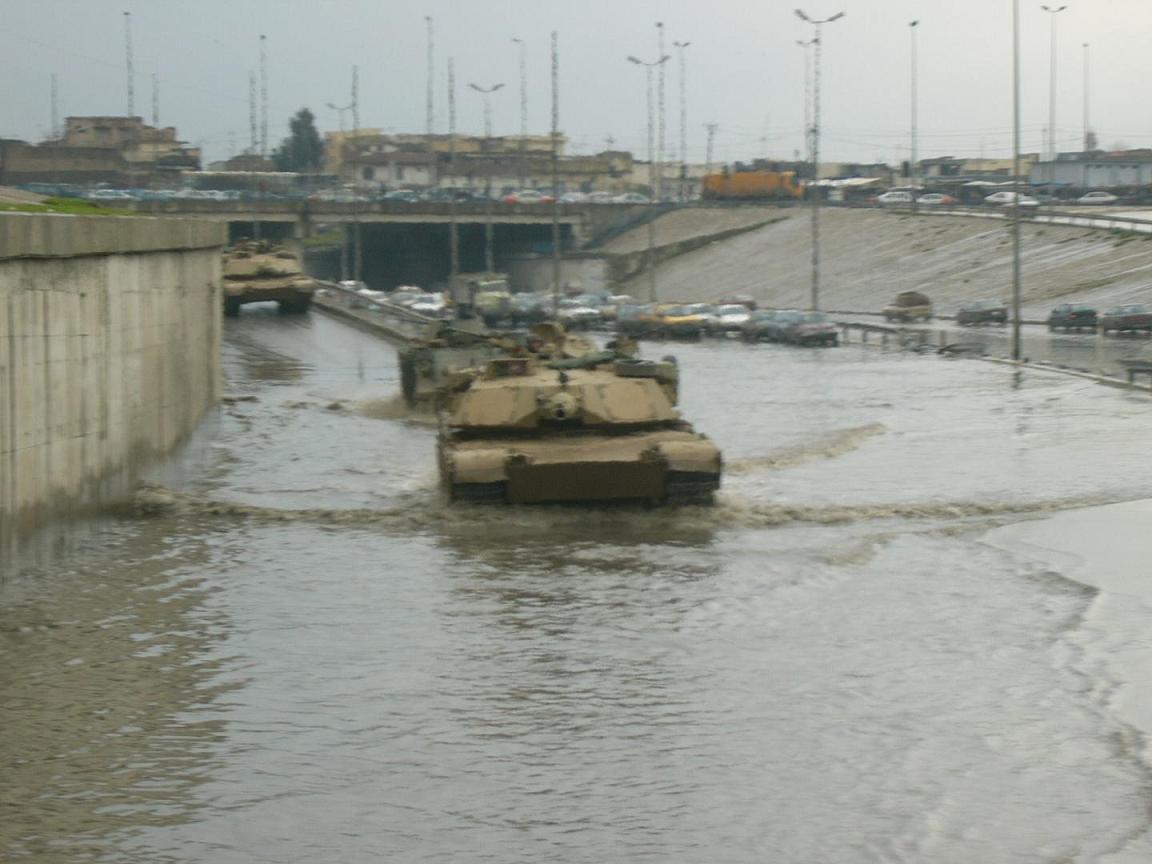
IF YOU ARE GOING TO "TURN THE OTHER CHEEK" YOU BETTER NOT HAVE A "GLASS JAW"!
While the image of a "tank" intimidates, its far more important that its actual increased protection be used than its perception of strength. We need to ask ourselves if appeasing the Iraqis that are offended by "tanks" is more important than offering our enemy easy casualties in vulnerable wheeled trucks which show our weakness and inability to defend the Iraqi people?
The 3rd Infantry Division (Mechanized) and Special Forces Soldiers say M113 Gavins with infantry facing out from top troop hatches behind gunshields are best for non-linear, urban combats. 3rd ID lessons learned from the nation-state conflict, from Chapter 7 at:
www.globalsecurity.org/military/library/report/2004/onpoint
"As the Army fields Stryker Brigades and continues transformation, the OIF experience will influence combat development. Tanks and Bradleys performed brilliantly in OIF, but they did not meet all of the operational requirements. Despite their advantages in armor, tanks and Bradleys evinced a number of disadvantages --they could not elevate their weapons far enough to fire at the upper floors of buildings from close range. But as 3rd ID discovered, the lowly M113, full of engineers armed to the teeth, could engage the second and third stories. Clearly no weapon system is perfect for all environments, and even the superbly equipped forces that fought OIF have..."
An Army Special Forces Soldier in Iraq NOW during the sub-national conflict writes:
"You betcha. Brads are great for rolling around like a turtle and knowing nothing can touch you, but the problem with the insurgents here is that every time they take a shot at you and no one shoots back, they get bolder.
Now, take my boys in 91st engineers. We roll around with a gun in the tub, the back top open and guys hanging out with ARs and optics.
Go ahead, step out from behind that building against riflemen who are excellent snap shooters.....and can engage 360 degrees and up and down almost 180 degrees.....pretty much wherever they can point the rifle.
In a M113, this is almost everywhere.
Just my firsthand experience day after day in Gazalea and Abu Graib.
XXXX"
3. There are at least Two basic factions in Iraq, those who are undecided and those who ooppose the U.S..
GROUP A Fence-Sitters: Might become pro-American if persuaded
We are in a Vietnam-style situation in Iraq, where we have different groups of people we are trying to tailor/cater our actions to. There may be a group of Iraqis who see tracked vehicles and are offended/intimidated by them. I don't think so, I think those that are offended are offended because of who we are and we are occupying their country--not the vehicle type we use. But let's say there are Iraqis who will be won over to our side if we use rubber-tired trucks. OK?
GROUP B Rebels: Anti-American no matter what vehicles we use
Its also certain there is definately a violent group separate from the ones who will appreciate our "softer image" (Group A) who are going to exploit our driving in rubber-tired trucks and blow us up to kill us, hoping our casualty toll will make us pull out of Iraq.

NEW REPORT! Army troops-in-trucks in Iraq is medically unsafe and unsound
Do we win 4GW when enemy easily toasts our HMMWVs?
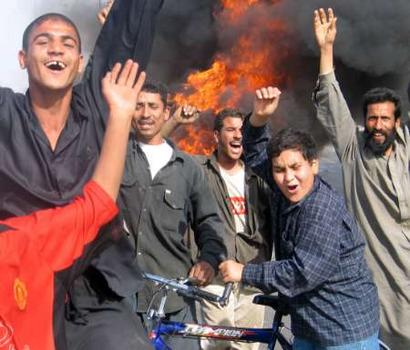
http://story.news.yahoo.com/news?g=events/iraq/082701iraqplane&a=&tmpl=sl&ns=&l=1&e=81&a=&t=&prev=80
Iraqi youths celebrate after a U.S. Army Humvee vehicle was set ablaze following a shootout between American forces and guerrillas in the restive town of Falluja March 25, 2004. There were no reported injuries in the firefight. REUTERS/Mohammed Khodor
If Group A sees Group B easily killing and wounding us, they will not likely see us as being able to PROTECT them since we cannot even defend ourselves.
Report from Iraq:
www.latimes.com/news/printedition/asection/la-fg-debate18apr18,1,2904597.story?coll=la-news-a_section
Marines Cultivate Iraqi Sources, but Reap Little
U.S. forces and a local couple hoped each could help the other. But the latter feared retribution
FALLOUJA, Iraq It was a roadside debate involving an Iraqi couple and four marines.
It won't merit a footnote in the history of U.S. forces' struggle with the insurgents who hold much of this city in their grip. But their interaction clearly demonstrated the difficulties marines are having in persuading Iraqis to help them.
"He's not working out like I thought he would," said Lt. Michael Scott, 26, of Boston, his voice redolent of disappointment.
The story began early Friday morning, when an Iraqi man, followed dutifully by his wife, approached Scott for help crossing marine checkpoints that were restricting the flow of traffic into Fallouja.
The 50ish man said he needed to drive his pickup truck into town to help relatives and bring back food to his family in the farming village of Saqlawiya. He smiled and gave the impression he wanted to help the Americans, if they would help him.
Scott agreed and hastily scribbled a note allowing the man to pass through the checkpoints. Scott hoped that in return, the man would provide information about insurgents hiding in the countryside and smuggling weapons and fighters into the city.
Each day, the U.S. launches unmanned surveillance planes to gather information on the movements of insurgents. Telephone calls are intercepted. Leaflets and public announcements beseech Iraqis to provide information.
But that is not enough.
"Until you get some human intelligence, you really can't get anywhere" in stopping the insurgents, Scott said.
Once the man and his wife had entered the city in their battered, bullet-pocked 1985 pickup truck, Scott returned to the marine outpost here. Hoping to ingratiate himself with the couple and their relatives, he gathered a large quantity of food and, organizing a convoy, headed toward the couple's home deep in the farm belt that encircles much of Fallouja.
The foliage on the rutted roads is thick, and the possibility of ambush is ever present. The marines have nicknamed the region "the Vietnam area."
Scott's convoy arrived in late afternoon, before the couple returned home, and began dispensing food to at least three dozen children and several adults: bags of rice, candy, biscuits, a tub of onions, canned goods, an enormous sack of sunflower seeds, potatoes and more. The children tussled happily for the candy as marines threw handfuls into the air.
But one of the adults, speaking to a marine interpreter, pleaded with them to leave, lest opponents of the occupation learn of their visit and take retribution.
A young girl began crying and flailing her arms. The marines left.
Then a call came through on the radio: The man and his wife, while on their way home, had been wounded in an attack several miles away. Their truck had also been shot up and, despite their injuries, they were trying to walk back to the village before the nightly curfew.
Both had been hit by shrapnel, the woman in her arms, the man in his back. Blood soaked his white garments. Both had been treated by Navy medics.
Scott rerouted his convoy to the site and greeted the man. His wife was weeping and shaking her head. The man was distraught. He said that he had been hit by American fire and that his truck, which he needed to support his seven daughters and three sons, was ruined.
Scott and the other marines struggled to explain through an interpreter that the shrapnel must have come from an insurgent's mortar round. The effort failed.
"He's got it stuck in his head that if he gets shot, it has to be an American," one marine said.
Scott offered to replace the truck with one that had been confiscated from insurgents. The man refused. To take a truck from the marines would mark him as a friend of the Americans, and he and his family could be killed, he said.
The man, however, wanted his truck towed to his farm. But the marines said they could not do so because it had been abandoned in an area thick with insurgents.
The man said he would instead accept money and quoted a price in dinars that translated into upwards of $5,000. Too much, Scott and the others said.
Scott, however, sought to bargain, telling the man that the marines wanted to help him but had to be helped in return.
The man shook his head, his eyes misting. He showed them his mangled foot, an injury he had received long ago while serving in the Iraqi army.
"I don't want to help either side, the U.S. or the others; both will shoot me," the man said.
As his wife's sobs grew louder, the debate continued in a circular fashion: money, truck, responsibility. Scott persisted in trying to enlist his support. Warplanes buzzed overhead.
"Tell him that unless he and his neighbors work with us, we cannot make progress for Iraq," Scott said.
The response was immediate and needed no translation: No, no, no.
In the end, nothing was resolved. The man and his wife accepted a ride toward their village: close enough to walk home but far away enough that neighbors would not see them accepting even that amount of aid from the Americans.
Some say gain the trust of the Group As and expand group so there are less Group Bs. I agree with this, except we will not expand Group A if we let Group B short-circuit everything by easily blowing us up and demonstrating our weakness and inability to keep the peace. The process of Group As becoming Group Bs is an issue, but we have to accept the reality that a lot of Group Bs already exist separately from the Group As.
Some think using tanks short-circuits the expansion of Group A by offending them with a too war-like appearance.
Others think not using tanks short-circuits the expansion of Group A by allowing Group B easy targets to demonstrate we cannot protect them.
This is the essence of the dilemma: how can the nation-state maintain "order" if its Soldiers are getting blown up?
www.d-n-i.net/fcs/lind_3_10_04.htm
Why They Throw RocksBy William S. Lind
Last week, suicide car bombings left around 200 Shiite pilgrims dead and scores more wounded in Iraq. How did the locals respond?; By blaming the Americans. U.S. troops, including medics who were trying to help the wounded, found themselves attacked by stone-throwing mobs. Similarly, in Haiti, when gunmen opened up on a demonstration by Aristide opponents, the locals blamed American marines for the casualties.
What gives? Neither the American Soldiers and marines on the spot nor American citizens at home can understand why we get blamed when Iraqis or Haitians kill each other. After all, we didn't do it.
The answer gets at what the state is all about, or should be all about,and why the state is failing in so many parts of the world: order.
As Martin van Creveld writes in his important book, The Rise and Decline of the State, the state arose, in Europe starting in the 15th century, to bring order. Not freedom, not capitalism, certainly not democracy, but order. Between the decline of the High Middle Ages and the rise of the state, Europe was plagued by disorder, often in the form of roving bands of armed men looking for employment as Soldiers. Being skilled in the use of arms and semi-organized (and not having much to lose anyway), if they saw something they wanted, they took it. That meant not only money but the food a family had stored to get it through the winter, along with their warm house; women; boys and young men, to fill up their ranks; horses and other livestock; in short, anything. What they did not steal they destroyed, just for the fun of it. And seeing how long they could keep someone alive under torture often provided an evening's entertainment. Life was Hobbesian - nasty, brutish and short - for anyone without a castle.
The state promised to restore order, and in time it did. As the state spread throughout the world, usually in the form of European colonialism, it made that same promise good beyond Europe. While the state added qualities beyond order as it developed, its legitimacy still depended on upholding its first promise, maintaining order. And it still does so depend.
That is why, in countries such as Iraq and Haiti, the locals blame us when order breaks down. As the occupying power, we are responsible for maintaining order. That is true under international law as well as in the eyes of the local people. We are the state now in those places, and when order breaks down, we - the state - have failed.
Why do we fail? Any battalion commander in Iraq can easily answerthat question. We have far too few troops to do the job. We do not have, and for the most cannot get, effective human intelligence. We do not understand the local culture. "Force protection" keeps us isolated from the local population, and effective policing, which is what keeping order requires, demands integration with the people. As a state military, we are designed to fight other forces like ourselves. Our own rules of engagement keep us from simply hosing crowds with machine-gun fire, and when that happens anyway, it just creates more enemies. There is also the legitimacy problem: because we are a foreign occupier, many locals who want order nonetheless feel compelled to resist us.
But these local answers do not address the whole problem. It is not only "over there" where the state no longer brings order. In developed countries, including Britain and the United States, the state has also broken its contract. It no longer effectively provides order on its home soil. In Britain as in the United States, one of the fastest-growing industries is private security. Gated communities are the new castles. My own office on Capitol Hill in Washington, D.C., is in an area plagued by high levels of crime. The city that wants to rule the world cannot maintain order one thousand yards from the U.S. Capitol Building after nightfall.
The state's growing inability to maintain order, in Baghdad or in Washington, is a primary cause of its intensifying crisis of legitimacy. The remedy is not to be found in new techniques for our troops to use in Iraq or Haiti [BILL LIND IS WRONG HERE], or for police to use here at home. In the end, it requires not just new people at the head of the state, but a different kind of people, people who genuinely see themselves as servants of the state, not as racketeers gratifying their own vast egos and enriching themselves, their families and their supporters. That, unfortunately, is a tall order, in Haiti, in Iraq or in Washington.
4. Functional Realities
We're not convinced having troops LIVE 24/7/365 with the Iraqis will make them like us (USMC CAP philosophy). I would think it would make them hate us even more. But if I had to trade distance for closeness, I'd want to have a light track to fall back onto than a wheeled truck.
So what functionally is objectionable to the troops having a thick box on tracks with rubber pads instead of a thin box on air-filled rubber tires?
5. The TechnoTactical Problem in Iraq: at the Soldier-level
The guerrillas attacking our men in Iraq live there. They can intrude into homes and use buildings for ambush cover and concealment.
Americans are trying to create a condition of open-ness where its safe to move OVERTLY, to walk down a street safely without fear.
Light infantry, a man with a weapon in his hand, equipment on his body---can move very paranoid from cover-to-cover IN TIME OF WAR. In war, you cannot afford to be caught in enemy fire as light infantry so you "hug" every scrap of concealment and cover you can find. You fire pre-emptively at suspected enemy positions to compensate again for your absolute requirement not to receive ANY enemy fire.
We are not in a war where all pretensions of normalcy are off and you act as paranoid as possible.
6. Weak Vehicles = "Spray 'n Pray"
We are in a stability and support operation (SASO).
This means we have to operate in the open so others can. The problem is we are using light infantry without light tracked AFVs or light infantry in thin trucks on rubber tires which from the get-go are 28% less space/weight efficient and thus protected than light tracks. Armored HMMWVs have 4 windows, 4 doors, a large windshield, and roll on air-filled rubber tires easily penetrated by enemy bullets, RPGs, explosions and god forbid, molotov cocktail flame weapons. When we move overtly using vulnerable trucks and the enemy ambushes us we cannot "shrug off" the enemy fire because it it becomes effective it riddles our bodies and soft-skin vehicles making dead and burning metal hulks. So we return fire in all directions using fire as a "shield" aka Somalia. As we kill innocent civilians we alienate them against the U.S. and make new enemies who want revenge for their father, mother, sisters and brothers killed in blind retaliation of somebody else's ambush (Group B). Group A people become Group B rebels.
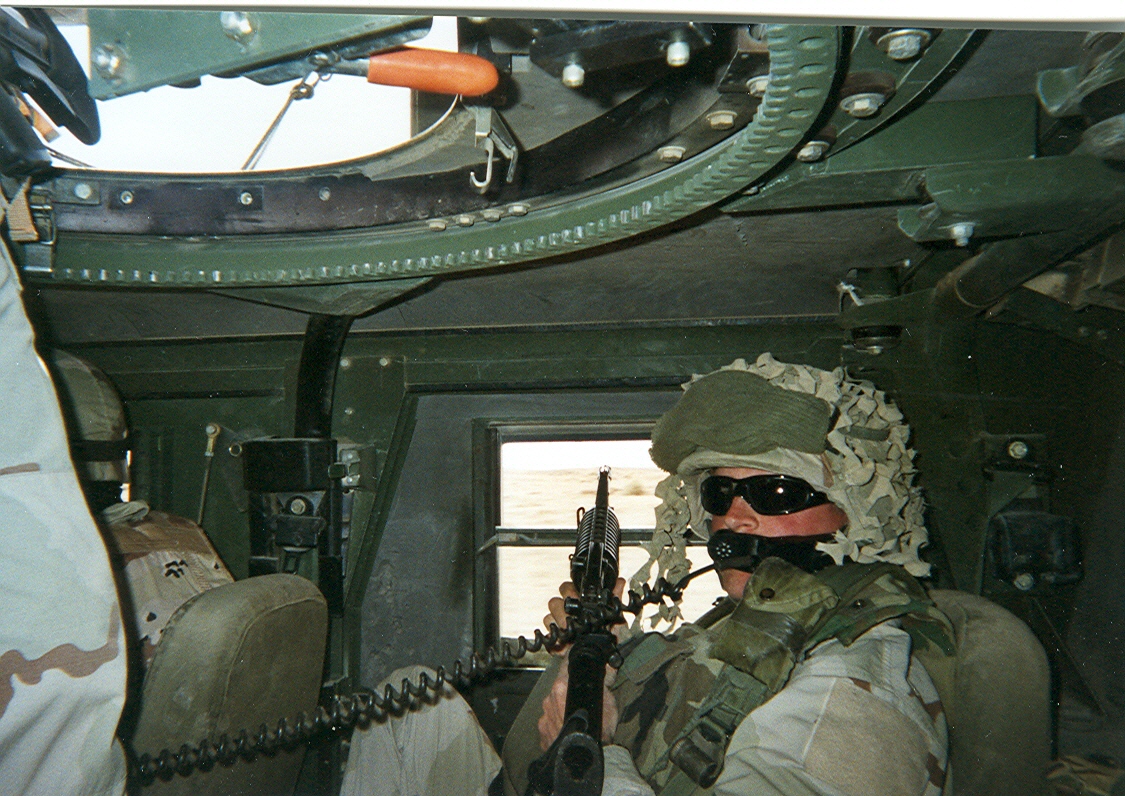
The above picture shows an Army Soldier trying to point through the window of an "up-armored" HMMWV a M4 5.56mm carbine. Even the shorter weapon doesn't enable the Soldier inside a HMMWV to hold his weapon to eye level to see and aim properly---at best its spray & pray!
This is again, why we need light tracked AFVs, so we can avoid having to use fire as indiscriminate 360 directional shields and focus our fires at positively identified bad guys. This is what I mean by our light infantry having a "glass jaw" when it is on foot and uses wheeled vehicles.
7. Better COIN Tactics
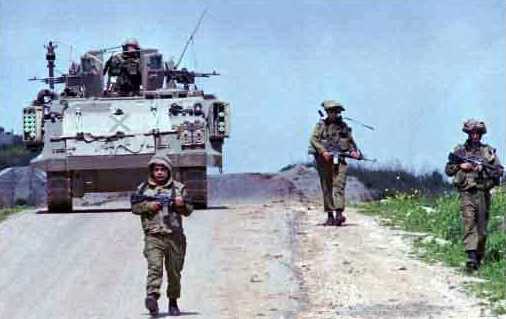
Troops are getting blown up IN CONVOYS FROM BASE CAMPS TO AND FROM THE PATROL AREA. Let's not confuse transportation with patrolling.
THE VEHICLE THEY SHOULD USE TO GET TO THE PATROL AREA SHOULD BE A WINDOWLESS TRACKED M113 GAVIN not a window and door vulnerable HMMWV rolling on air-filled rubber tires.
Once they are in the patrol area they dismount from their vehicles be it HMMWVs, go-carts, Strykers or M113 Gavins and interact on foot with locals.
There are COST and TIME factors. The Army does not have thousands of Bradleys. The Army DOES have thousands of M113 Gavins suited to this task that can be rapidly and inexpensively used at 3.5 mpg fuel rate for this task. The heavier Bradley has a 1 mpg fuel rate even if we had thousands available is too much of a cost. The more fuel our vehicles use, the more vulnerable convoys needed to refuel them. One M113 Gavin at 3.5 mpg beats two armored HMMWVs at roughly the same 5 mpg fuel rate.
We are also not convinced the BFV is better protected than M113 Gavin because its fuel tank is in the middle and the M113A3's fuel tanks are at the rear outsides. While the BFV hull is twice as thick as a Gavin, its loaded with ammo and fuel in a turret that can be easily set off in an explosion penetrating the hull. You can easily add outside racks to the Gavin and add beaucoup sandbags like the IDF does to get an absorbative layer for roadside bombs.
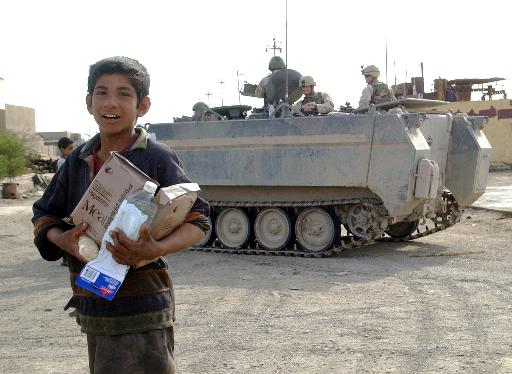
The fact that a unified hull armored vehicle does not have windows does not mean the people inside are blind. We are talking about the body of the vehicle not having any weak points that blasts can penetrate through. The troops in windowless armored vehicles ride WITH THEIR HEADS OUT FROM TOP HATCHES. If they are correctly equipped in M113 Gavins we have GUNSHIELDS (Strykers and Bradleys do not have these) that protect their face, necks, upper torsos as they look out from their vehicles AS THEY GO TO AND FROM THEIR BASE CAMP TO THEIR FOOT PATROL AREA.
Those are the horns of the dilemma upon which this discussion - and American policy - rest. So, the question is, which theory of the war should we follow. However, I think that our military history reflects a clear preference for the naive wheeled vehicle way which will increase the daily number of casualties beyong the current 540 dead and over 10,000 wounded. There is however, a very good way of doing basic COunter-INsurgency (COIN) tactics better by using light tracks and good tactics. However, we've never really tried - in good faith, across the board - this way, and what little historical evidence there is suggests that success is possible.
Think back to Somalia. Before the mission changed. We had made some good progress in settling things down, the Army and marines were respected because THEY WERE IN FORCE IN TRACKS, so they didn't have to bludgeon the people to achieve it. Here is where tracked "tank" intimidation" helped. I know one of the BN COs who served in Mogadishu then - they were making progress. Instead of going after Aideed, we ought to have figured a way to make him - or at least his tactics - irrelevant because the people didn't want that sort of life. Or not, and that would have been instructive as well.
We are literally strong enough when we are in tracked "tanks" that we don't always need to break things to prove it. Sometimes strength is proven in what we choose not to do, or the price we are willing to pay to do the things we choose. We have gone to Iraq to give them freedom - let's show them what freedom really tastes like. Here is a good place to start to get a sense of the theory of warfare I am working towards. I am not saying that I take his idea wholesale, but it is one component. Here is the link:
http://cgsc.leavenworth.army.mil/carl/resources/csi/trinquier/trinquier.asp#52
Our ideas are also supported by (in no particular order of relevance):
-Martin Van Crevald: "The Transformation of War" why we are in a 4th Generation War (4GW)
-marine corps "Small Wars" Manual
-Rifleman Dodd
-Various histories of the CAP
-USMC Evans Carlson: "Twins Stars of China"
-Various histories of the marine Raiders
-Mao: various
-Sun Tzu (attack the enemy where he is weak: where is the insurgent weak?
with the people, because he does not have their full support: "attack"
there)
-A Respectable Army: The Military Origins of the Republic, Martin and Lender
-Decisive Engagements, Westad
-Extensive research in Vietnam infantry and airmobile infantry memoirs
-The Army and Vietnam, Krepinevich
-A Viet Cong Memoir, Troung Nhu Tang
-Various histories of the Balkan Wars of the 1990s
-On Future War
-PREPARING FOR ASYMMETRY: AS SEEN THROUGH THE LENS OF JOINT VISION 2020, Melissa Applegate
Finally, I believe in time that the proper understanding of these events will be to reckon them as "The Insurgent Wars". That's what Al Qaeda and other "terrorist" organizations are, transnational insurgents. (I put terrorist in quotes because I would prefer to accord them more respect - their tactics are irregular, they are pushing the bounds of war, but in many respects they represent a legitimate political force.) I think we'll reduce the problem of terrorism far more if we consider the problem as insurgencies coming from various socio-political-economic forces and how do we deal with that. The "terrorist" actions will whither on the vine and become what we have here - crime. Mostly, our lives here are fairly secure - we have no real insurgents, the biggest problem of that sort is crime. And the media notwithstanding, most of us live a life free from it - that's why we're not backing anything politically radical. Bad, bad crime is a signal that you might have a larger political problem looming. It is proto or incipient insurgency, and below a certain point the police handle it, but it awaits that watershed event or critical mass of discontent to turn over to a fully fledged insurgency. That is, the problems lie in what causes the insurgency, what populates the "gangs" with new members - that is essentially what we need to do: reduce the flow of volunteers to the point that the organizations are irrelevant.
WHAT SHOULD THE U.S. ARMY DO NOW TO PREVAIL ON THE NLB?
We urge the active Army to immediately prepare 250 M113A2 Gavins from storage and weld/bolt external storage racks as Army Combat Engineers did for the war phase, paint them tan and send with a mobile training team to Iraq to replace 500 HMMWV trucks that would be parked and not used to transport personnel.

The National Guard on the other hand, has two Heavy Brigades going to Iraq, that OWN OVER 235, mostly modernized M113A3 Gavin-type light tracked AFVs that are modernized combat-ready NOW and should stand up and act like adult men not wimpy wannabes; and have these life-saving vehicles sent to Iraq. If the NG is not willing to think for itself and act like adult, non-weak, co-dependant men to protect its own troops; then it truly deserves to be looked down on as 3rd string, second-class Soldiers. The NG had a chance to field the first Airborne units in 1940 and chickened out; so going along with the active army wheeled bullshit would be going along with its loser tradition. In the '80s when the active Army went with mega heavy armored vehicles, the NG jumped like Pavlovian lap-dogs. Now in the 2000s, the pendulum of knee-jerk reaction to a lack of professional understanding of the modern battlefield has swung the other way; the active army now wants to play wannabe Delta Force "shooters" who are too "light" and the NG is foaming at the mouth to get several thousand "up-armored HMMWV trucks" when if it were smart and had some male testosterone would have used its M113 Gavin light tracked AFVs as air-delivered contingency forces back in the '90s and beat the active army to the punch for a change and lead the way instead of being dismal loser, followers. The NG could have shown the active army how to "transform" in a matter of weaks with greater capabilities at lower costs. But no, that would require LEADing----actually blazing a new path and standing on the feet of your own understanding---its too easy to follow the active army and hang by its apron strings, drinking from the taxpayer's watering hole.

Congress should submit emergency supplemental budget legislation to up-armor and up-engine another 250 M113A2s into either M113A3s with bigger diesel engines or M113A4s with hybrid-electric drives/band-tracks, both would have off-the-shelf, combat proven RPG spaced armor, underbelly armor, and gunshields to stand up from the vehicle and maintain 360 degree vigilance. The Army program to make M1068 Command Post and FIST-V M113s into hybrid-electric drive is already underway...all we are saying is expand this effort to 250 baseline M113 troop-carriers to create the world's first stealthy AFV force for on-going Iraq/Afghanistan combat. See APPENDIX B for details. HE M113A4 Gavins have an added benefit of driver and Track Commander (TC) placed farther back in vehicle center away from a blast if a track runs over a landmine. A "V" shaped inner wall could be placed around the driver/TC to add further inner-bulkhead armor protection. Costs to upgrade 500 M113 Gavins to overmatching protection/mobility capabilities against the threat are significantly less than the current inadequate HMMWV armoring plan.
If Army officials do not act in the above way to save the lives of their own Soldiers then Congress should hold public hearings into why the U.S. Army refuses to protect its men in Iraq/Afghanistan with the many M113 Gavin light tracked AFVs it has and persists on wasting taxpayer money while losing American lives and limbs on make-shift wheeled vehicle alterations that they know don't work now and will increasingly fail as the enemy adapts.
APPENDIX A
NOTE: "Soldiers" has been capitalized in honor of our troops in accordance with the Army Chief of Staff, General Peter Schoomaker's direction for all Army correspondence.
[REDACTED: WE CANNOT SHARE ON WWW. IF YOU ARE U.S. ARMY EMAIL US itsg@hotmail IF YOU WANT THE ARMY MESSAGE]
APPENDIX B
Cost to to add underbelly and RPG protection to M113 Gavin is small; less than $78,000. Much of this add-on armor is already in the supply system.
M113 Gavin RPG resistant applique' armor
Rafael has Passive and Reactive armor for the M113
www.rafael.co.il/web/rafnew/products/land-armour-p.htm
www.rafael.co.il/web/rafnew/products/land-armour-r.htm
From TACOM M113 Data Book: M113 Gavin underbelly armor
Belly Armor Kit / Cage No. 80212, P/N 4240277
Chapter III: Growth of U.S. Armored Forces in Vietnam
www.army.mil/cmh-pg/books/Vietnam/mounted/chapter3.htm
"To reduce mine damage to M113's, "belly armor" kits arrived in 1969. When this supplemental armor was applied to M113's and Sheridans, it protected them from mine blast rupture, saved many lives, and gave the crews added confidence"
M113 Gavin Gunshields
NSNs Track Commander's Cupola Shield Kit, Machine Gun / 2510-00-121-8990 Shield, Protective / 2510-01-006-4587
TC's cupola gunshields + side gunshields for the two troop hatch MGs
The NSN number for the complete Gun Shield Kit including the cargo hatch side shields is NSN 2590-00-121-8990. AMDF price is $11,708.00. Check the Army supply system for availability(?) If the "system" doesn't have the shields (likely) the DSC bids for someone to make them like they did in 1999:
25 - SOL:SHIELD KIT, MACHINE GUN (10/29/99)
http://www.fbodaily.com/cbd/archive/1999/10(October)/29-Oct-1999/25sol001.htm
COMMERCE BUSINESS DAILY ISSUE OF OCTOBER 29,1999 PSA#2465 Defense Supply Center Columbus, PO Box 16595, DSCC-PBAB, Columbus, OH 43216-6595 25 -- SHIELD KIT, MACHINE GUN SOL SP075000R2737 DUE 121799 POC For Information Only, Point of Contact -- Carol Black Phone:614-692-1346 Fax: 614-692-1577 NSN: 2590-00-121-8990, YPC99201000244. Shield Kit, Machine Gun. Made in accordance with Army drawing 11660854 and all current related data. Full and open competition applies. Quantity is 52 each to be delivered within 150 days after date of award to Richmond, Va. All responsible sources may submit an offer which shall be considered. See note(s) 12 and 26. Copies of this solicitation are available at the address above or by faxing 614-692-2262 or e-mailing: incoord @ dscc.dla.mil and will not be available until 15 days after this notice is published in the CBD. Requests should include the company name, address and solicitation number(s). The small business size standard is 750 employees. Technical drawings/bid sets are available from DSCC-VTCD via one of the following medias: internet at http://abiweb.disc.dla.mil; facsimile at 614-692-2344; e-mail at drawings @ dscc.dla.mil or by mail at Defense Supply Center Columbus, ATTN: DSCC-VTCD, P O Box 3990, Columbus, OH. 43216-5000. Requests should include theRFP number, opening/closing date, NSN, Purchase Request number (e.g. YPC), Buyer's name and your complete name and address. FEDERAL, MILITARY AND COMMERCIAL SPECIFICATIONS CANNOT BE PROVIDED BY DSCC. Proposed procurement contains a 100% option for increase quantities. This is an unrestricted acquisition. While price may be a significant factor in the evaluation of offers, the final award decision will be based upon a combination of price, delivery, past performance and other evaluation factors as described in the solicitation. Estimated issue date is 18 Nov 99. Posted 10/27/99 (W-SN395719). (0300) Loren Data Corp. http://www.ld.com (SYN# 0194 19991029\25-0001.SOL) ------------------------------------------------------------------------------- 25 - Vehicular Equipment Components Index Page However if you don't want to waste months playing with DSC because your men are getting shot at in places like Iraq/Afghanistan, United Defense, the maker of the M113 Gavin can deliver 44 kits in 20-22 weeks. Their price would be around $8,000 per kit, saving you about 4K per kit. Understand that cost does not come into play when we are talking about the safety of our troops but $176,000 buys a hell of a lot of beans and bullets...or better yet more gunshields!
POC: Mr. Tom Reuter
United Defense
M113 Field Service & Spares
(800) 235-0015 Ext: 825
cell @ 256-453-7049
M113s are simple to operate and maintain. You could train a Soldier in a week quite well. You don't have 1 DA or civilian contractor per company running around like in SBCTs. The class IX is already in our supply system. The M113 is a multi-purpose vehicle: CSS, INF, ENG, MED. If you want to understand urban ops with a permissive and non-permissive environment blurring, and how to operate in it, look at Israel which operates thousands of up-armored M113s and doesn't lose a man a day in combat operations like we are in Iraq. Things Israelis know:
a. Tracked "Tanks rule"!
b. Tanks rule only when working well with infantry
c. Helicopters are great killers: but fly high, fly irregular patterns to avoid shoot-downs. The Longbow is great for precision interdiction. Paint them light tan or gray so they are harder to detect, track and hit during the day time.
d. HUMINT and Civil Affairs "Hearts 'n Minds" are decisive.
e. Snipers are far more crucial than home station training, manning, employment lend them to be
f. Muslim culture: if it looks bad ass- it is bad ass! Current enemy thinking: "Attack it if it has wheels, if it has tracks, leave it alone, it will shoot back and kill you"
g. That ugly, primitive, simple tracked IDF M113 still is ubiquitious and highly successful: it's heavily armored, it dismounts SOF and infantry, engineers to achieve decisive effects
Are we willing to lose more men than the Beirut barracks to IEDs and RPGs because our leaders are too worried about careers or the funding of Stryker to ask the hard questions of a caring Combat Commander: Why can't I have M113s? They are sitting in storage awaiting a use. Would we rather have me and my men die than weld or strap plates to the side of my HMMWV or wait for expensive and inadequate kits? A Ford Explorer SUV has better armor!
SSG Paul Johnson, 1-505 was KIA in Iraq from an IED.
He didn't die right away.
He died after a few minutes from burns. His HMMWV was blasted and burned. An up-armored M113 would have kept rolling and he'd be alive today.
APPENDIX C
IRAQI CONVOY ESCORT/SECURITY AND IMMEDIATE ARMY TRANSFORMATION DISCUSSION PAPER
By the Iraqi Lessons Learned Study Group (ILL-SG)
SUBJECT: Suitability of the M113A3 Gavin tracked Armored Personnel Carrier for convoy duty in Iraq, with comparisons to the High Mobility Multi-purpose Wheeled Vehicle (HMMWV) wheeled, truck.
The M113 Gavin Family of Vehicles (FOV) is a multi-variant tracked vehicle that has been used by the U.S. Army in one form or another for 43 years. This combat-proven vehicle has a thick hardened aluminum alloy armored hull for troop survivability, and can be fitted with a variety of weapons systems to take the fight to the enemy. It is the most numerous (over 14,600 in service), and cost efficient combat vehicle in the Army's inventory. The M113 Gavin FOV is fully C-130 Hercules transportable (all variants) and is parachute air-droppable - even at its maximum combat weight. C-17 Globemaster can carry 5 x M113 Gavins per sortie without compromising air safety giving forces can fly and be airlanded in a single sortie giving Soldiers an instant combat multiplier in a few small period of time . Because of its light weight CH-47D/F Chinook and larger helicopters can sling-load M113 Gavins short distances for Air Assault force reinforcement.
The latest generations of the M113 are the A3/4 are far different than the under-powered A2 model most of the leadership in the Army today are familiar with. Although the conversion of the M113A2 to the M113A3 Gavin configuration has been ongoing for 16 years, production rates have been low (about one per day), and today 54% of the Army continues to use the M113A2. The differences in these two configurations is staggering, as the M113A3 Gavin has been up-powered and is now faster than the M2/3 Bradley and has the speed, power and reliability to keep up with M1 Abrams tank. The hybrid-electric drive "M113A4" Gavin has instant acceleration and out-speeds the both the Abrams and Bradley. The up-engined M113A3 Gavin has:
*GUNSHIELDS
1. The NSN number for the complete Gun Shield Kit including the cargo hatch side shields. 2590-00-121-8990. AMDF is $11,708.00. Check the supply system for availability? If its not DSC puts out a bid like they did in 1999:
www.fbodaily.com/cbd/archive/1999/10(October)/29-Oct-1999/25sol001.htm
COMMERCE BUSINESS DAILY ISSUE OF OCTOBER 29,1999 PSA#2465
Defense Supply Center Columbus, PO Box 16595, DSCC-PBAB, Columbus, OH 43216-6595
25 -- SHIELD KIT, MACHINE GUN SOL SP075000R2737 DUE 121799 POC For Information Only, Point of Contact -- Carol Black Phone:614-692-1346 Fax: 614-692-1577 NSN: 2590-00-121-8990, YPC99201000244. Shield Kit, Machine Gun. Made in accordance with Army drawing 11660854 and all current related data. Full and open competition applies. Quantity is 52 each to be delivered within 150 days after date of award to Richmond, Va. All responsible sources may submit an offer which shall be considered. See note(s) 12 and 26. Copies of this solicitation are available at the address above or by faxing 614-692-2262 or e-mailing: incoord @ dscc.dla.mil and will not be available until 15 days after this notice is published in the CBD. Requests should include the company name, address and solicitation number(s). The small business size standard is 750 employees. Technical drawings/bid sets are available from DSCC-VTCD via one of the following medias: internet at http://abiweb.disc.dla.mil; facsimile at 614-692-2344; e-mail at drawings @ dscc.dla.mil or by mail at Defense Supply Center Columbus, ATTN: DSCC-VTCD, P O Box 3990, Columbus, OH. 43216-5000. Requests should include the RFP number, opening/closing date, NSN, Purchase Request number (e.g. YPC), Buyer's name and your complete name and address. FEDERAL, MILITARY AND COMMERCIAL SPECIFICATIONS CANNOT BE PROVIDED BY DSCC. Proposed procurement contains a 100% option for increase quantities. This is an unrestricted acquisition. While price may be a significant factor in the evaluation of offers, the final award decision will be based upon a combination of price, delivery, past performance and other evaluation factors as described in the solicitation. Estimated issue date is 18 Nov 99. Posted 10/27/99 (W-SN395719). (0300)
Loren Data Corp. http://www.ld.com (SYN# 0194 19991029\25-0001.SOL)
--------------------------------------------------------------------------------
25 - Vehicular Equipment Components Index Page
2. However, United Defense can deliver 44 kits in 20-22 weeks. Our price would be around $8,000.00 per kit, saving you about 4K per kit. Understand that cost does not come into play when we are talking about the safety of our troops but $176,000.00 buys a hell of a lot of beans and bullets. POC:
Tom Reuter
United Defense
M113 Field Service Spares
800-235-0015 Ext: 825
cell @ 256-453-7049
The M113A3/4 Gavin is a far different vehicle than the M113A2 used by the Army's current leadership in their formative years as junior officers. Most have no experience with the modern M113A3 Gavin since the current configuration first became available in 1999. Because the M113 was used during the Cold War, it is assumed that the M113 is an antiquated "Cold War" legacy system, but in fact it is the most cost efficient and effective space under armor available of any Army combat vehicle. Over the years more than 40 U.S. variants have been designed for this reason, and our Allies have designed others. The M113A3 Gavin represents proven advanced technologies and represent some of the further up-grades that are available. This proven system, such as the hybrid-electric (HE) drives would double a "M113A4" Gavin's range to 600 miles, enable silent stealthy, silent operation mode, and creating objective force "Future Combat System" (FCS) capabilities today at very low-costs.
The failure of early-model wheeled LAV's (also currently used by the U.S. Marine Corps) in East Timor has prompted the Australian Army to upgrade its 500 tracked M113 Gavins to the A3 configuration extending their expected usable life for another 30 years and enable them to successful defeat all expected threats and perform in any climate or condition that future rapid deployment missions present. Details:
It's back to the future as Army unveils revamped vehicle by Mark Forbes, Defence Correspondent Canberra, November 20, 2003
The U.S. Army can and should follow common-sense Australian and Israeli Army precedents to transform the entire force not just be content to tinker with a handful of expensive and failed wheeled armored car brigades and wait 5-10 years for a costly and likely unaffordable FCS vehicle to be developed.
A valid comparison of the M113A3/4 Gavin and HMMWV for convoy escort duty must include multiple characteristics, any of which could be a deciding factor in whether the Soldiers inside can survive when ambushed. Examples of these characteristics are:
|
M113A3/A4 Gavin |
CHARACTERISTIC |
HMMWV |
|
SPEED |
||
|
The M113A3 Gavin's governed speed is 45 miles per hour. Speed can be increased through use of lighter 'band track'. 55 mph is possible. |
The HMMWV's speed is 60 miles per hour. |
|
|
STEALTH |
||
|
The M113A3 Gavin's armored hull shields and silences its diesel engine; with steel tracks with rubber pads is as quiet as HMMWV; if fitted with band tracks is extremely quiet and more stealthy than HMMWV. M113A4 Hybrid-Electric with band tracks is quietest combat vehicle in the world. |
The HMMWV engines makes a loud and distinctive rattling sound heard from 200-300 meters effective small arms fire range. |
|
|
OFF-ROAD MOBILITY |
||
|
As a tracked system, the M113 has far better mobility off-road than any wheeled vehicle. It allows the M113A3 Gavin crew to escape ambushes by getting off the roads despite the conditions. This capability also allows crews to select routes other than road networks, and flank the ambush. |
|
The HMMWV, except in certain circumstances, is road-bound, which makes ambushing the vehicle easier to plan. Areas where off-road maneuverability is suspect are especially attractive ambush sites. |
|
MOBILITY "KILL" |
||
|
Gunfire to the suspension system of an M113A3 Gavin is ineffective, and with its underbelly mine kit the vehicle can withstand up to 22 lbs of TNT. Anti-personnel mines are ineffective against the M113A3 Gavin. |
HMMWV tires are exposed to and destroyed by gunfire, antipersonnel mines, and anti-tank mines. The HMMWV can only operate for 30 miles with two tires completely flat as long as the tires are on different axles. |
|
|
RPG PROTECTION |
||
|
As-is M113A2/3 Gavins can be penetrated, but casualties are restricted to those directly in line with the plasma jet. Steel tracks and metal road wheels and hung troop gear on sides via storage racks pre-detonate RPGs. Spall liners inside vehicle sides on M113A3 GavinS. Defeats RPG spall. Gunshields for TC and troops firing out from top-troop hatches available protect against small-arms fire, shrapnel and RPG explosive effects. Easy to add sandbags to interior and exterior to enhance protection without payload loss or over-stressing vehicle. RPG-resistant appliqué' armor packages are available. |
HMMWVs have no protection against the RPG. Not feasible to fit RPG-resistant applique' armors to HMMWVs; windows, doors and windshield, wheel and rubber tire undersides extremely vulnerable. Troops must ride with doors off to be able to return fire in 4-door HMMWV models but this is awkward at best resulting in reduced vigilance. Limited payload, suspension and engine power to accept sandbagging. |
|
|
TOP PROTECTION |
||
|
The M113A3 Gavin is protected against a 155mm airburst 15 feet above the vehicle and mortar fires. Gavins can button up before passing under over passes to negate effects of IED detonation. |
The HMMWV has a canvas top, up-armored HMMWVs have large open-ring turret gunner area and offers no protection from artillery, top-down rifle fire, coming from a rooftop in urban environments or IEDs detonated as vehicles pass under overpasses. |
|
|
FIREPOWER |
||
|
M113 Gavins come with 360 track commander's cupola that can fit all existing Army light, medium and heavy machine guns. Top troop hatch area can have gunshield-protected wing guns. M113 FOV can accept powered turrets with auto-cannons, missiles up to 105mm size ALL dismount Soldiers can stand up and fight through the top troop hatch rendering 360 firepower and situational awareness to pre-empt enemy ambushes by vigilance |
Soft-top HMMWVs have no means to mount weapons; troops must ride without doors to fire hand weapons, exposing them to enemy fire. M197 pedestal option feasible only on cargo bed variants and leaves gunner exposed. Hard-top HMMWVs only offer a single gunner in a 360 revolving turret the 4 Soldiers below still have to have doors removed or windows opened to fire back; this rarely occurs in up-armored HMMWVs resulting in 4 Soldiers taken out of the fight. |
|
|
NIGHT VISION/SENSORS |
||
|
The M113A3 Gavin has an AN/VVS-2 passive night vision device for the driver plus crew at the cargo hatch can wear night vision goggles. The M113A4 Gavin hybrid-electric offers a powerful bank of batteries to operate any night vision sensors indefinitely all night without having to start diesel engine to recharge batteries. |
The baseline HMMWV crew relies on night vision goggles. Must start engines to recharge batteries to keep any vehicle sensors operational all night, possibly giving position away to the enemy. |
|
|
SMOKE SYSTEM |
||
|
The M113A3 Gavin has a smoke grenade system, the purpose of which is to deploy an instant smokescreen to escape from ambush. |
The baseline HMMWV has no such system. |
|
|
TURNING RADIUS |
||
|
The M113A3 Gavin can pivot-turn on its own axis, and has a turning radius of 8.7 feet. |
The HMMWV has a turning radius of 25 feet, cannot stop in place and change direction in event of ambush. |
|
|
OBSTACLES |
||
|
The M113A3 Gavin has excellent capability to cross obstacles (such as stacked automobiles and concrete rubble seen in urban combat, or downed trees and rocks such as might be used in an ambush). It can cross a 66 inch gap and climb a 24 inch vertical wall. It will ford water obstacles 60 inches deep (deeper than that, it floats and can swim at 3.6mph). Upgrades exist to provide water jets and new bow section to enable ship-to-shore deployment from Army sealift ships without needs of friendly held ports. |
HMMWVs cannot drive through or over obstacles and barricaded cars. Some HMMWV can cross a 12 inch vertical wall and other models can cross an 18 inch wall. The HMMWV has no gap crossing specification. The HMMWV can cross through 30 inches of water if the bottom surface is hard. Application of a fording kit increases the depth traveled to 60 inches (with hard surface bottom). HMMWVs do not float and cannot swim. |
|
|
RANGE |
||
|
The M113A3 Gavin can travel 300 miles with a fuel load (@ 45 mph). Hybrid-Electric M113A4 could travel 600 miles on one tank of fuel. |
The HMMWV specification requires a range of 275 miles at 40 mph. |
|
|
SIDE SLOPE TRAVERSE |
||
|
The M113A3 Gavin traverses a 40% side slope. |
The HMMWV traverses a side slope of 30%. |
|
|
VERTICAL GRADE |
||
|
The M113A3 Gavin can surmount a 60% up slope. |
The HMMWV specification requires the HMMWV to ascend 40% slopes. |
|
|
DAMAGE TO ROADS |
||
|
M113A3 Gavin track grousers can damage roads if track pads are not maintained. Pads are designed specifically to prevent damage to roads, and are not needed for any other purpose. Use of rubber band tracks eliminates any road damage possibility |
The HMMWV does not damage roads. |
|
|
PAYLOAD |
||
|
7100 lbs 13 Soldiers |
1500-2200 lbs 4-seat variant: 4 Soldiers Troop carrier: 8 Soldiers |
The parameters above reveal that the HMMWV's main appeal for convoy escort is its slightly higher top speed. A comparison of the two vehicles using of the other fourteen parameters, especially those involving Soldier survivability, favor the M113A3 Gavin by a wide margin.
Notwithstanding the very high probability that other vehicles in the convoy may not be able to travel 60 mph (such as large trucks with heavy loads, towed vehicles, etc), there are advantages to higher speed. Some of them are reduced time in the "kill zone" of an ambush and the presentation of a harder target to hit.
On the other hand, speed has its own tactical drawbacks. As the Soldier drives faster his situational awareness is greatly reduced making vulnerable to enemy forces. Smart Soldiers are not fond of barreling down the road in enemy territory at top speed for the very reasons we are seeing now in Iraq:
The central lesson is that for a peacetime CONUS convoy operation the HMMWV is acceptable as long as no one is shooting at you. Currently U.S. Forces OCONUS are being forced to use the HMMWV and other wheeled vehicles inappropriately as a combat vehicles ( a use they were never intended for) and as a result our forces are experiencing unnecessary casualties and equipment loss during daily patrols in Iraq and Afghanistan. These vehicles are referred to as "RPG Magnets" by Soldiers in Iraq, because the weapon has such devastating effects on HMMWV and other trucks... and our Soldiers.
In addition to previously stated advantages, there are programmatic advantages to the M113A3 Gavin that rival the tactical ones. Less than half of the M113s in the Army have been upgraded to the A3 configuration, yet the Army intends to use them for 30 more years. There is no overhaul program of A2s or A3s. There is no retrofit program, and a vehicle per day is added to the Army's "Need to Overhaul" list because it meets the Government's criteria for overhaul. The M113 program has been inappropriately terminated, if for no other reason than there is no single Brigade-sized unit in the Army that has either all A2s or all A3s ... a condition that maximizes the logistical complexity in a deployment. If M113A3 Gavins were built for convoy duty, they could easily be provided to units with M113A2/3s after the need for convoy protection ended. There are other reasons:
There is no reason to employ HMMWVs in convoy or any other combat operations in Iraq, or anywhere else where combat is anticipated. The M113A3 Gavin is a much better choice from all angles; survivability of our Soldier must be the highest priority. Army leadership experience with the M113A2 needs updating to understand the capabilities of the tracked M113A3 Gavin, but frankly it has not been objective about the M113 in recent years due to wheeled vehicle hubris. Logic dictates that the M113A3 Gavins advantages be exploited, not suppressed, in the move to transform the entire U.S. Army for current combat operations.
M113 Gavin TRANSFORMATION BEGINNING IN IRAQ: FEASIBLE, AFFORDABLE NOW WITH CURRENT PERSONNEL AND OFF-THE-SHELF, NDI EQUIPMENTS
The Army has thousands of war-stock M113 Gavins, [See below where are the Army's unused M113 Gavins?] 44 could be converted to Engineer Cavalry "ECAV" war standards to immediately supply the Army's units now getting clobbered in Iraq. Heavy Engineers already know how to use M113-type AFVs. Costs to modify to ECAV standards would be in the $500,000 per vehicle price range that exceeds what would require two $250K up-armored HMMWVs. America's Army needs the M113 Gavin today in Iraq and future urban combats because it uniquely allows infantry to fight heads-out behind armor and gunshields for 360 degree awareness. The Army's Center for Lessons Learned reports after combat in Panama:
"The M113 proved to be an excellent vehicle in MOUT. Infantry firing from the open cargo hatch, in conjunction with the pintle-mounted .50-cal machinegun, were easily able to engage targets on roof tops and maintain 360-degree surveillance as they moved through the city. The M551 in support of light infantry was a very effective gun system. It provided direct fire support from overwatch positions and blew entry holes in buildings for infantry assaults. Both the M113 and the M551 were very useful at roadblocks and for firepower demonstrations."
---U.S. Army Center for Lessons Learned, Operation Just Cause, Combat Vehicles and Heavy/Light/SOF integration
http://call.army.mil/CALL/NEWSLTRS/90-9/9093c12.htm
http://call.army.mil/CALL/NEWSLTRS/90-9/9092ch1.htm
The central problem today is 40% of our Army has ZERO armored mobility. The other 60% still are surrounded by hordes of unarmored resupply and liaison trucks. All are getting creamed in Iraq. We fight on a non-linear battlefield where the enemy can attack anywhere and EVERYTHING has to be armored and tracked. We have thousands of M113 Gavins in storage to mechanize the entire Army at a very low cost, to include daily operations. The current wheeled truck Army must become a tracked Army. It can be done so that the transport of light infantry is done as needed by the Engineer Cavalry who own/operate the up-graded M113 Gavins or helicopter-internal transportable M973A2 Ridgways (NATO: Bv206S) in the case of the 101st Airborne (Air Assault) Division.
Everything you can do in a BFV, we can do better in an upgraded M113 Gavin. Plus we can parachute drop Gavins from C-130s, make them swim from ship-to-shore and they can fit the EXACT same 2-man BFV turret though we really need a 1-man 25mm turret aimed by helmet mounted sight when head is out. Details:
www.geocities.com/equipmentshop/m113combat.htm
How much would it cost to create an upgraded "M113A4" Gavin Infantry Urban Raid Route Security Vehicle (GI-URSV) with FCS capabilities now as in within the next 12 months? Starting with a 44 x vehicle ECAV Troop? I contacted UDLP on west coast and they need $176K for 44 x complete gunshield kits--that's gunshields for TC and two machine gunners. Simple math and Spinney's "Death Spiral".
CSA Gen Schoomaker's vision still has the light infantry lacking an armored mobility means which they can fight from while mounted and be employed to conduct precision urban raids. The 20-25 ton FCS is too heavy and will come too late to help us in the fight we are in in Iraq. At $10 million each FCS will be too costly to supply to the entire Army; a 300 vehicle Brigade would cost $3 BILLION each; CSA wants 48 mini-BDEs, 48 x 3 = $264 BILLION dollars! Even America can't afford this. Its likely FCS would only replace the M1/M2s in the force again, leaving the majority of the Army exposed on foot and in unarmored trucks.
COMPARE BRAND-NEW FCS TO M113A4 Gavin "FCS-NOW" MADE FROM EXISTING M113 Gavins
How much would it cost to create an upgraded "M113A4" Gavin Infantry Urban Raid Route Security Vehicle (GI-URSV) with FCS capabilities now as in within the next 12 months?
Current figures are $478,000 to create a "M113A4" FCS-Now.
M113A4 Gavin "FCS Now" Infantry Fighting Vehicle
1. Convert to hybrid-electric drive, stretch hull to MTVL standard $400,000
UDLP doesn't price these two items separately. A round number for the changing of an A2 or A3 to a stretched hybrid-electric is about $400K.
2. Better suspension system $ 0
Don't need this, because in the changeover to the MTVL, the final drive and roadarms are adjusted to provide greater road wheel travel, which is directly related to cross-country mobility. The MTVL will outrun the Bradley cross country.
3. Band tracks $20,000 in production quantity.
You can take off $13,000 from the cost of the hybrid-electric given above, because it included T-130 steel tracks with rubber pads.
4. RPG applique' armor all around (from Rafael) $60,000
I have heard $80,000, but UDLP is uneasy about this number. Since that is what UDLP-West is doing for the Stryker now, the stretch M113 will be about 70% of the cost of putting the armor on the Stryker (flatter surfaces and less area on the MTVL)
5. Underbelly armor (from government NSN) $3000
6. Tan infared/optical camouflage on-vehicle netting $4,000
7. 3-gunshield kit for Track Commander and 2 troop hatch wing machine gunners $ 4,000
TOTAL $ 478,000 per vehicle
NOTE:
8. FBCB2 C4I is already in M113 Gavins in 4th ID. Could be Government Furnished Equipment (GFE) for the digital RMA panacea and cum-by-ya the Tofflerians want so desperately. Since all this digital mental situational awareness hasn't panned out in Iraq the PHYSICAL situational awareness of troops fighting out behind gunshields and the PHYSICAL armor protection and mobility is more important.
COMPARE M113 Gavin FCS-NOW TO Stryker DEBACLE:
309 x Strykers = @$3 million each = $927 per SBDE
6 x SBDEs = $5.56 BILLION dollars
Only 5 BDEs out of 33 Army BDEs "changed" (for worse not better)
*1 SBDE is Pennsylvania ARNG to buy off Senator Santorum who initially opposed Canadian-made Stryker armored cars since the far superior M113 Gavins are made in York, PA
Current Army has 33 BDEs, 19 are "heavy" and 14 are "light".
To mechanize the light BDEs only requires 44 x armored vehicles in each battalion. There are 3 battalions in each BDE for a total of 132 total vehicles per BDE.
The heavy BDEs already have 50% of their vehicles as M113 Gavins, or about 200 per BDE.
14 Light BDEs x 132 M113A4 FCS Now Gavins = 1, 848 M113A4 FCS-Now Gavins
19 Heavy BDEs x 200 M113A4 FCS-Now Gavins = 3, 800 M113A4 FCS-Now Gavins
_____________________________
TOTAL: 5,648 x M113A4 FCS-Now Gavins
@$478, 000 each = $ 2.69 BILLION
In other words, for 1/2 the cost of a handful of impotent Stryker wheeled armored car BDEs, we could TRANSFORM THE ENTIRE U.S. ARMY IN A MATTER OF MONTHS TO SUPERIOR TRACKED FCS CAPABILITIES NOW. To include saving lives/limbs in Iraq and winning the war there with a stealthy hunter/killer infantry fighting vehicle.
For Airborne fixed-wing transport operations: a C-17 has the stall characteristics of the C-130 with the load approaching the C-5. While the C-130 can carry 1 combat-loaded Gavin ECAV and troops, the C-17 can carry 5 x M113 ECAVs. The C-130 can parachute airdrop 1 M113 ECAV and troops, the C-17 can airdrop 3 ECAVs.
For Air Assault rotary-wing transport operations: a CH-47D Chinook can carry 1 Gavin ECAV underneath plus crew. The profile of the Chinook and Blackhawk to an AA gunner and their respective rotor diameters are about the same, but the ability to internally carry a light tracked AFV like the Bv206S up-armored version of the M973A1 SUSV now in Army service dramatically improves helicopter en route speed and evasive flight profiles. We should use the smaller "M973A2" light tracked AFV instead of the M113 Gavin since it can be carried inside a CH-47 for the 101st's ECAV troops.
Light unit "D" companies become ECAV troops; TOW ITAS systems move to ECAV vehicles; gain 4 x M120mm mortars for 7 km indirect fire capability to pursue fleeing enemies.
Heavy unit "D" company scouts/mortars become ECAV troops; gain TOW ITAS ATGM systems for 10 km observation ranges.
ECAV Troops in both light and heavy units will be identical in TO& E force structure; except 101st Airborne (Air Assault) will employ a 2-7 ton ECAV vehicle. All others will employ a 10-15 ton ECAV vehicle.
Build ECAV troops immediately, 1st ECAV (Airborne) at Fort Benning, Georgia using volunteers from the 3rd ID, the 2nd ECAV (Air Assault) using volunteers from Fort Campbell, Kentucky or Fort Polk, La's 2nd ACR. Test/perfect both ECAV types (Airborne and Air Assault) at Ft Polk JRTC, then send to Iraq. Make-over the rest of the 2nd ACR's ground troops into these ECAV types to form the 2nd Engineer Cavalry Regiment to support the entire XVIII Airborne Contingency Corps.
ECAV Missions
1. Clear way of landmines, obstacles, civilian crowds and ambushes to include left/right road shoulders for rest of main body/convoys.
2. Assault and Anti-tank firepower via TOW ITAS ATGMs, .50 caliber and MK19 40mm grenade HMGs
3. Stealthily transport infantry companies and ambush patrols from Assembly area to Objective and back safely
4. Provide screening smoke as needed
5. Counter-sniper detection capability
6. Perform Airborne and Air Assault missions as required for XVIII Airborne Corps
Engineer Cavalry Troop Off-The-Shelf Technology
1. Scout dogs to detect command detonated mines/wires
2. Remote control decoy HMMWV trucks and M113 Gavin with dozer blade to push aside possible roadside bombs packed in abandoned cars/trucks so American humans remain at safe stand-off
3. FLIR thru eyepiece on helmets for:
* ECAV Track Commanders
* Dismount infantry
Hands-free night vision, comparison/contrast to detect command detonated mine wires and mines
4. Hybrid-Electric drive/band tracks for stealth to surprise Iraqis laying mines/ambushes
5. Gunshields on ECAVs to protect U.S. Soldiers during firefights so they can have upper hand; .50 caliber and MK19 40mm grenade HMGs already is use by U.S. personnel; side gunshields protect dismounting infantry when mounted to employ weapons and see enemy first, ACAV and IDF-style
6. RPG applique' armor
Spaced armor will truly defeat RPGs and a perhaps even a shock absorber for the cursed road-side "IEDs". These would be good external stowage compartments and ammo on the vehicle (like the M113A3's fuel tanks) should be stored here so if the jet of a HEAT round penetrates the ECAV it will explode the personnel-unfriendly stuff OUT AND AWAY like the M1's ammo storage. It also could help it float if not used for storage. All this greatly mitigates risk from HEAT warheads while keeping armor weight down.
7. Underbody anti-mine armor
8. .50 caliber sniper rifles with explosive rounds to explode suspected mines and roadside bombs from behind gunshields
9. Unmanned Ground Vehicle robot (towed in trailer behind ECAV) to investigate suspicious areas
10. Hand-launch Pointer stealthy, electric-powered UAV to look ahead and act as close-in "air cover"
11. Acoustical sniper detection system and look-outs with TOW ITAS and binoculars to deter snipers
12. Pepper spray smoke grenades and paint ball guns/sling-shots to disperse crowds with non-lethal force
13. Lightweight dozer blade to push aside enemy placing explosives in abandoned cars (expected tactic) and mine roller kits for lead ECAVs
14. MICLIC rocket launched line charge trailers to pre-detonate enemy daisy-chained multiple land mine ambushes
15. Radio frequency detonator gear to pre-detonate roadside bombs before convoys drive by; Bill Gertz and Rowan Scarborough from the Washington Times reports these are called Variable Frequency Oscillator (VFO) transmitters.
"What we did in high school was drive around the neighborhood with a VFO transmitter and many of the garage doors would flap open and closed as we moved along," said Bill Sweet, a ham operator in Michigan.
VFOs can be manually tuned up and down frequency bands and targeted at Iraq's remote-control bombs. "This procedure could set off bombs prematurely and even some as they were being built," Mr. Sweet tells us. "Digital VFO remote-control thwarting could be tried too, with a computer running random number combinations."
16. Remote sensors to seed the entire 350 km stretch of MSR for real-time, 24/7/365 coverage an electronic version of the French "Maurice Line" in Algeria, a concept successfully used by the IDF to stop border incursions
17. Barrier materials like Jersey road barriers to deflect IED blasts
18. Quick-drying asphalt type materials to deny road shoulders to enemy bombers
19. Windscreen the area parallel to the road, about 100 out. Wire up the enemy side with chain link fencing, concertina and barb. It won't be totally effective, but would it reduce detection time for the enemy.
20. Replace all trucks used by support units in Iraq with 500 x uparmored M113 Gavins from war stocks to perform convoy resupply operations. M113s towing a trailer is better off than unarmored trucks. For outsize cargo, a flat bed trailer may be the only option, but why expose a crew in a truck cab? Another advantage to using M113s as supply vehicles is the bad guys won't know whether it contains supplies or a squad of infantry. The ECAV gunshield/weapons configuration can triple the firepower of the convoy. Its easier for cover and deception missions with like-looking vehicles that don't reveal their contents and are all armored and armed.
The few remaining trucks in Iraq that cannot be replaced with M113s (wreckers, POL etc.) have to be sandbagged, metal plate hardened and armed; EVERY vehicle no exceptions.
ATTACHMENT A
M113A3 Gavin SURVIVABILITY
|
CONFIGURATION |
PROTECTION |
WEIGHT (POUNDS) |
COMMENTS |
|
M113A3 Gavin |
7.62mm AP all-around exceeds Stryker's 7.62mm BALL; tracks small-arms fire resistant; wheeled vehicle tires are not | 20, 989 | Bone-dry weight used for carefully adding fuel/ammo/weapons load for CH-47D Chinook and larger helicopter sling-load air assaults |
|
Operational empty weight |
7.62mm/155mm all-around & overhead |
23,900 |
|
|
Combat weight |
Same |
27,200 |
|
|
Max Weight |
Same |
31,000 |
|
|
PROTECTION |
|||
|
Kevlar Spall liners |
Standard |
Minimizes behind-armor effects |
|
|
Driver's crushable seat/footrest |
Standard |
Absorbs blast from mines (a lesson learned from Vietnam) |
|
|
NBC protection |
Standard |
Installed on A3s only since 1999 |
|
|
External fuel tanks |
Standard |
Keeps any fuel fires on the outside |
|
|
Anti-tank mine kit |
22 lbs of TNT |
970 lbs |
Available since Vietnam. A3s have mounting provisions. Widely used by IDF |
|
Anti-personnel mine protection |
Full |
Standard |
|
|
Gunshield Kit |
7.62mm |
300 lbs |
Available since Vietnam. IDF uses many different gunshield types |
|
P-900 armor kit |
14.5mm |
2600 lbs |
Proven, but never bought by U.S. Army. A3s have mounting provisions. |
|
Ceramic Appliqué |
14.5mm |
1474 lbs |
Demonstrated on other systems, available w/in three months |
|
Reactive armor kit |
RPG |
5750 lbs |
Available December, 2003 |
|
RPG Passive |
RPG |
TBD |
Exact weight unknown, but lighter than reactive kit. Eliminates 50M outside danger zone for dismounted friendly troops. In use by many NATO/free world Armies on their M113 Gavins |
Where some of the Army's unused M113 Gavins are?
[REDACTED: WE CANNOT SHARE ON WWW. IF YOU ARE U.S. ARMY EMAIL US itsg@hotmail.com IF YOU WANT THE LOCATIONS OF M113 GAVINS]
The Army is so set on everyone staying in their social pecking order "lane" they would rather re-invent the entire HMMWV first with the body, then suspension then engines working around their fuked up rubber-tired wheels than admit wheels cannot cut it on the non-linear battlefield.
So they want to come up with all these ways to try to make the Humvees better and transform them with all these new fixes rather than using tracked vehicles? That REALLY makes a lot of sense. When they add armor, and thus extra weight, it really puts a strain on the engine. Also, they still are using rubber tires and the vehicles can still be easily disabled. So then they want to come up with all these new engines and BS like that (which will be expensive) and it still doesn't change the fact that they still use rubber tires. I just cannot understand their determination to try to make Humvees something they are not. M113s are just sitting there. It would be so much easier to improve and update those and make some new ones if necessary. But I guess since they are "old" they can't be good anymore?
This IS the proverbial living version of the "Humpty Dumpty" fable.
There was a wheeled Army that sat on a "transformation" wall, then along came Iraq and it had a big fall.
It feel into pieces from RPGs and roadside bombs.
Yet all the Chief's Generals, Colonels and PAO spokesmen couldn't put the wheeled Army back together again.
www.nationaldefensemagazine.org/article.cfm?Id=1482
National Defense magazine, July 2004
Army Ponders New Diesel Engine for Humvee Trucksby Sandra I. Erwin
The Army is considering retrofitting Humvee trucks with new diesel engines that, according to proponents, would lessen the workload for Soldiers in the field.
Army officials have voiced frustration in recent months about maintenance nightmares experienced by units in Iraq, where Humvees get overloaded with armor, regularly break down and often require an engine change after only 1,000 to 2,000 miles of operation.
The frequency of the engine swaps has gotten the attention of the Army leadership. Soldiers complain that it takes eight hours and two people to remove and replace a Humvee engine.
Most Humvees come with 6.2 or 6.5-liter V-8 gasoline engines. But as more trucks are outfitted with bolt-on armor protection packages- which typically weigh 1,800 pounds-the engines, transmissions and suspensions take a beating, resulting in vehicle failures.
The newer Humvees are not a concern because they come off the production line with a beefed up suspension, and bigger engines and transmissions. But the older Humvees may be candidates for a new diesel engine. The Army's National Automotive Center is testing four Humvees equipped with a V-6 diesel made by Navistar International Truck and Engine Corporation. The engine originally was designed for the Ford F-150 pickup truck, but Ford recently backed out of the deal. Navistar nevertheless is expected to keep the engine manufacturing line alive for other customers, and begin production in October.
The Navistar engine likely will be challenged by other manufacturers in an upcoming Army procurement competition for a still-undetermined number of engines. Among the competitors will be a new 6.5-liter engine by AM General, the maker of the Humvee. The company invested its own funds to develop the engine, specifically to help address the armor-related weight problem, but sources speculated that this engine may be too expensive, unless AM General gets additional customers to spread the costs.
According to a military vehicle expert, a V-6 diesel would be a "wonderful thing for the Army," because it would provide higher fuel efficiency, as well as the additional horsepower and torque that the Humvees need to bear the excess weight.
The NAC, meanwhile, has contracted the services of Dennis Carlson, a recognized automotive engineer, who has come up with new techniques to maintain the Humvee and swap out the engine. If Carlson can work his magic, said one NAC official, the engine may be able to get changed in less than an hour.
If you have any comments about articles in National Defense Magazine, please e-mail: editor@nationaldefensemagazine.org
Below the egotistical marines admit the armored HMMWV cannot fly in the multi-billion-dollar V-22 deathtrap (deathtrap in the air, deathtrap on the ground, what a combo!)
They never bothered to think that the enemies in "Africa" could also use roadside bombs and landmines and RPGs, too? Their lust to not use armored vehicles never ceases.
www.spacedaily.com/upi/20040608-17423100.html
marine corps under pressure with two wars.By PAMELA HESS, Pentagon correspondent.
WASHINGTON (UPI) June 8, 2004With two wars running, the marine corps is rapidly running through its fleet of attack and heavy-lift helicopters, as well as aviation crews, a senior official said Tuesday. "We're about tapped out for marine aviation," said Lt. Gen. Robert Magnus, Deputy Commandant of Programs and Resources, at a meeting with reporters Tuesday.
And despite the $87 billion supplemental appropriation intended to cover the costs of the war in 2004, the marines have had to dip into their equipment account to fund their war operations.
"We're looking (at the cost of the war in Iraq) in the vicinity of $6 Billion to $8 Billion this year," said Magnus.
About $500 Million of that has come from the marine's annual budget. The Corps has forsworn new Humvees to pay for extra armor for the vehicles it already owns.
The White House has asked Congress for just $25 billion so far for the war in Iraq in 2005, a down payment on an operation expected to require at least $50 Billion next year. None of that money is available to the Military Services to cover the shortfalls in 2004, which have been exacerbated by the accelerated pace of operations as violence has increased in the last two months.
Ground vehicles are also affected. The marine corps has had to install up to 1,800 pounds of armor plating on Humvees and other vehicles to protect Marines against roadside bombs and rocket-propelled grenade attacks. The armor has been permanently welded onto about 3,000 vehicles so far with another 1,000 to go. The problem is what will happen to these vehicles after the war.
"That has pretty interesting implications. A Humvee has 1,800 lbs. of armor on it, now it can't even be lifted by the V-22 at the distances you want. And what does 800 to 1,800 pounds of armor do for you in Africa? Gets a very well-armored vehicle stuck in the mud," Magnus said.
The extra weight poses near-term problems as well. The vehicles were designed to carry a certain payload; the extra weight stresses the frame and reduces the amount of equipment they can haul, forcing three vehicles to carry a load one could otherwise handle. It also breaks door hinges and bolts, forcing more maintenance in the field and putting a further demand on other vehicles, marines, according to Magnus, can be pushed to do more in a time of war - - but equipment can't.
"The trucks don't know they are marine trucks," he said.
Finally, we will let retired Colonel David Hackworth have the last word on this Army travesty:
www.sftt.org
06-14-2004
Hack's Target: The Death Wagons of Iraq
By David H. Hackworth
In Iraq, a Humvee - the modern military's jeep - is involved in an enemy action or a serious fender bender or rollover almost daily. Lt. Gen. Thomas F. Metz's command has experienced 13 Humvee rollovers, resulting in 17 of his Soldiers dying. "Nine of the deaths occurred in the last 90 days," he says.
Gen. Metz says that most rollovers occur when "the driver has lost control of the vehicle." In a letter to his unit, he summed up other causes, such as "aggressive driving, lack of situational awareness, rough terrain, poor/limited visibility, adverse traffic conditions, improvised configurations and failure to wear seat belts."
Amen on the aggressive driving. If bad guys are firing rockets and automatic weapons and blowing off mines left, right and center, no one in his or her right mind would drive on the most dangerous roads in the world the way we oh-so-carefully drive by a parked police car on the freeway. As longtime guerrilla-war veteran Lt. Col. Ben Willis (retired) puts it, "The MO would be to put the pedal to the metal."
The problem is that the soft-skinned Humvee was conceived as a light utility truck - not a close combat vehicle. "The Humvee is horribly thin-skinned and underpowered," says Army veteran Scott Schreiber, who drove one for six years. "It should be used in roles that don't call for armor. If the role calls for armor, it's simple: use armor."
At the end of World War II, I was in a recon company in Italy. We started with armored cars - M-8s - but as Terrible Tito's terrorists started using roadside mines and staging ambushes similar to the mean stuff going down in Iraq, our leaders quickly got rid of those thin-skinned suckers and put us in light tanks - M-24s. Within a year, as the guerrilla war with Yugoslavia heated up, we were given Sherman tanks - M-4s - with their even-thicker armor protection. And when a blown mine or ambush slapped shrapnel or slugs against the sides of our 36-ton tanks, we sat safely inside those steel walls, with our weapons turned full-bore on the enemy. Our armor protection gave us the critical edge our troopers should have today.
But here we are in Iraq after 15 bloody months still welding steel plate onto Humvees. Sure, our Soldiers gain a tad more protection, but it also turns the vehicles into rollover queens because it shifts their center of gravity.
Meanwhile, we have the Pentagon spending billions of dollars on irrelevant gold-plated fighter aircraft and on the lightly armored Stryker - a vehicle that is not battle-tried and that the Army has placed in relatively safe northern Iraq. Not to mention the thousands of potentially lifesaving armored personnel carriers - M-113s - left over from the Cold War gathering dust in depots.
What's further wrong with this picture is that Iraq has excellent steelworkers and first-class machine shops that could be put to good use upgrading captured Iraqi equipment into armored vehicles capable of protecting our warriors while also securing our long, exposed supply lines.
Our modern generals might give a lot of lip service to protecting the force, but any way you cut it, what's going on in Iraq is criminal. Clearly there's a disconnect. The brass need to spend less time in their luxurious lakefront palaces and get down on the ground with the troops.
Maybe then they'll develop a greater sense of urgency about what's really needed on those killer roads the same way the 88th Division commanding general, Maj. Gen. Bryant E. Moore, did with us back in Italy and then again in Korea - where he was eventually killed as a corps commander leading from the front. And maybe our lawmakers should stop by Walter Reed hospital and get some firsthand skinny from the terribly wounded being treated there about what a death wagon the Humvee has become from the way it's presently being used.
"How many Soldiers and marines need to be maimed or killed by roadside bombs before Congress will get off their tails?" Mary Martino rightfully asks. "My son is serving his country with honor and pride in Iraq ... and has the right to expect that his country will do whatever it takes to protect him in his duties."
From : xxxxxx
"I'm currently a cadet in an ROTC program with a desire to become an amored officer when I get my commission. I have to say I agree 110% of everything you mentioned in your website. Your insights are among greatest military minds and of most experienced Soldiers. It is a shame that the U.S. Army is not led by men of your caliber, instead, our troops are cursed with men like General Shinseki, Donald Rumsfeld, and the rest of the pencil-pushing bureaucrats in the Pentagon that continues to needlessly sacrifice our finest volunteered warriors by betraying them with 3rd rated armor and vehicles. When I become an armored officer, I will apply everything I've learned from you to ensure that my troops are among the best protected warriors.
When I was an E-4 speciailist, I was fortunate enough to be deployed to Landstuhl Medical Center, Germany where my job was to help care for our maimed and wounded warriors from down range. It aches my heart to see first hand the consequences of these fine men and women to be forced into patrols and convoys in those stupid coffin-on-wheels knowns as the M1114 Hummvee. It angers me even more to see that after 2 years and our K.I.A now at nearly 1,500, those pen-pushing bureaucrats in the Pentagon have yet to take our troops out of the Humvee and put them into the M113 Gavins. Where are America's great generals as in WW II? Why in the 21st Century must the U.S. Army be plagued with some of the most incompetence generals whose mentalities are still stuck back in the U.S. Civil War? i.e......."Line up the Troops, SHOOTS, AND WAIT TO GET SHOT"! This is same mentality of our generals and commanders have when they put our troops into the Humvee, run up and down a highway waiting for an I.E.D. to go off! THEY ARE KILLING US TO EASY! AND WE ARE LETTING THEM!
I had always been an advocate of armored vehicles when the War started, and it shocked me to see half a dozen of Soldiers packed into a bare-frame Humvee driving down the roads of Iraq. When the I.E.D. starts to become a daily fact of life, I even proposed the idea of "Concealed Patrols" to an infantry captain in an casual talk. I remember him brushing off my idea at first, then said that 'this war is going to be fight the way the Corporations want it...... they want to put Humvee out there to be meals for I.E.D so they can build newer and better Humvees at the expense of Soldier's lives.' The idea was to have our troops patrol in Iraqi civilian vehicles to eliminate the bulky Humvee profile that the insurgents look for when the detonate the I.E.D. These disguised patrols will have concealed and synchronized strobe lights for IFF purposes and each unit will fuction the same way unmarked police vehicles does. Such tactics will allow us to blend in and use the enemy's greatest advantages against them. In this unconventional war, only unconventional thinking and pragmatic minds will prevail."
xxxx
Sent : Saturday, July 16, 2005 1:44 PM
To : itsg@hotmail.com
Subject : Sir, Thank you so much for your insights